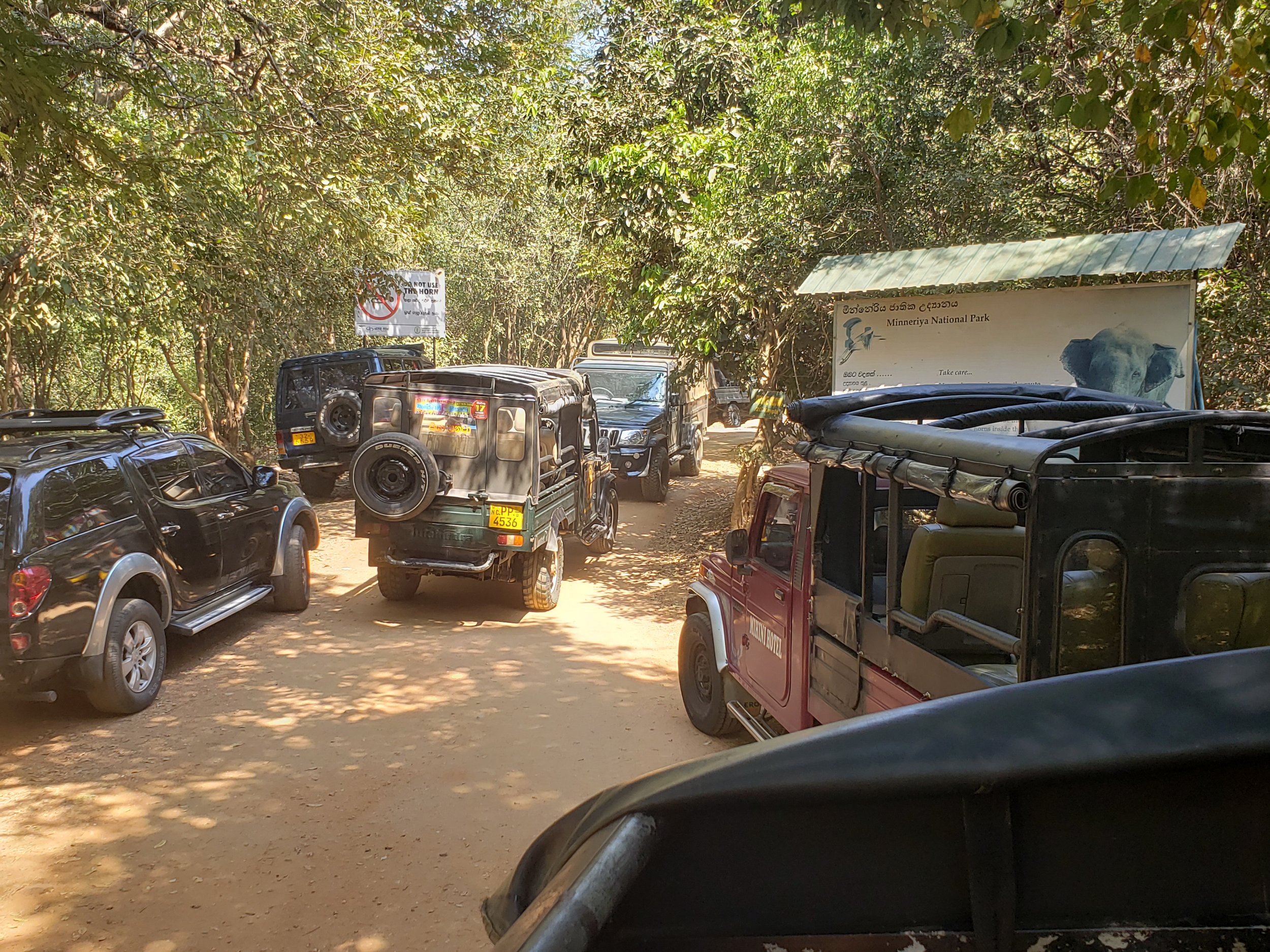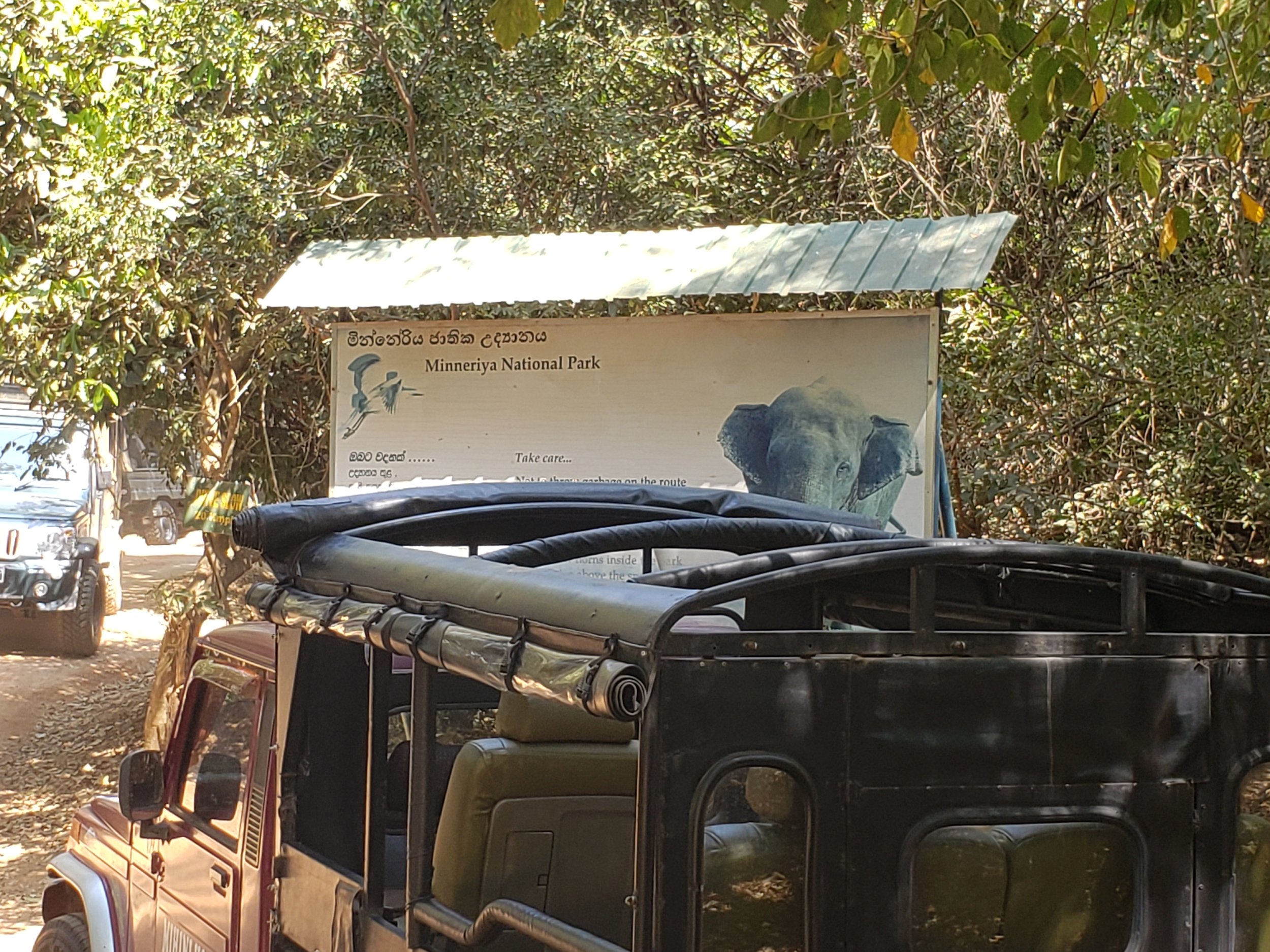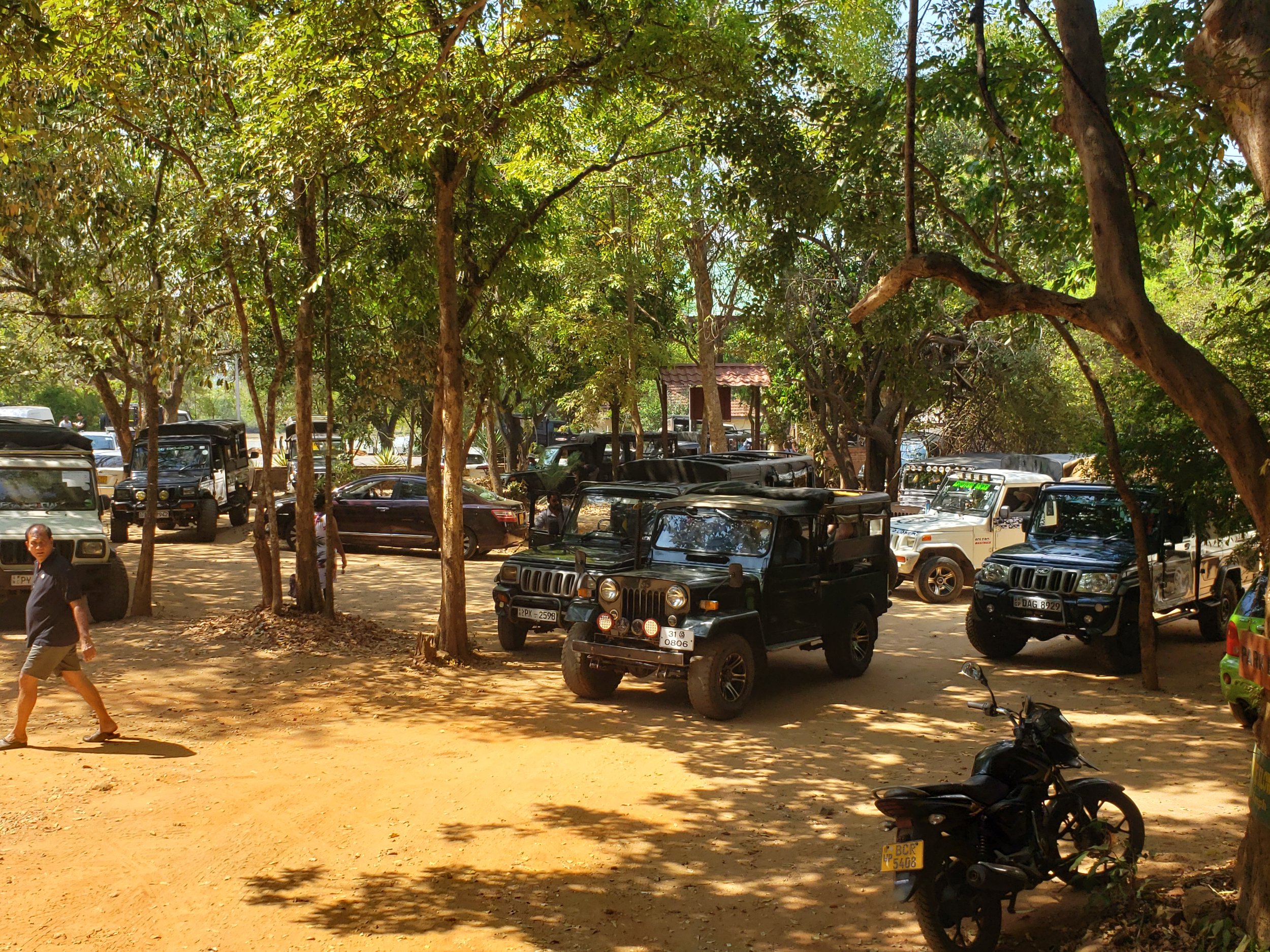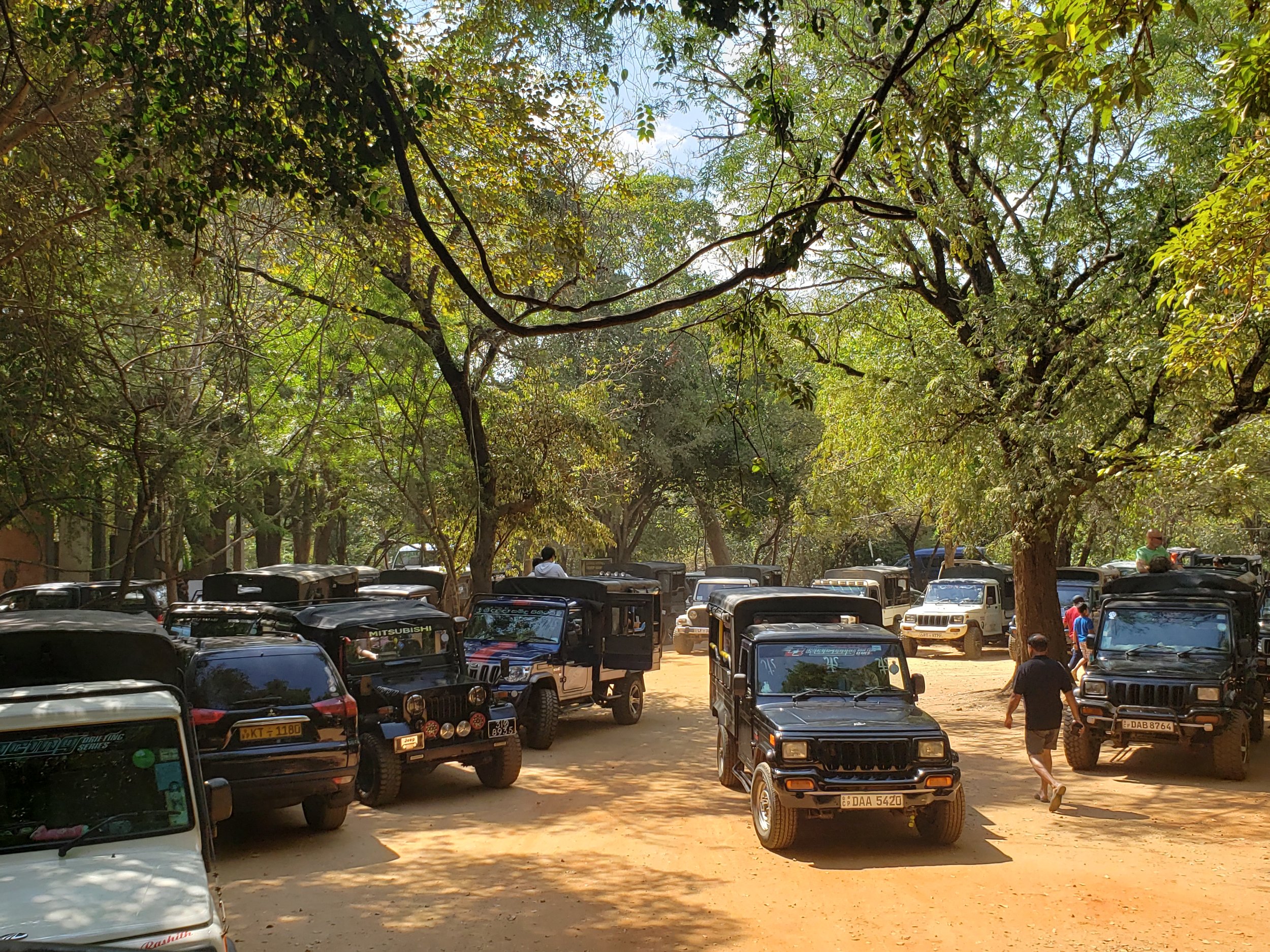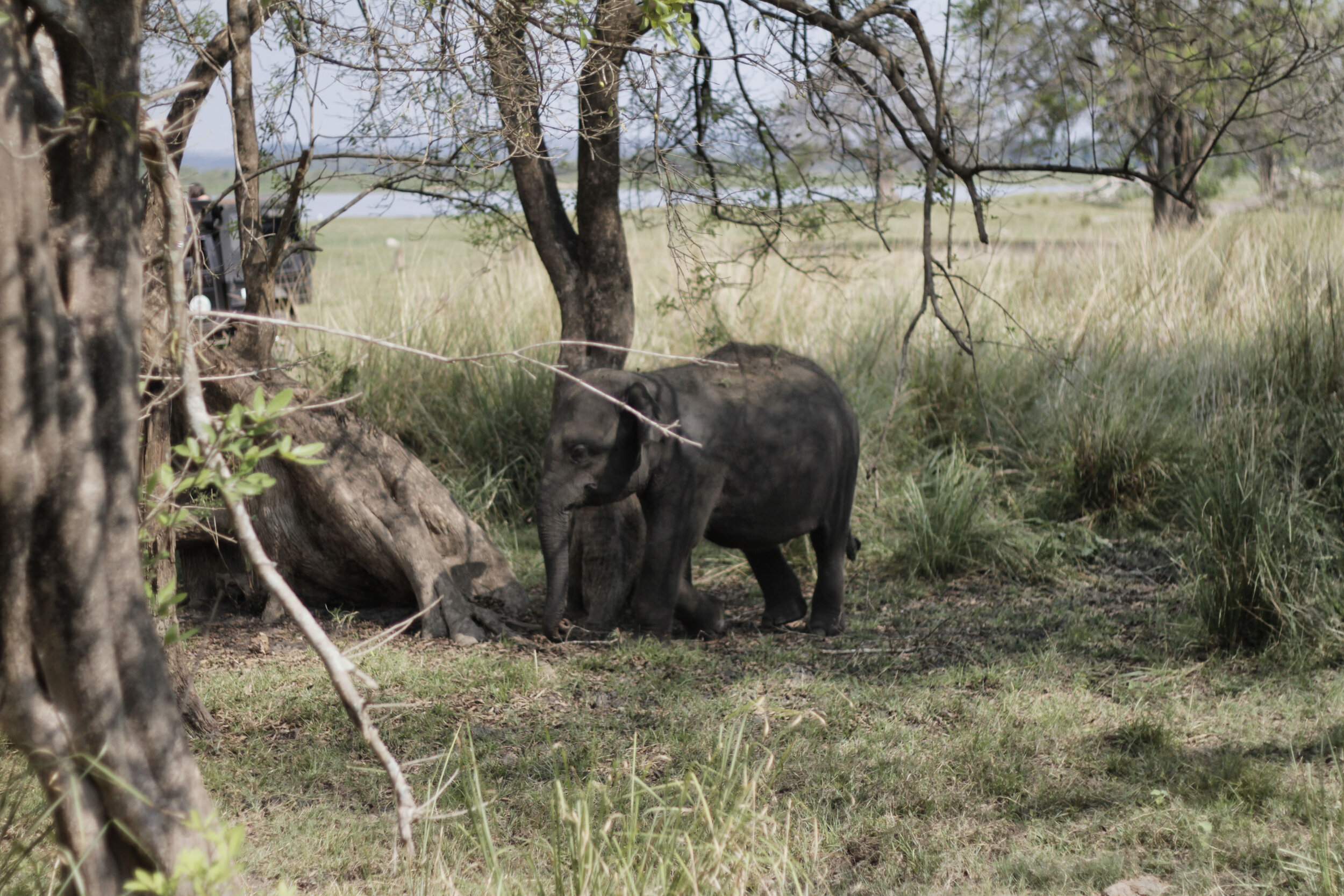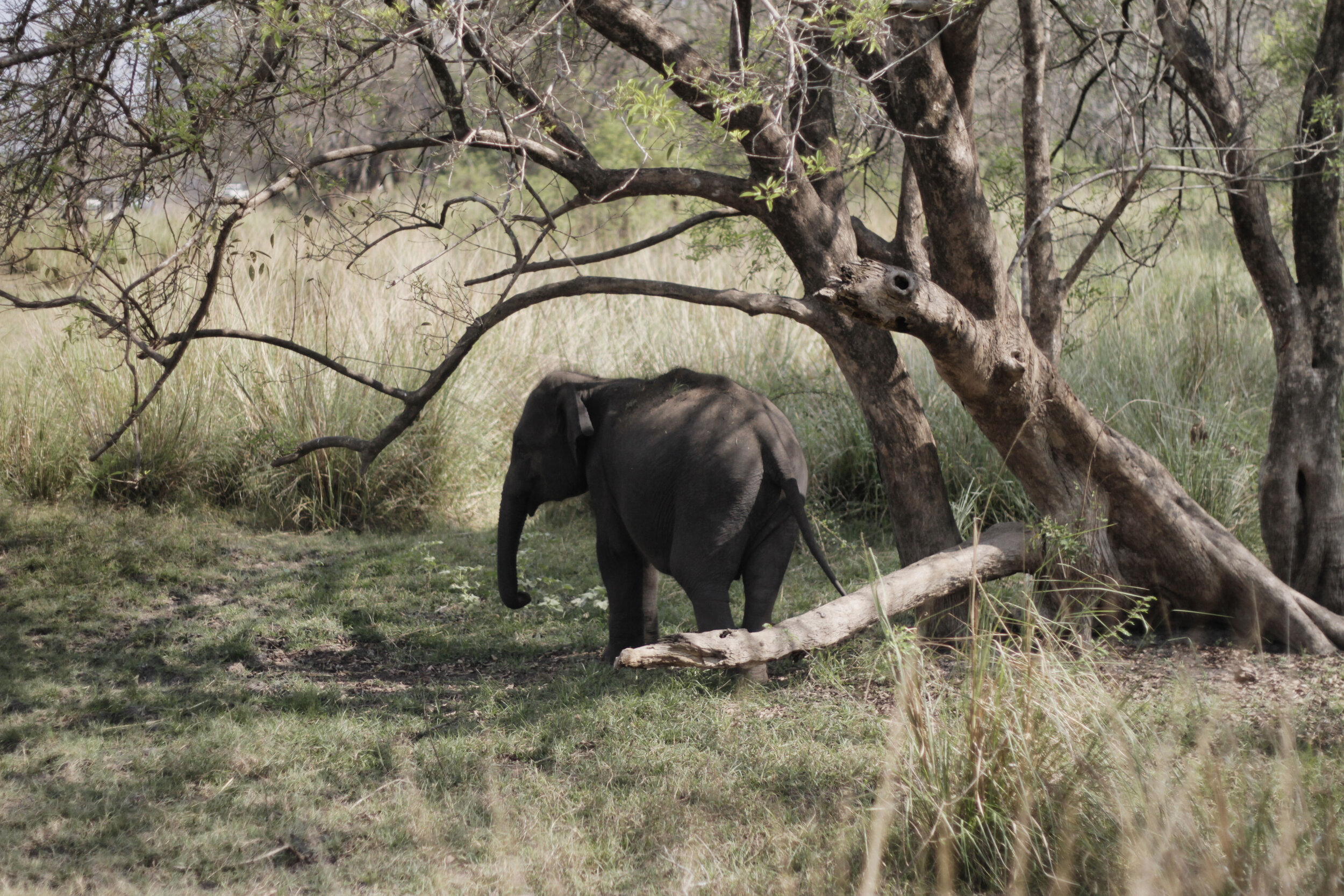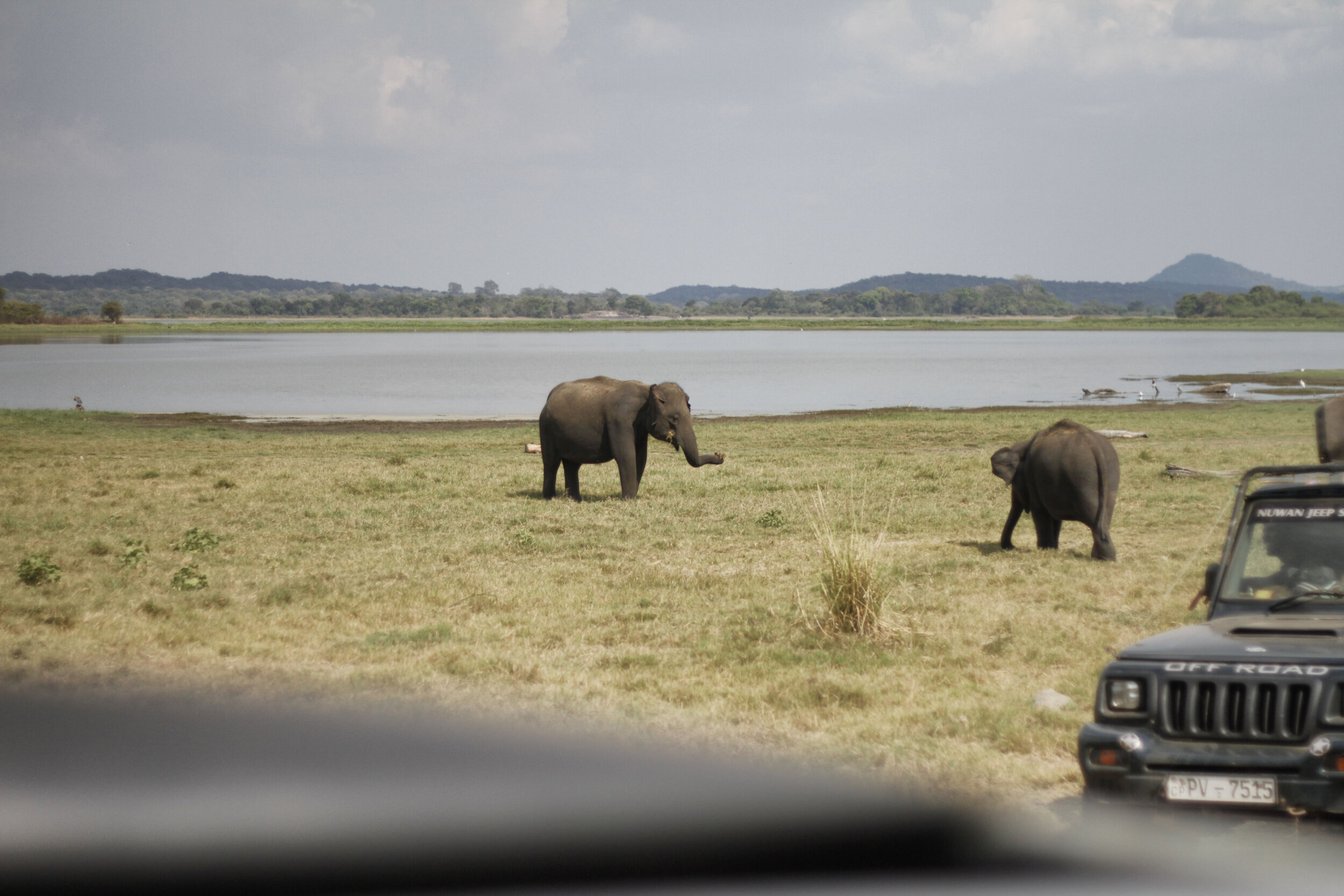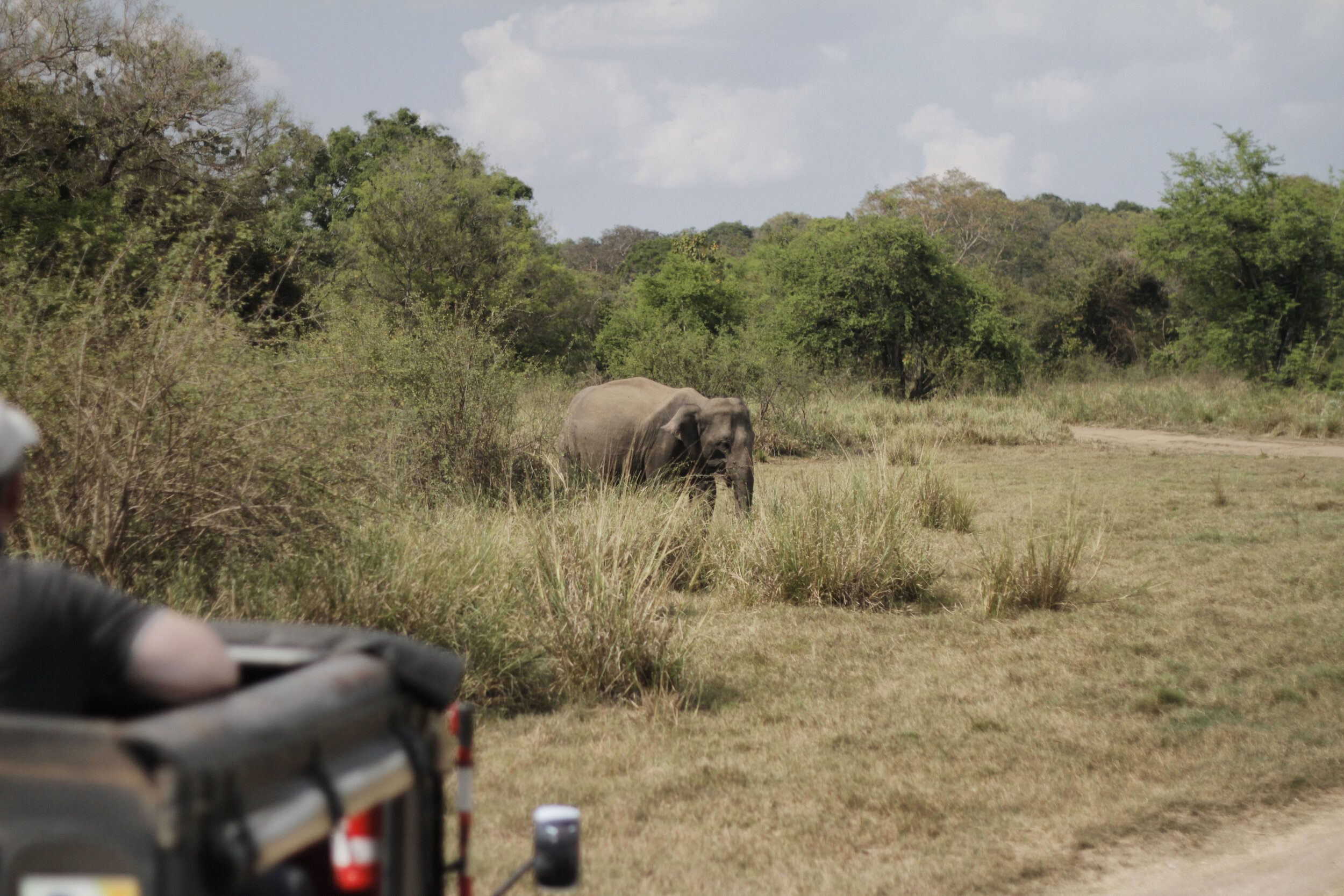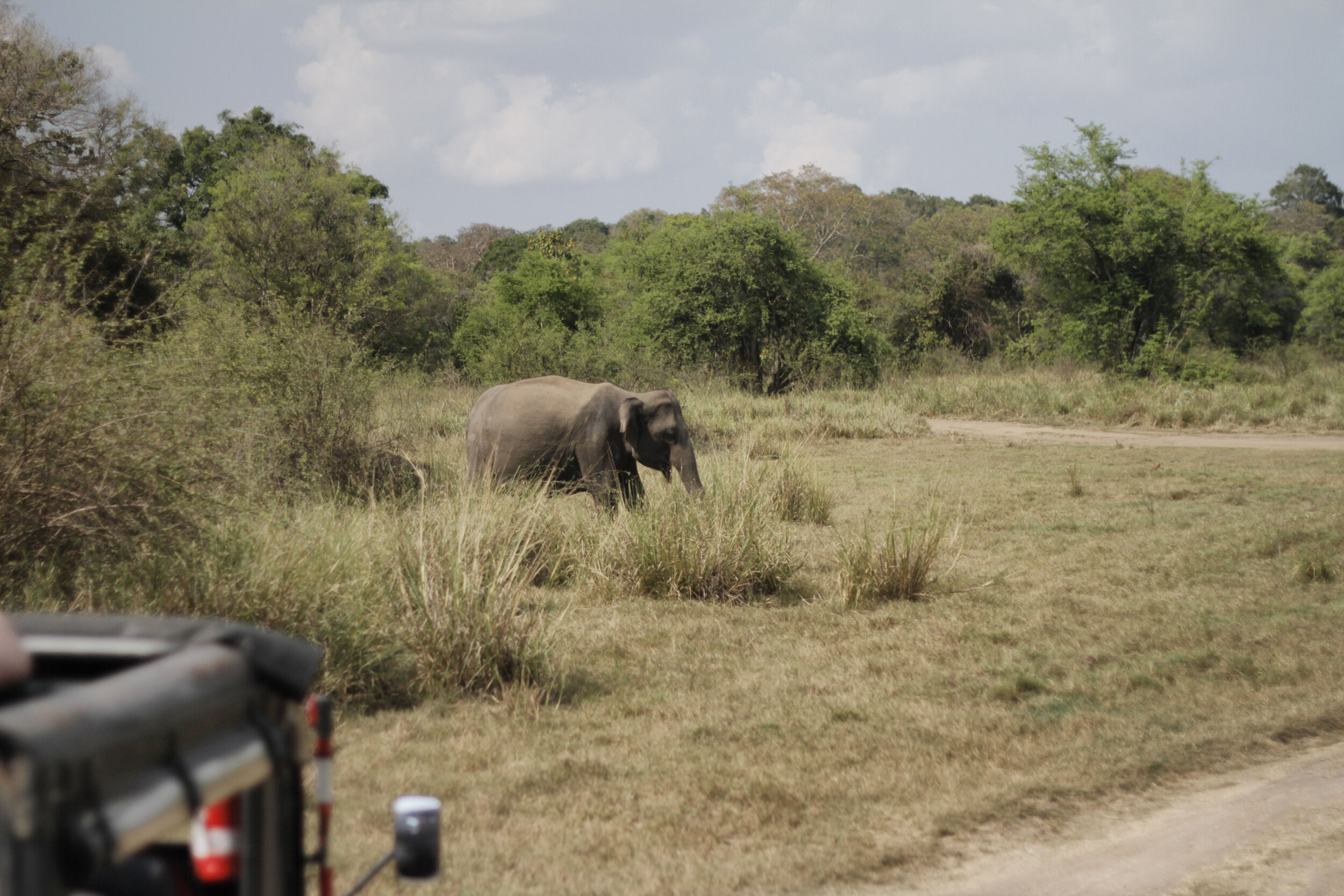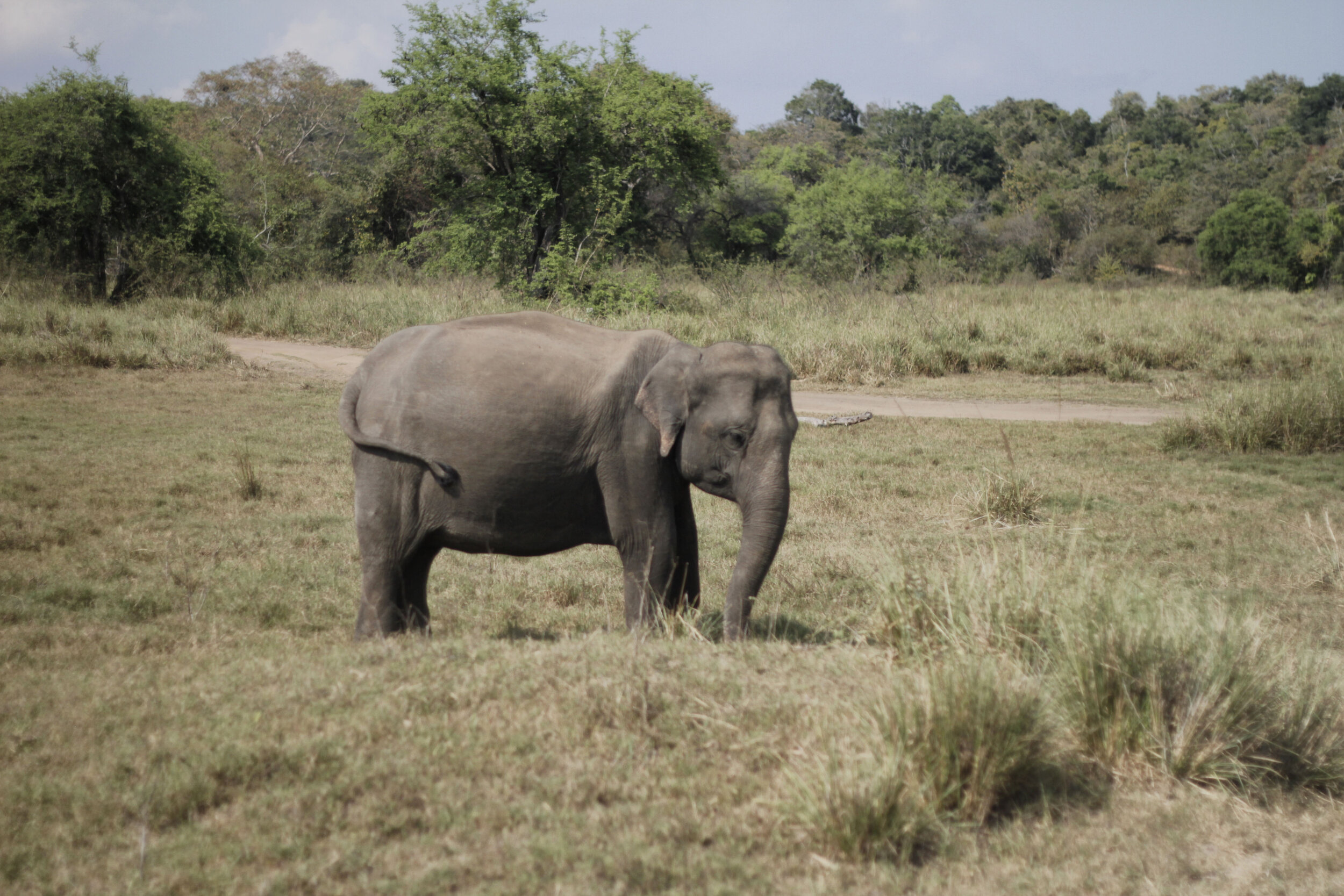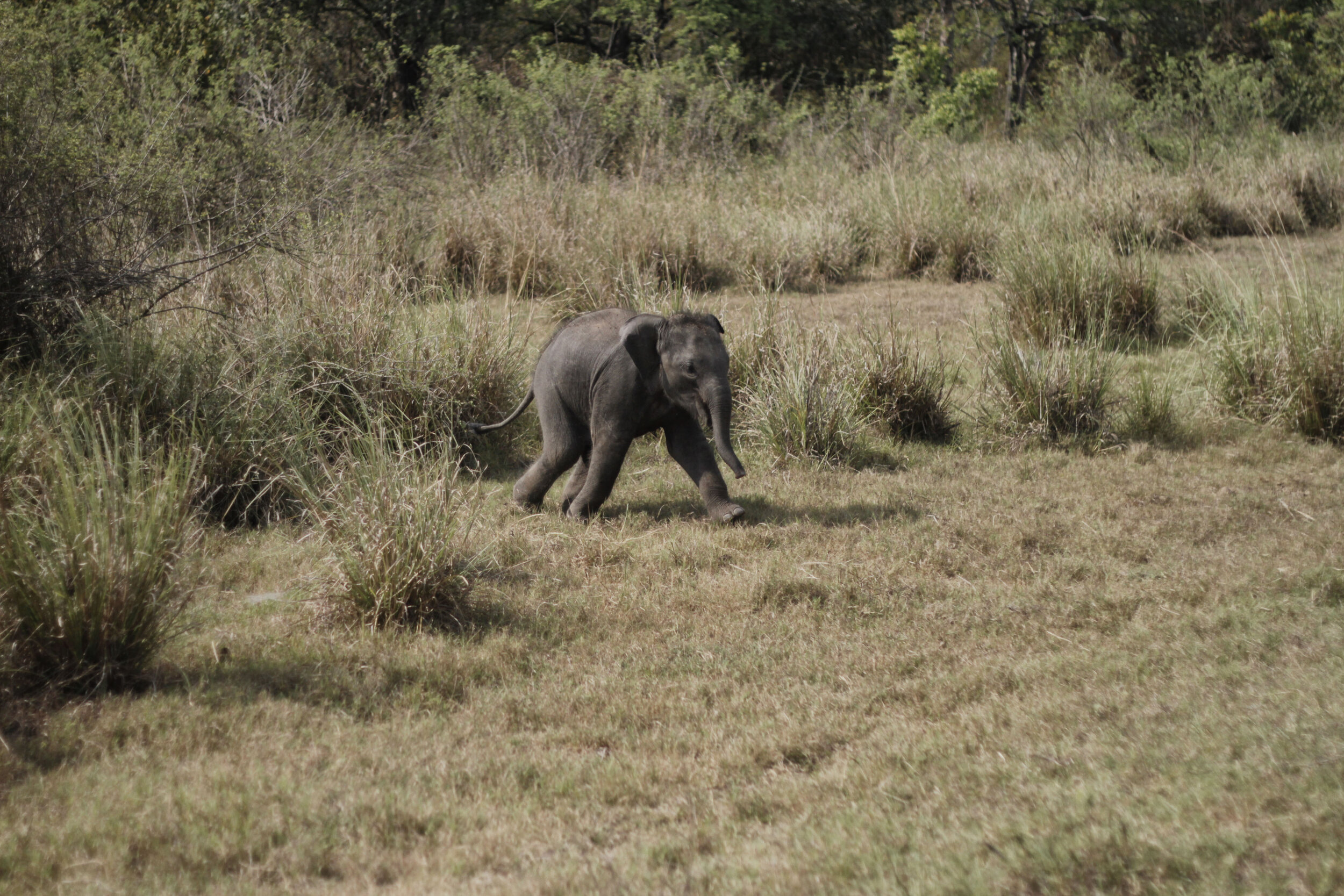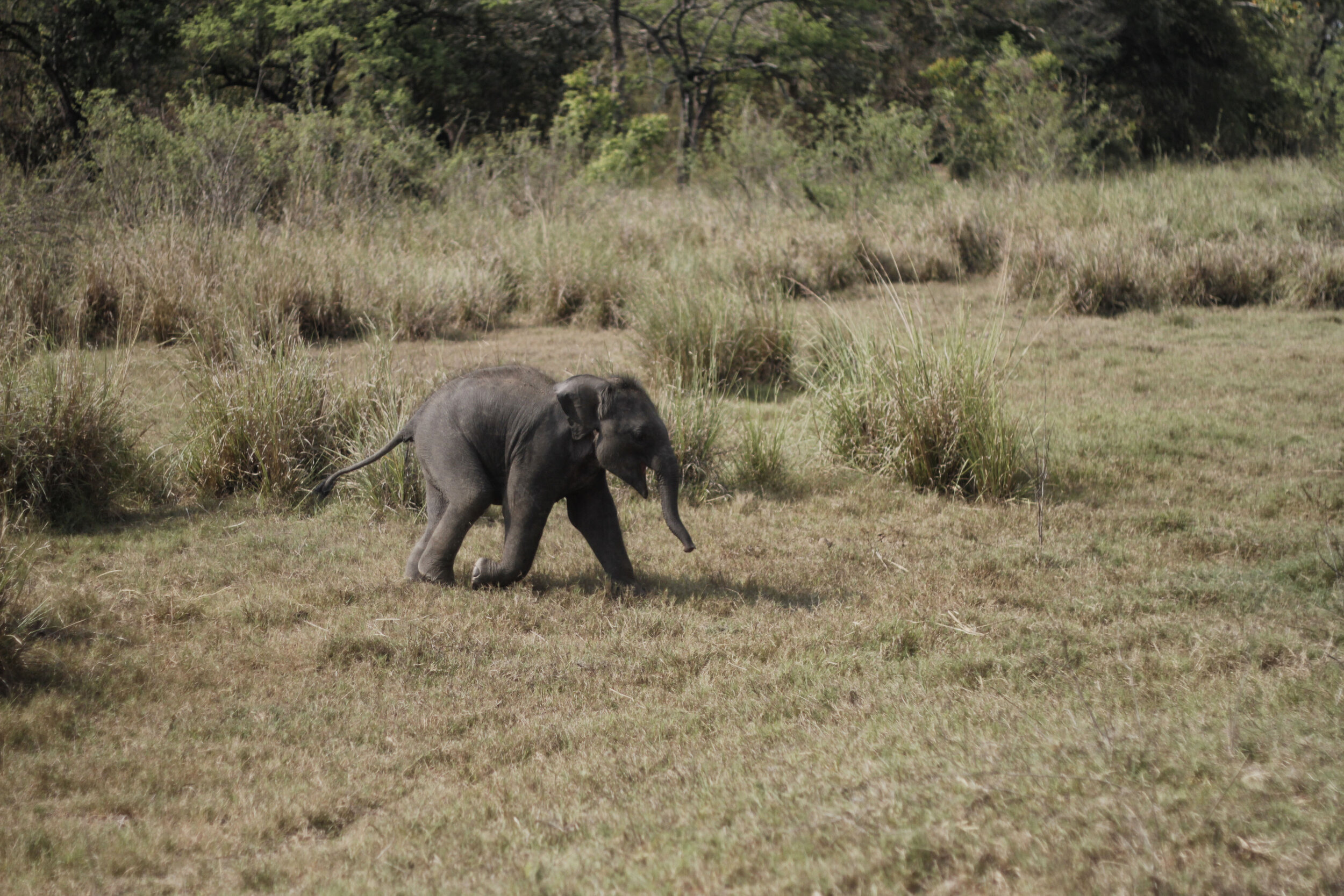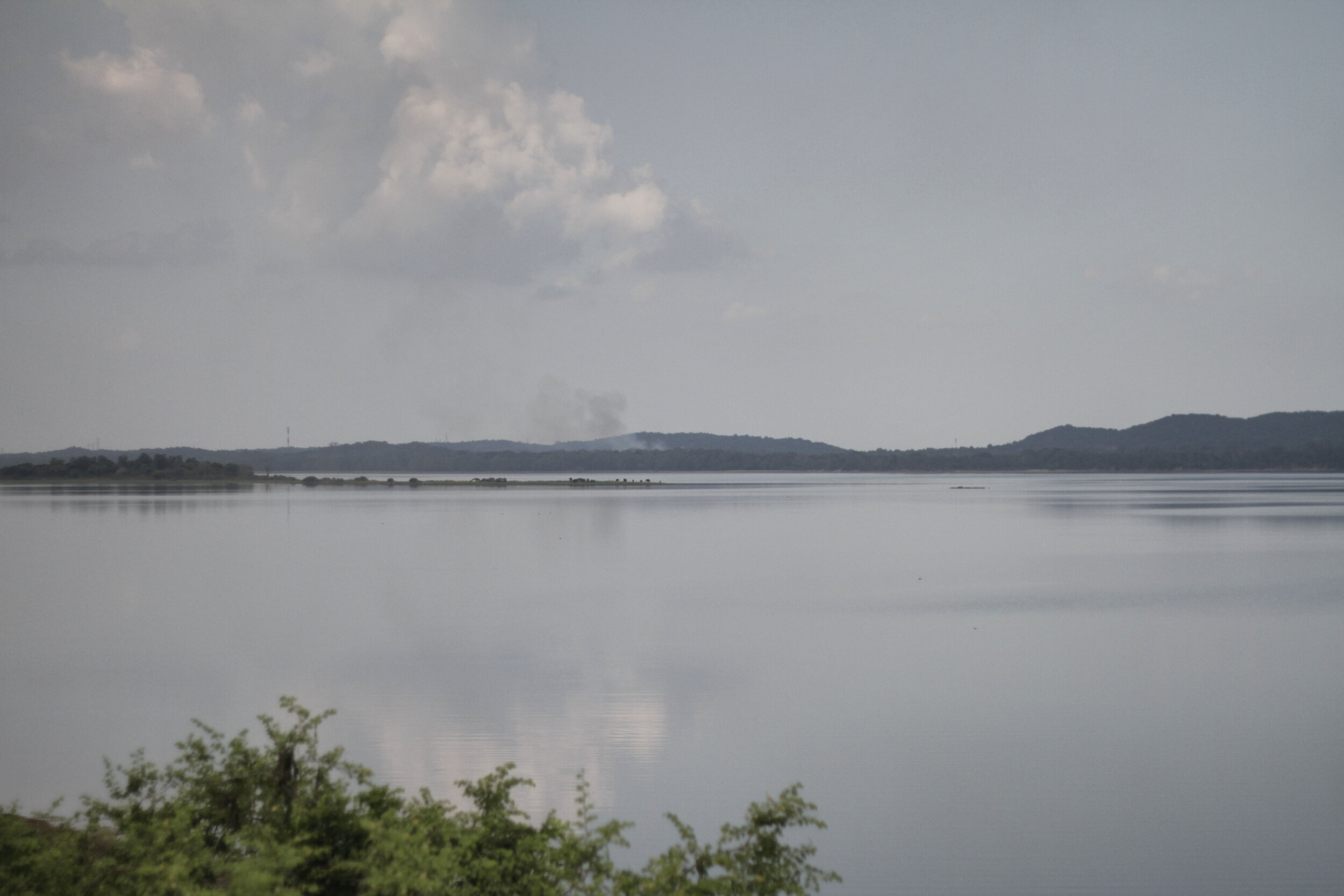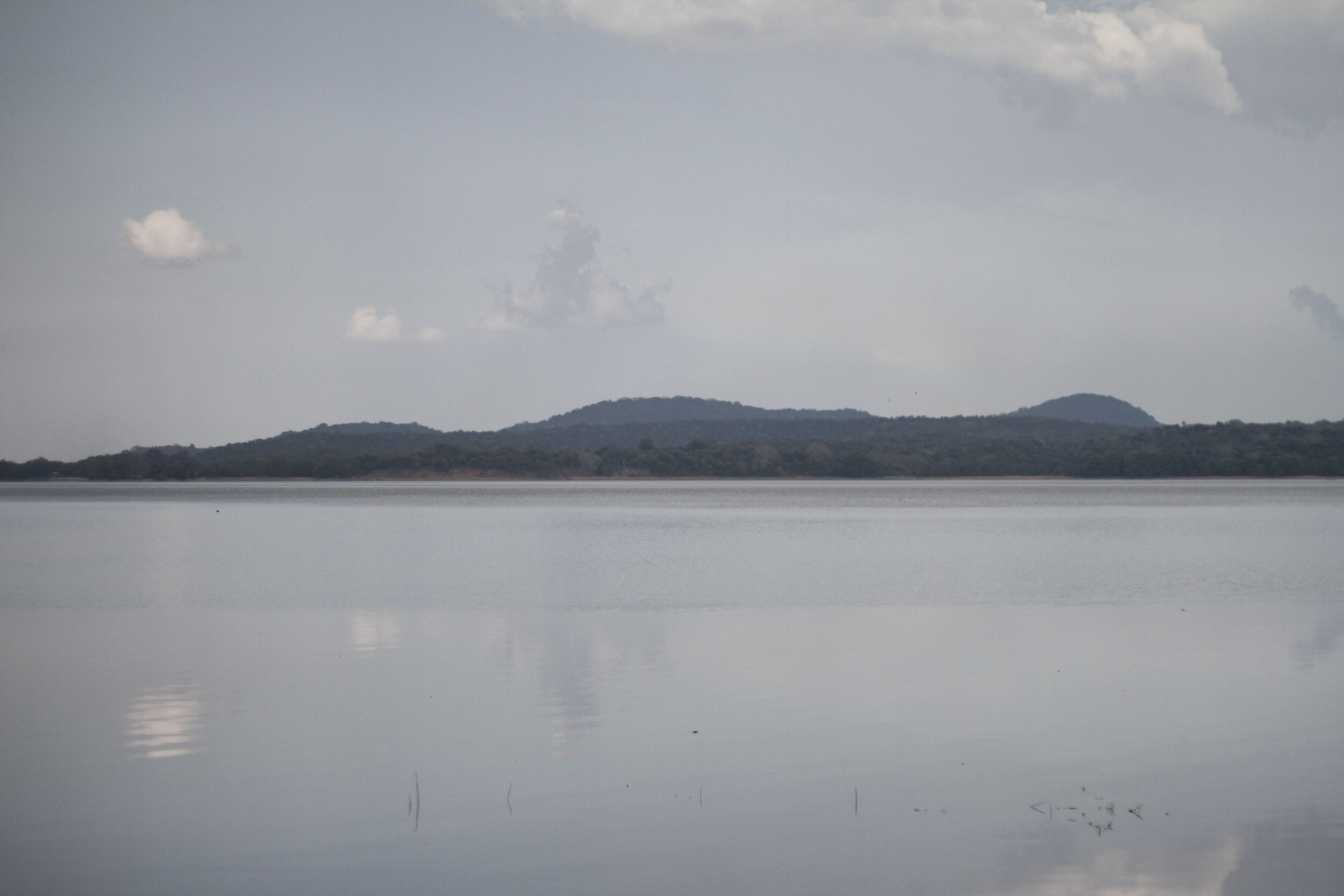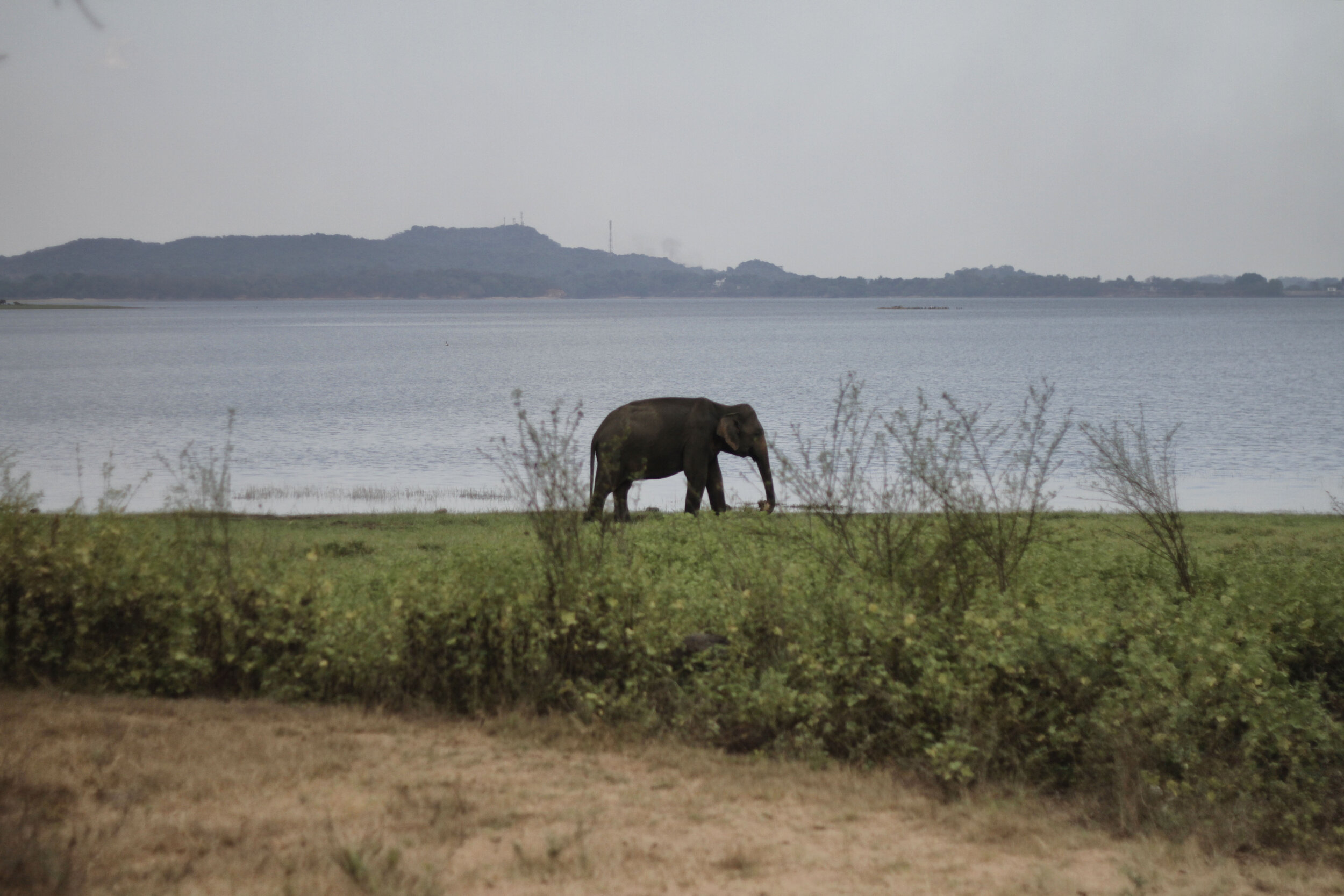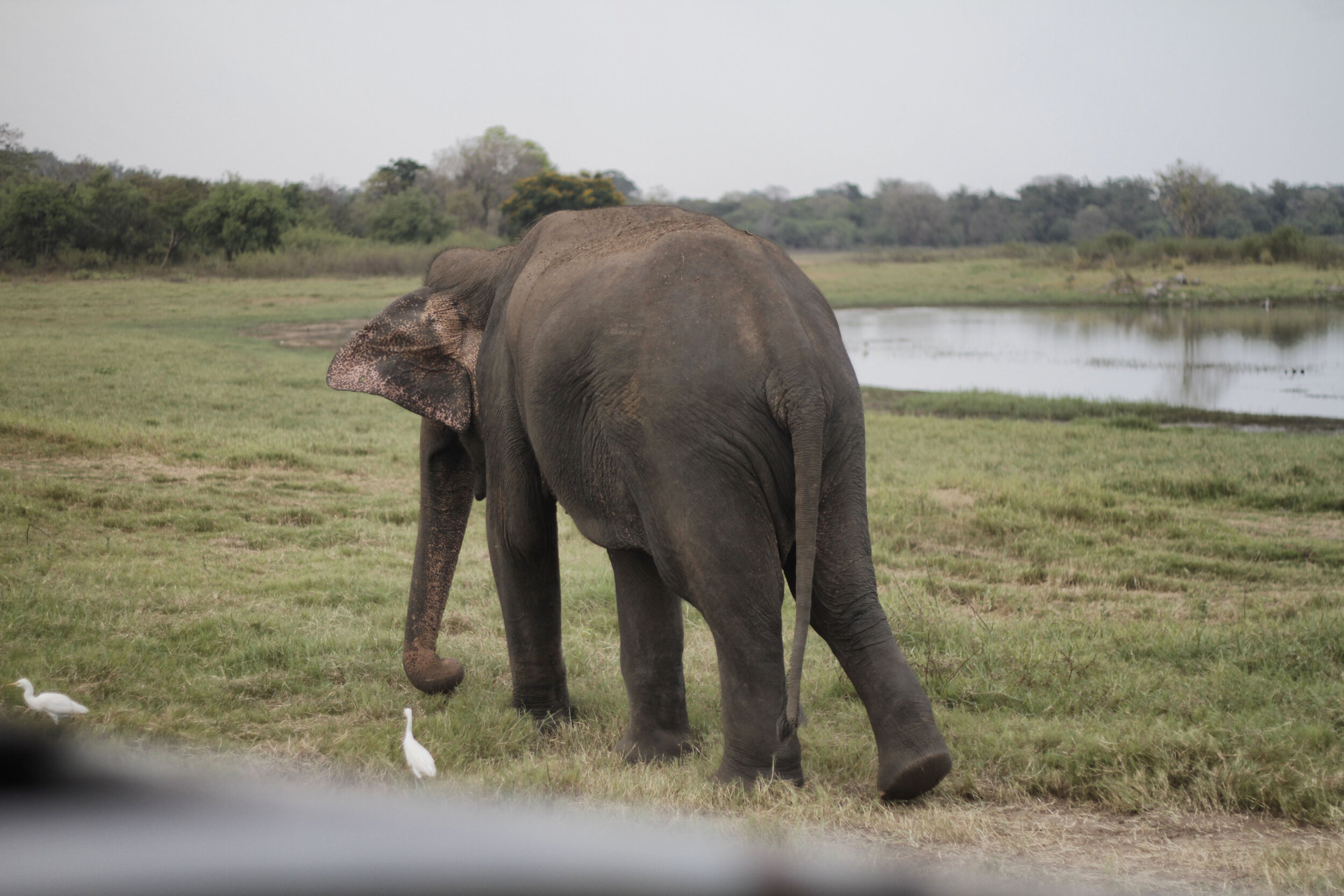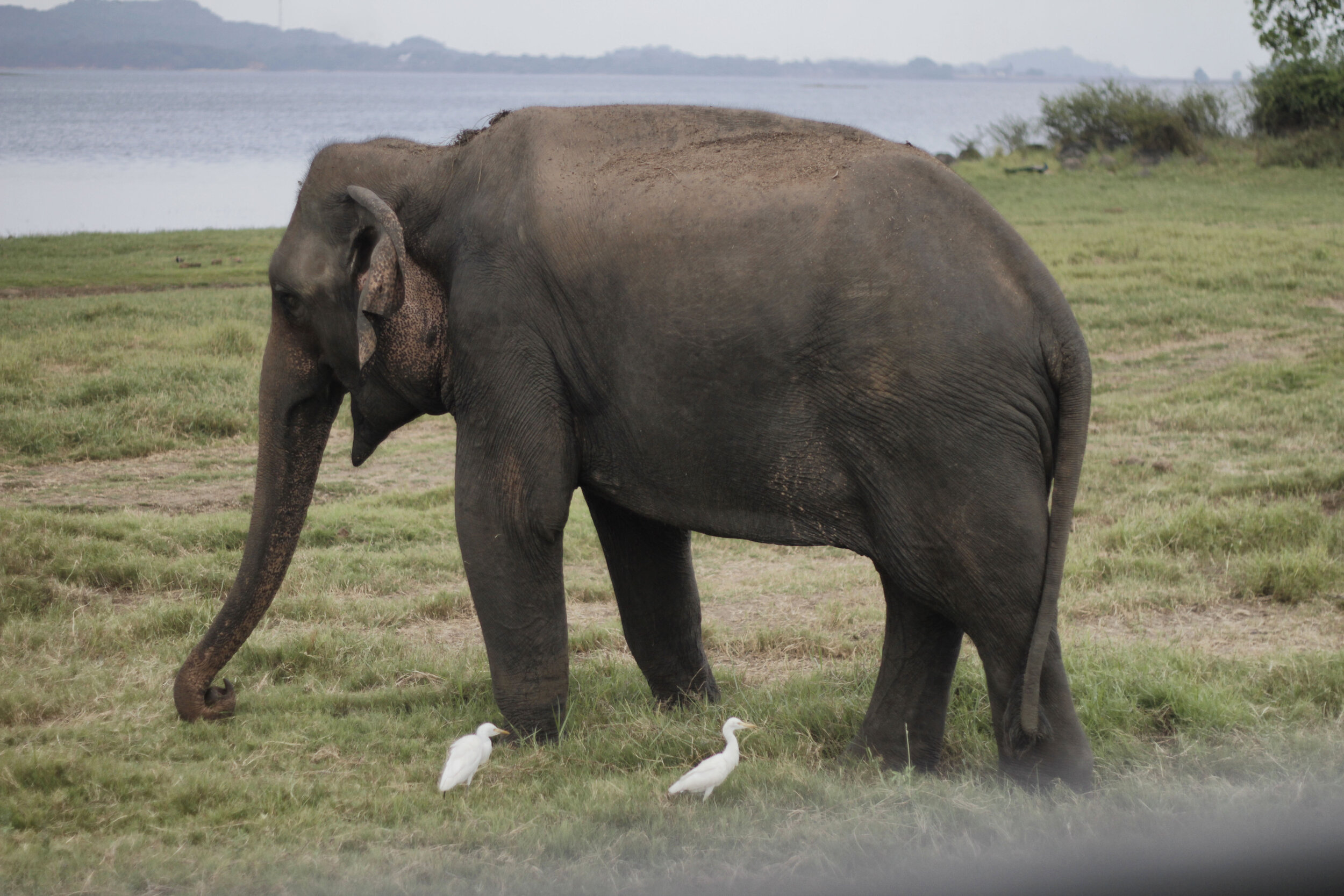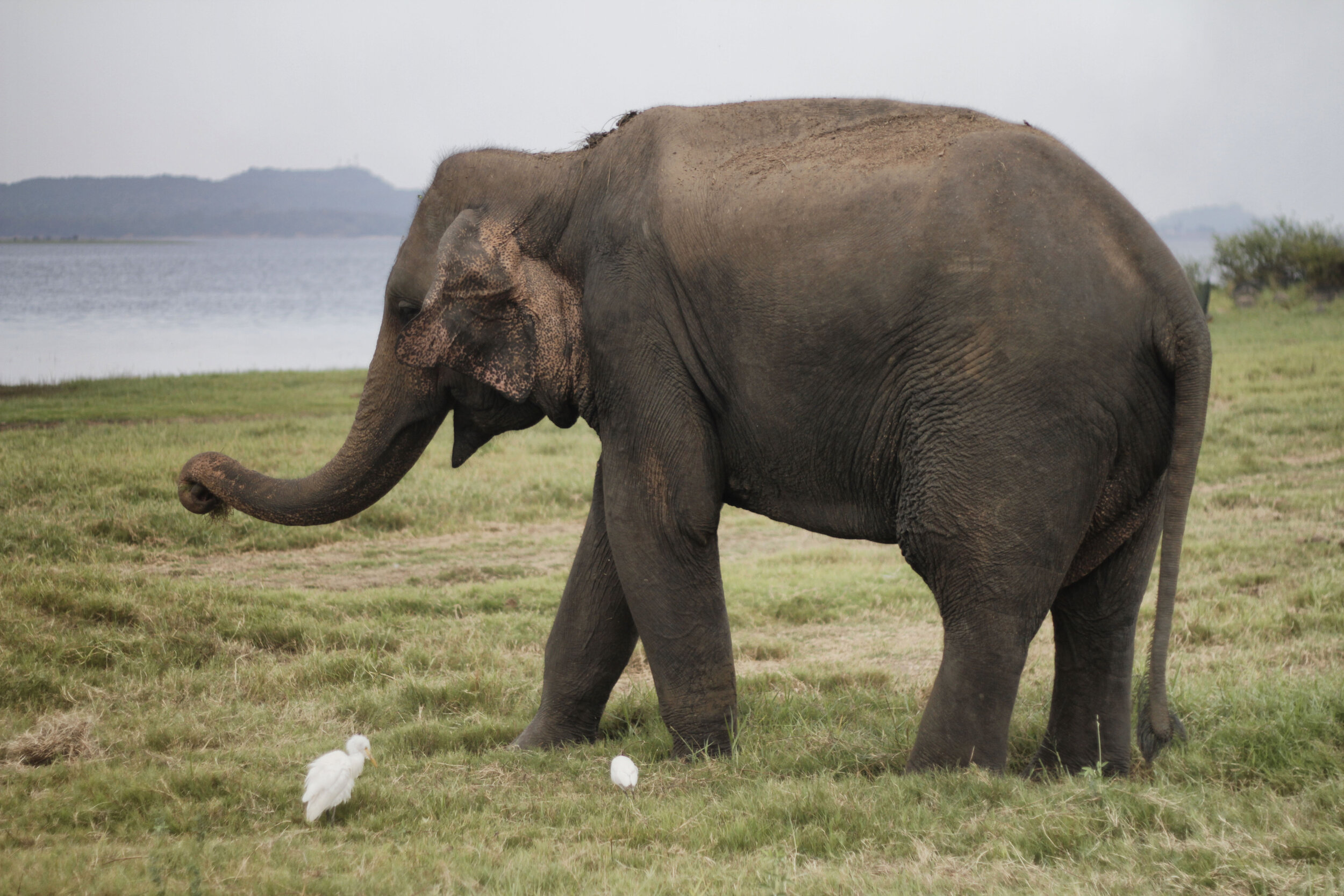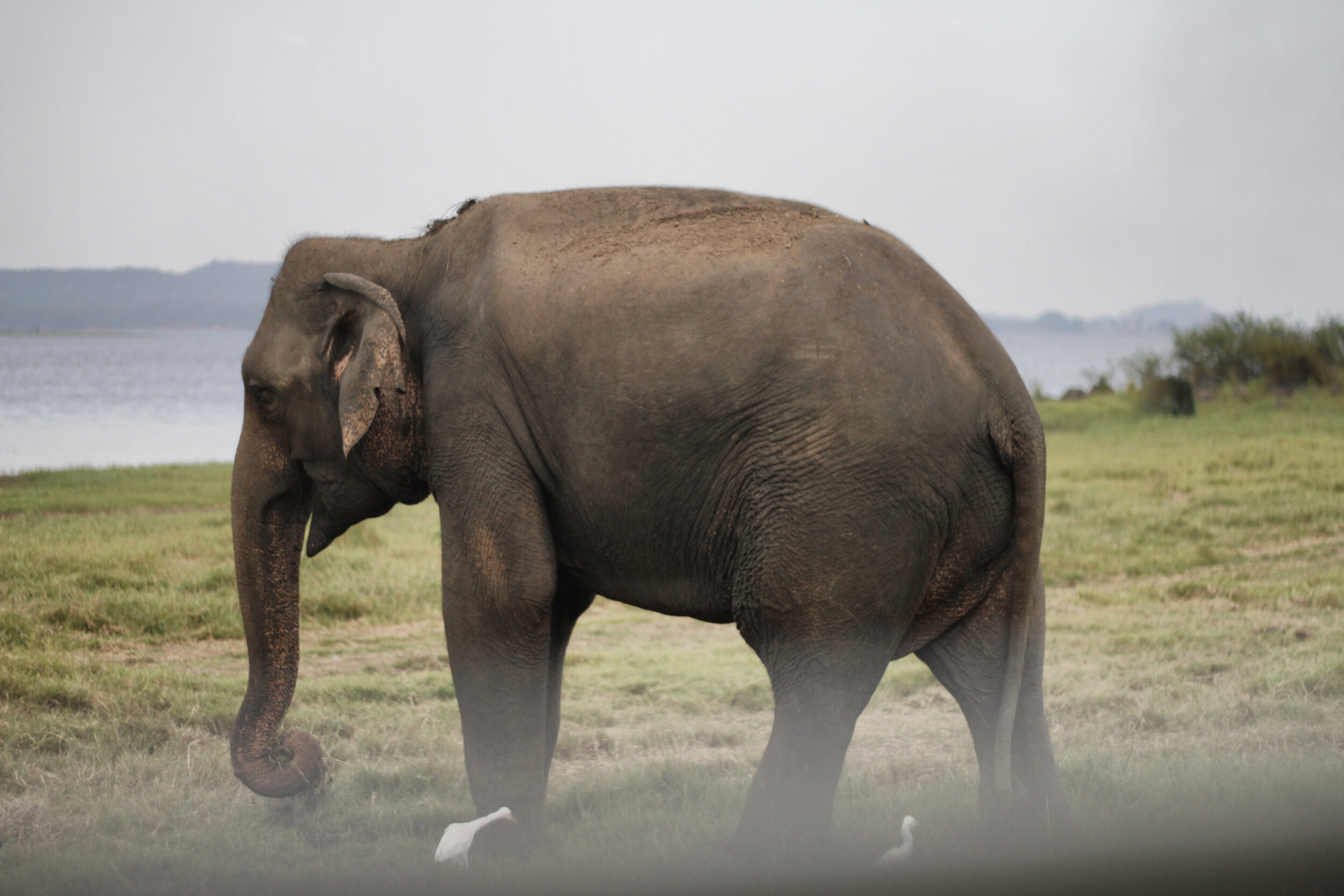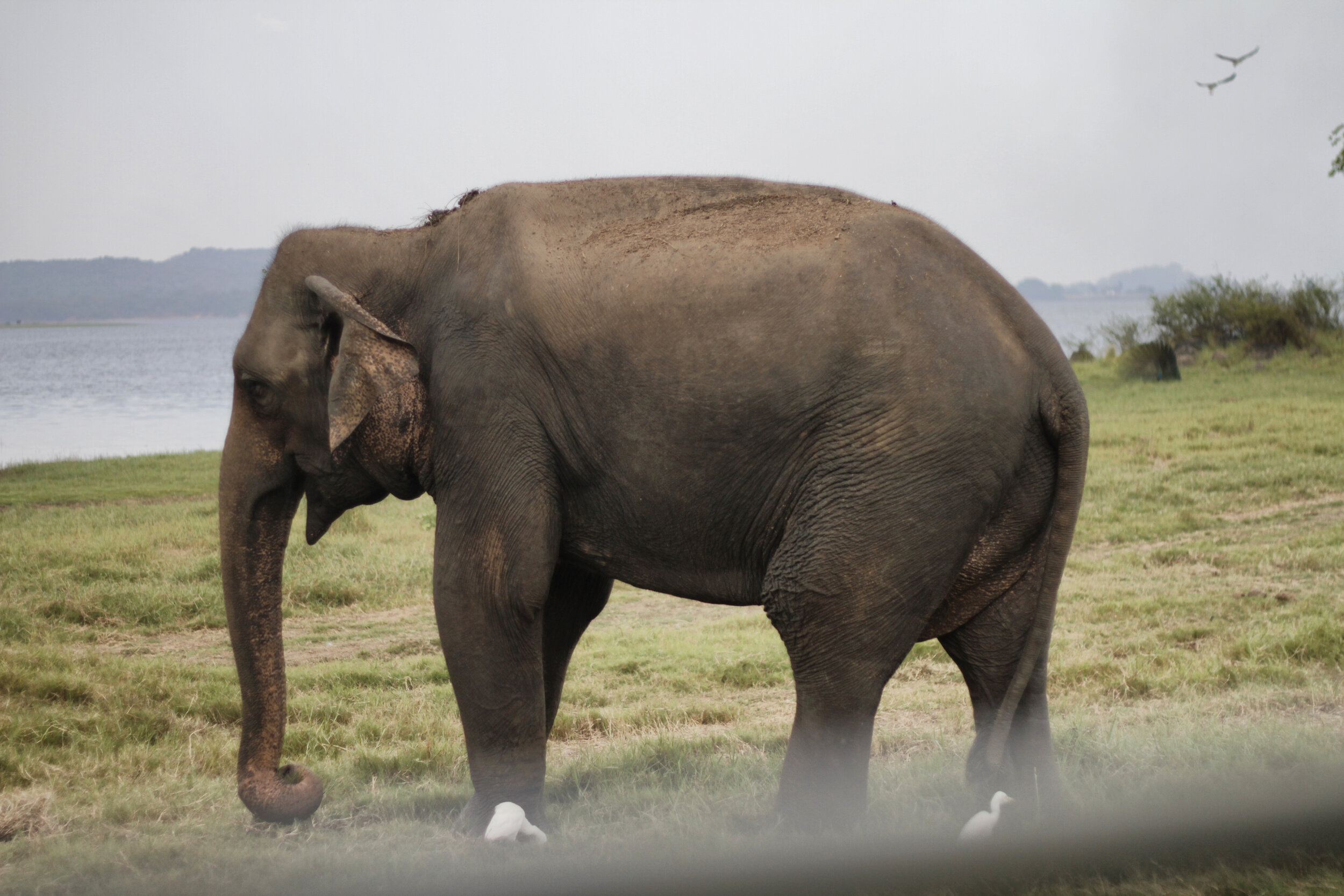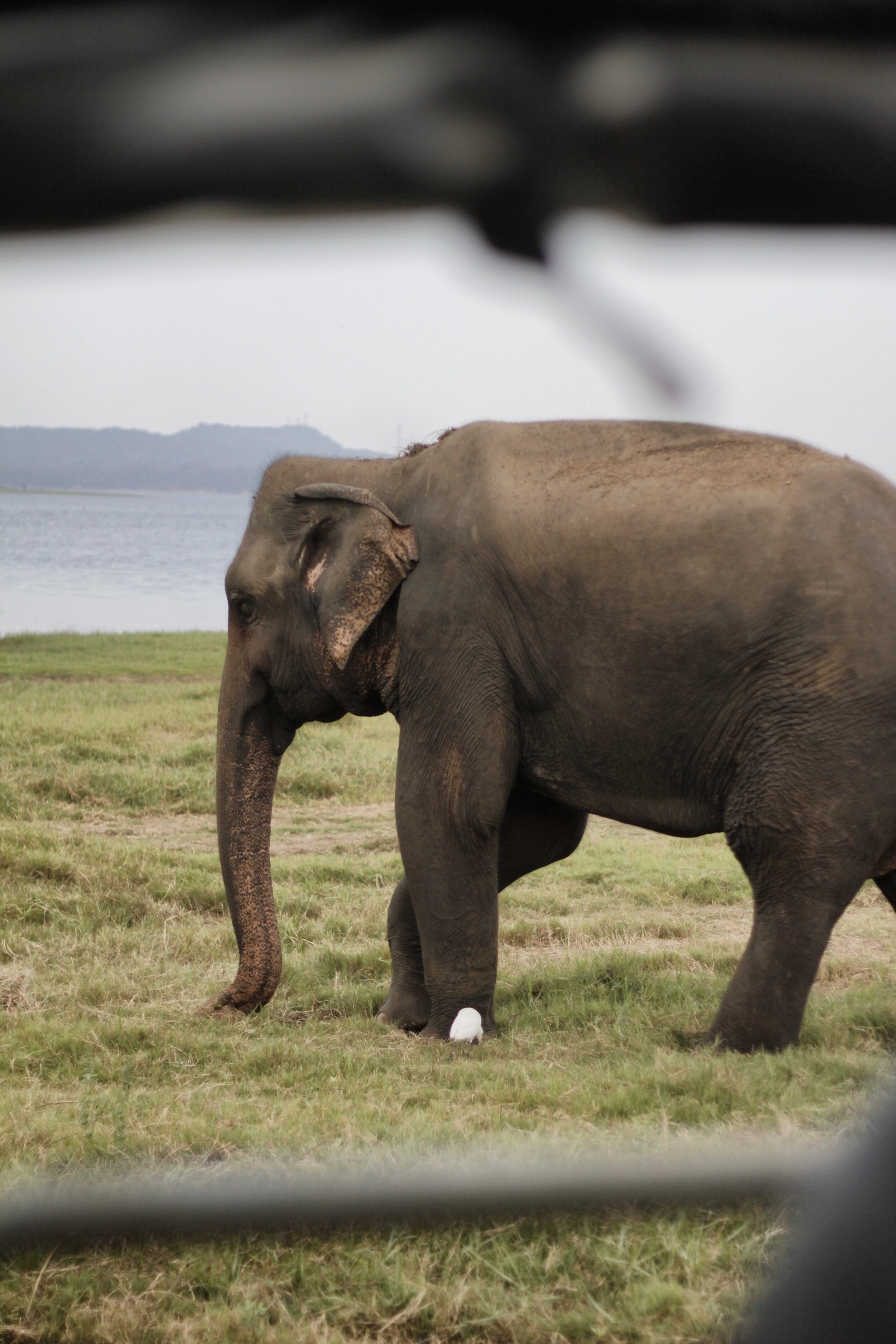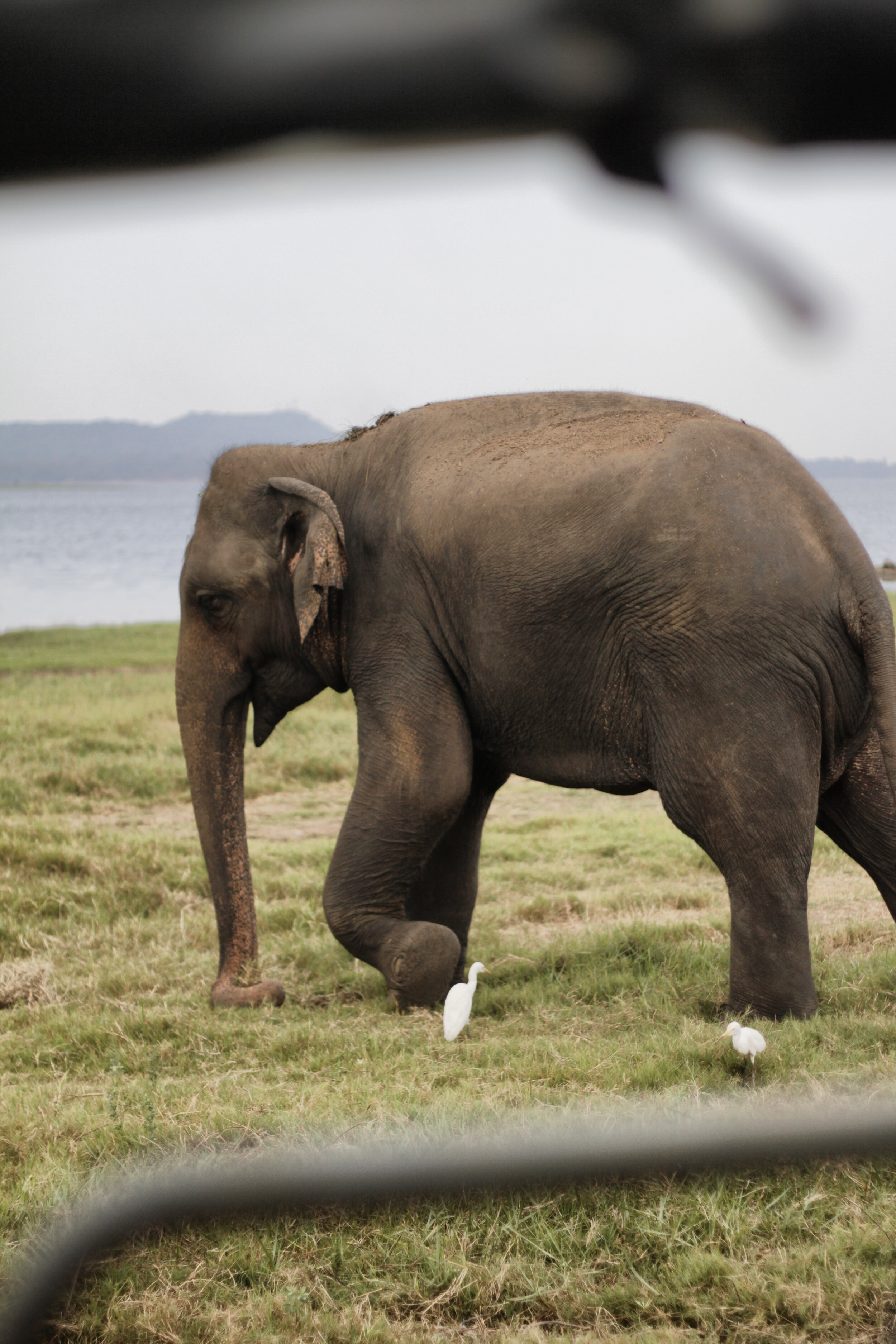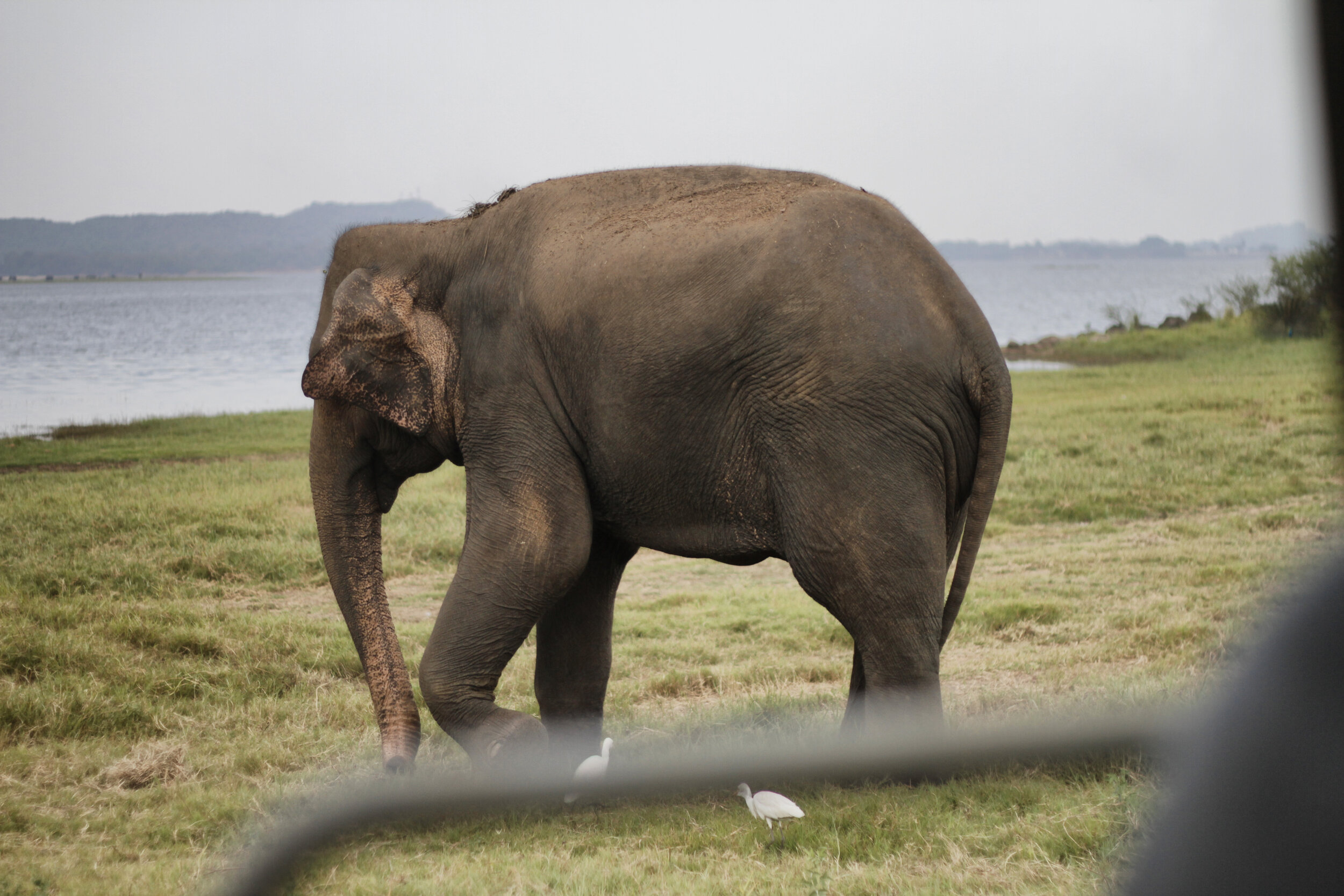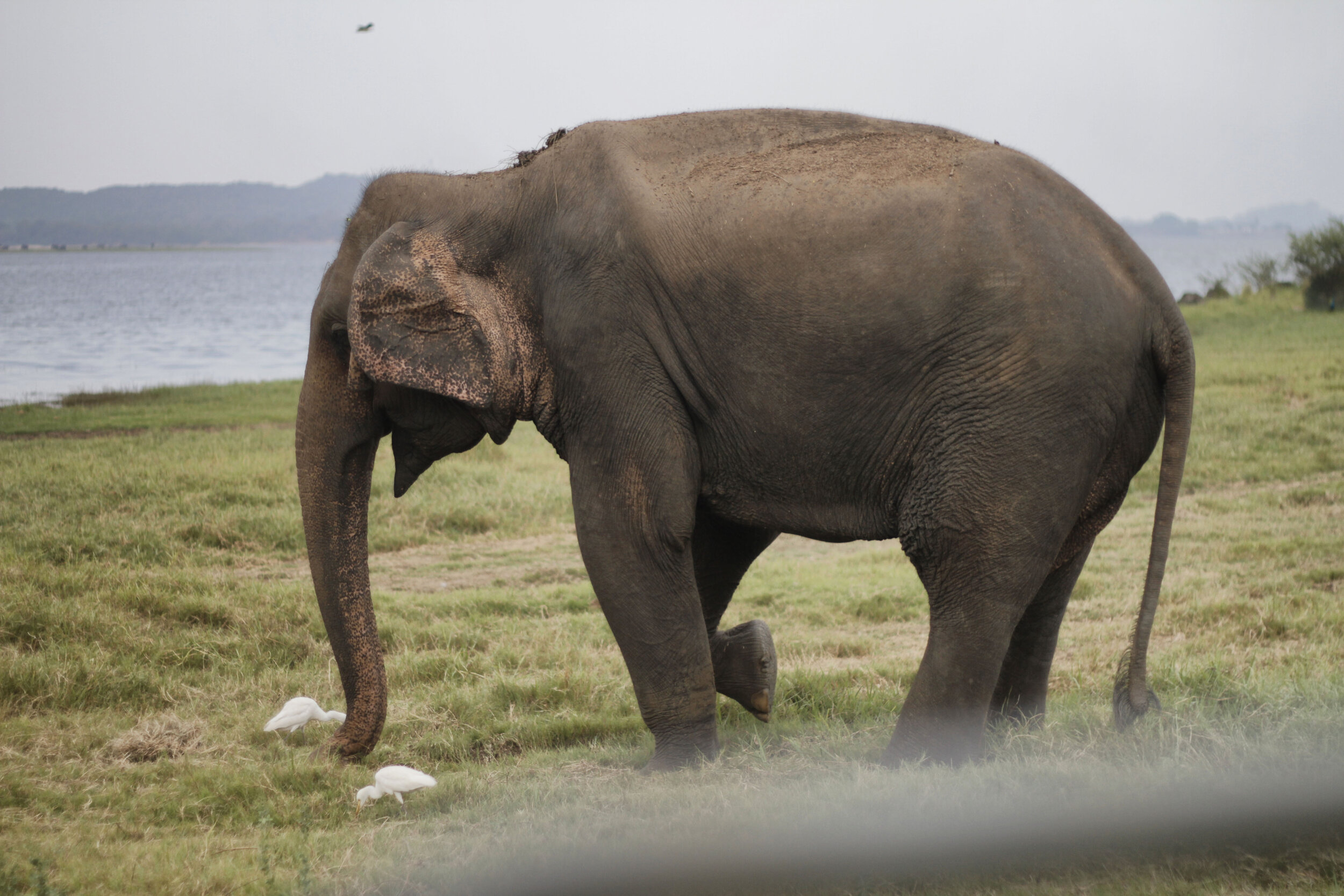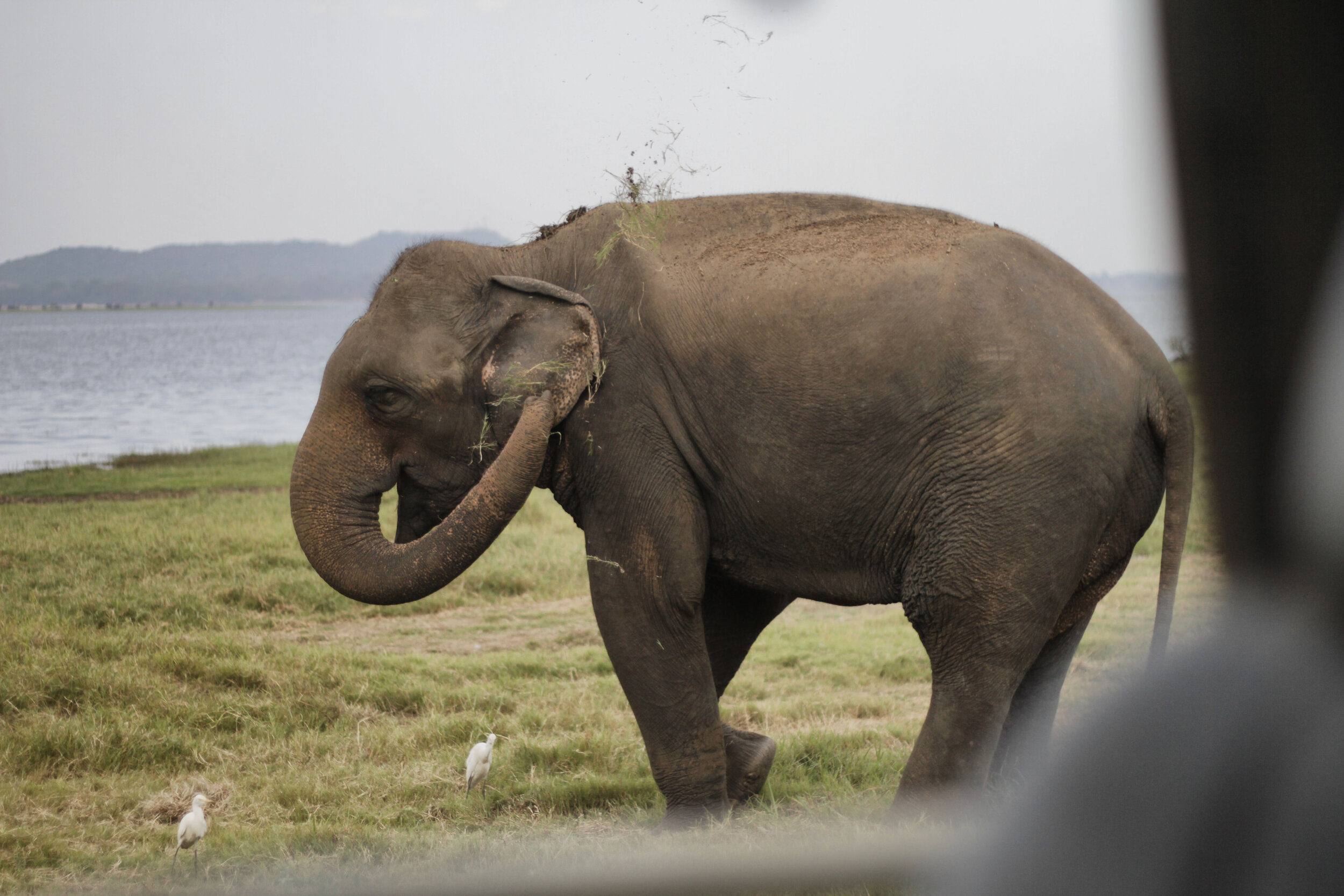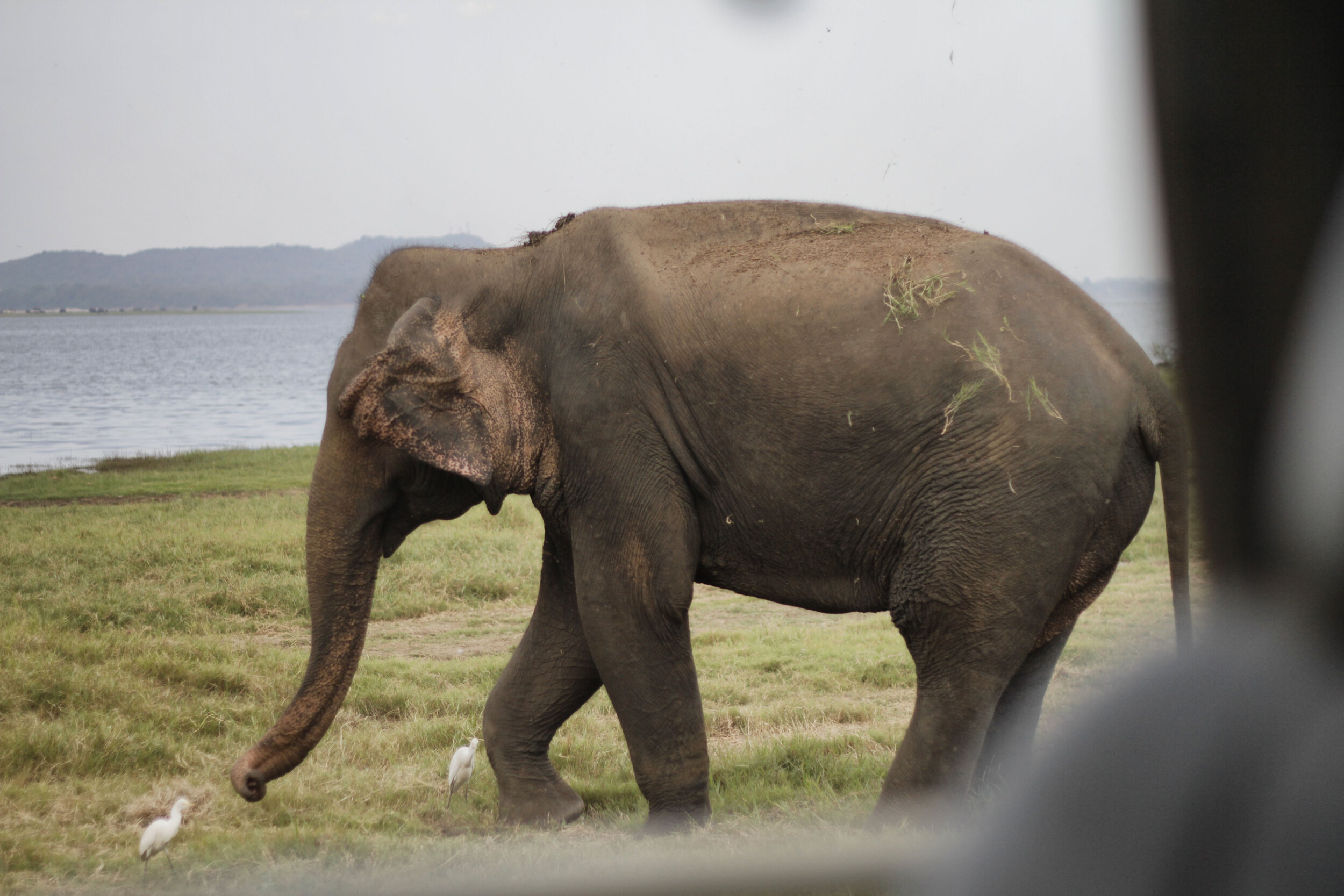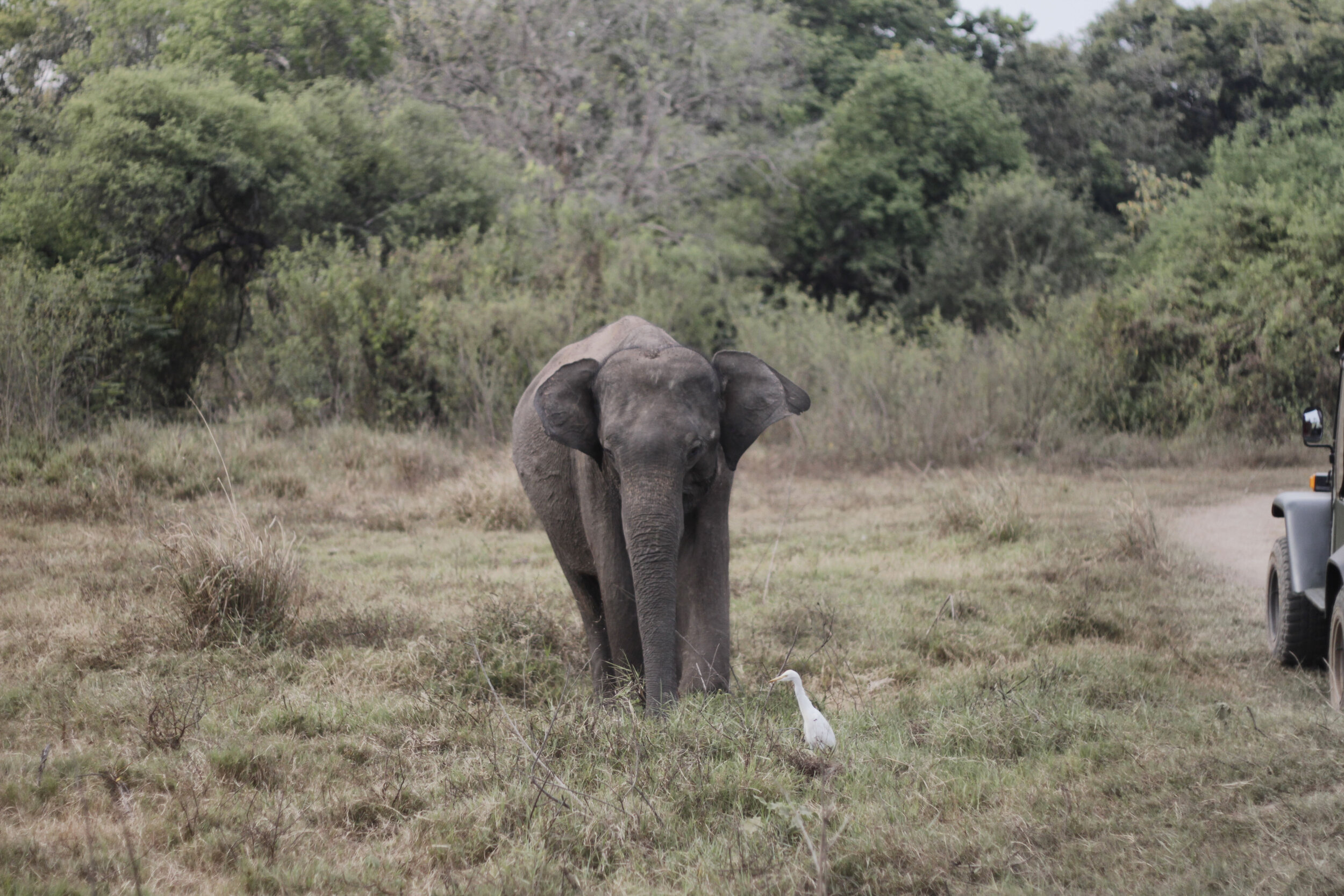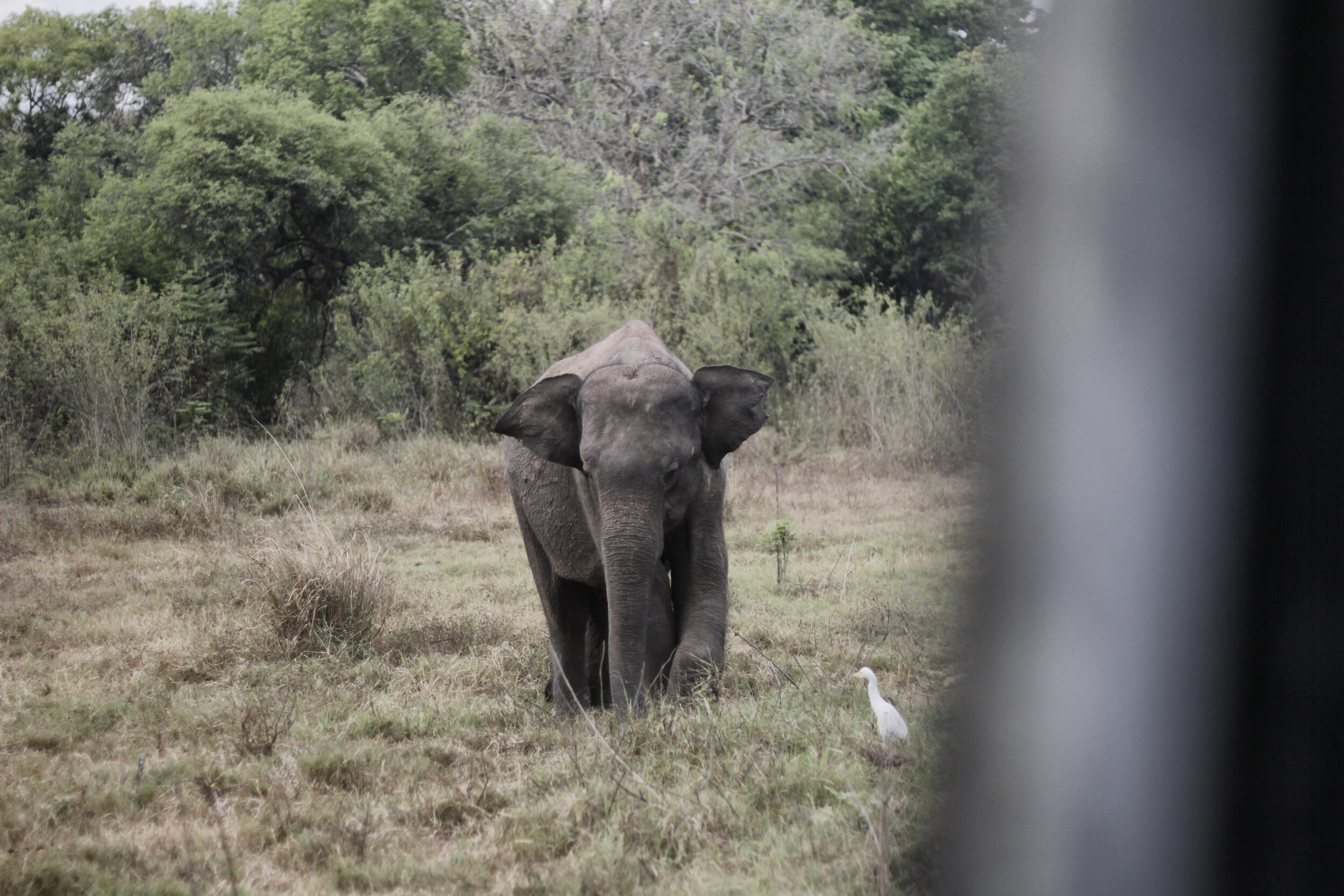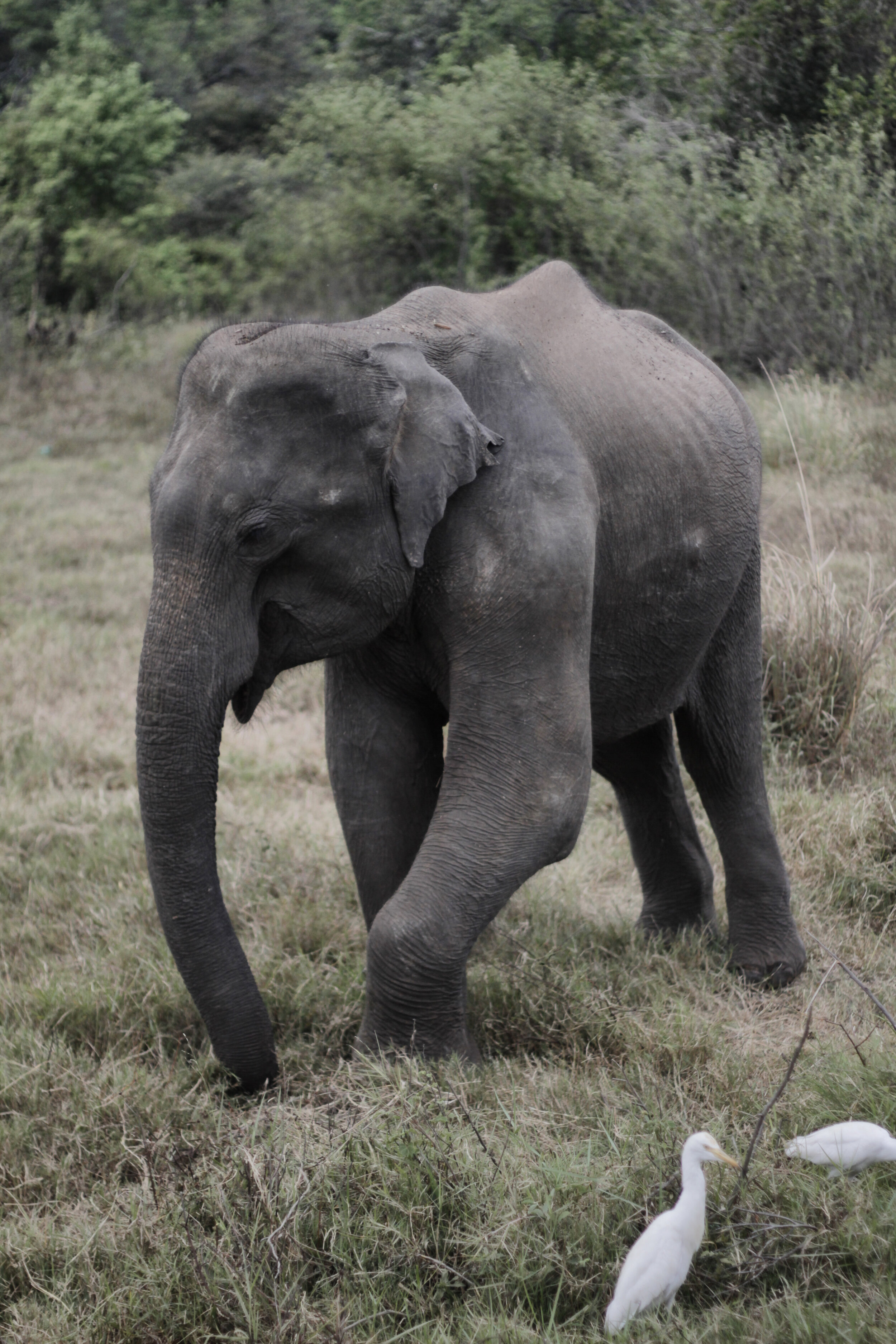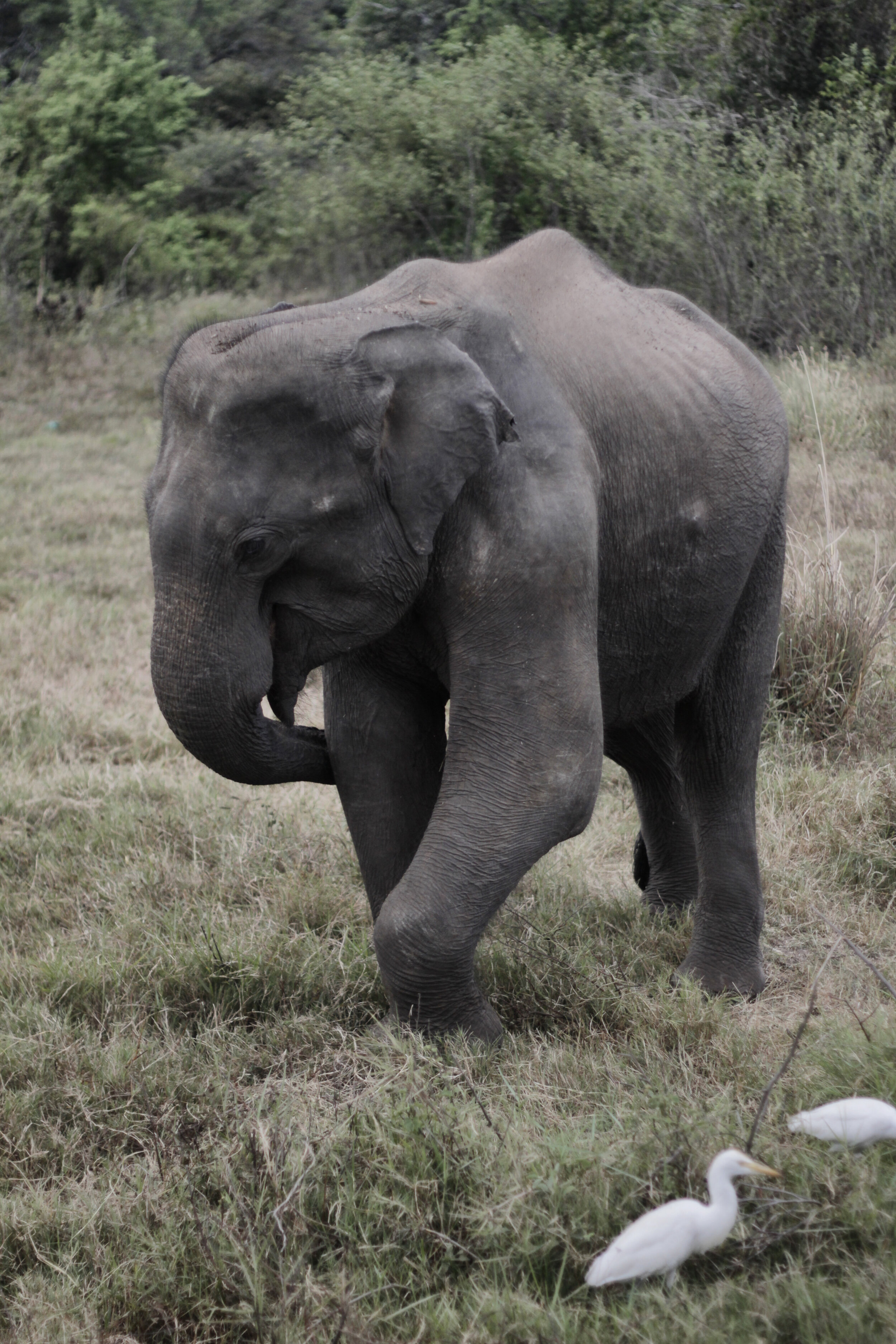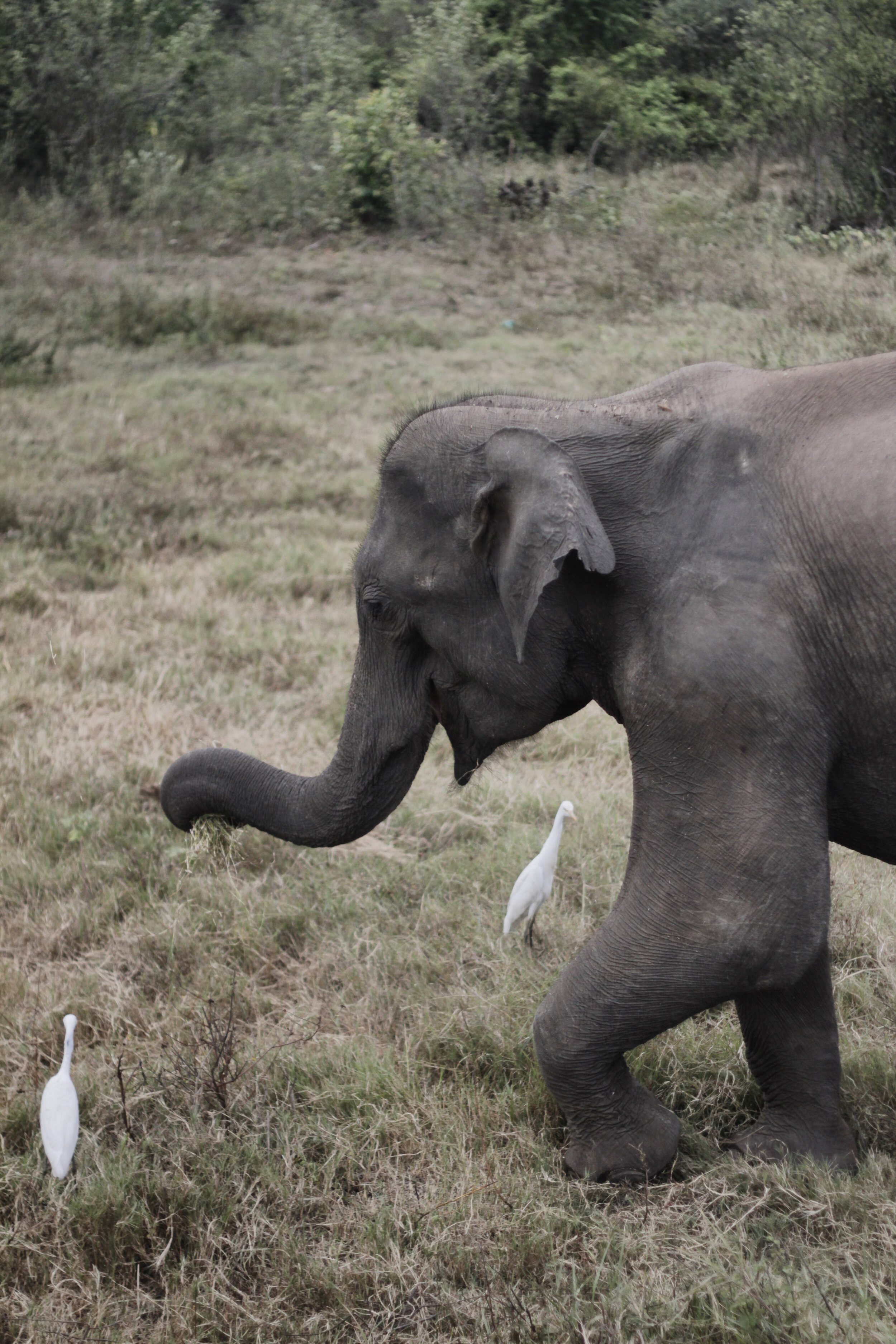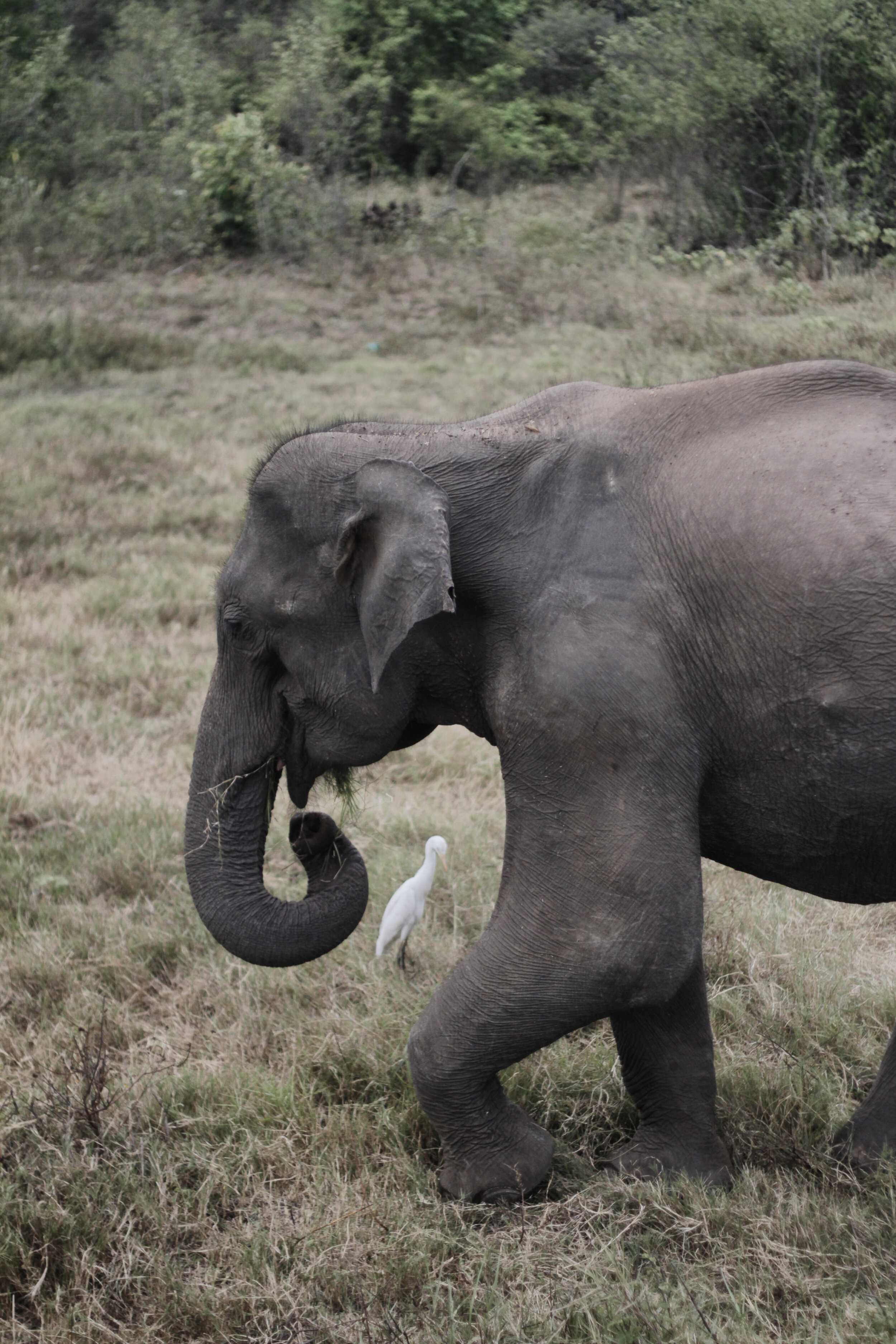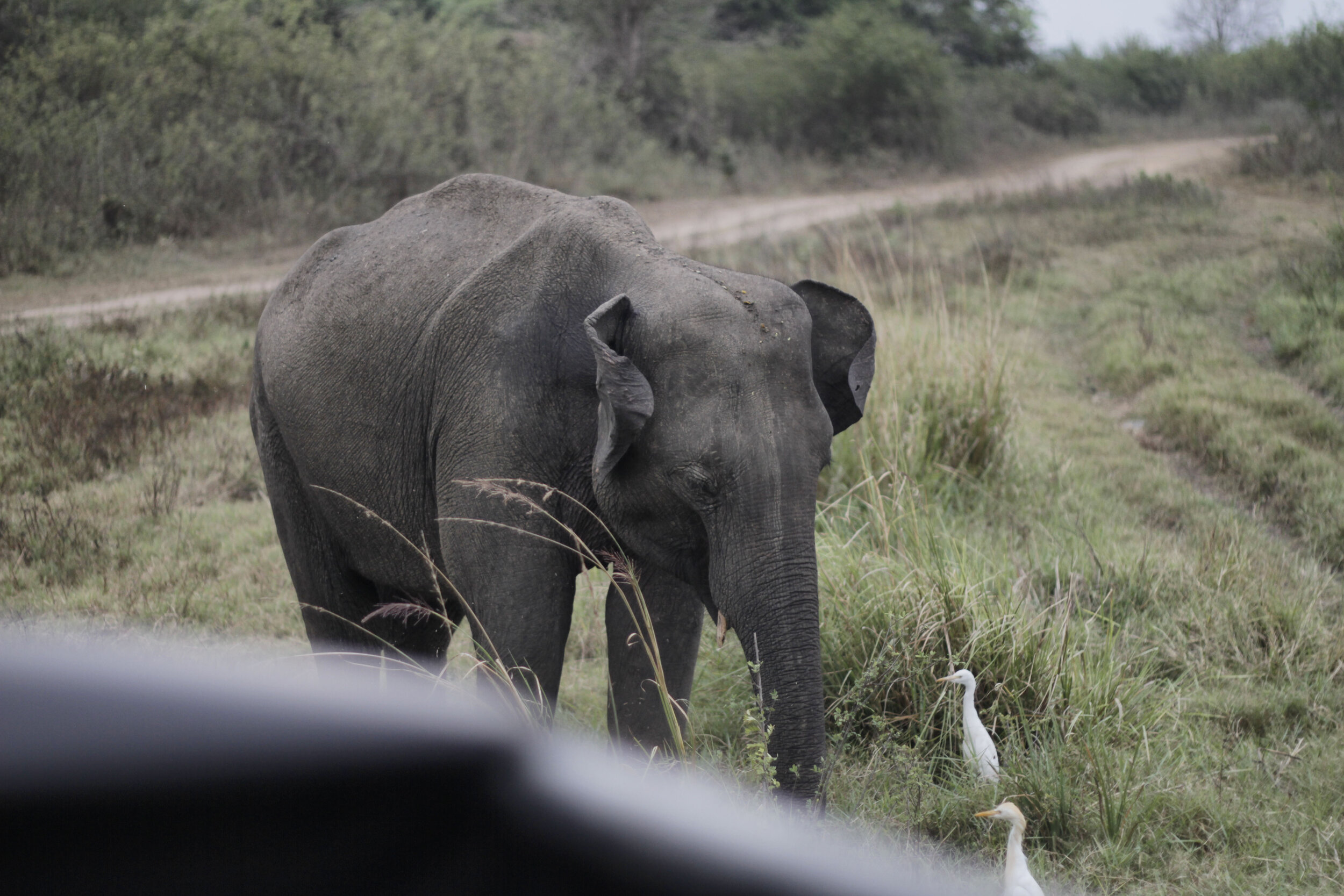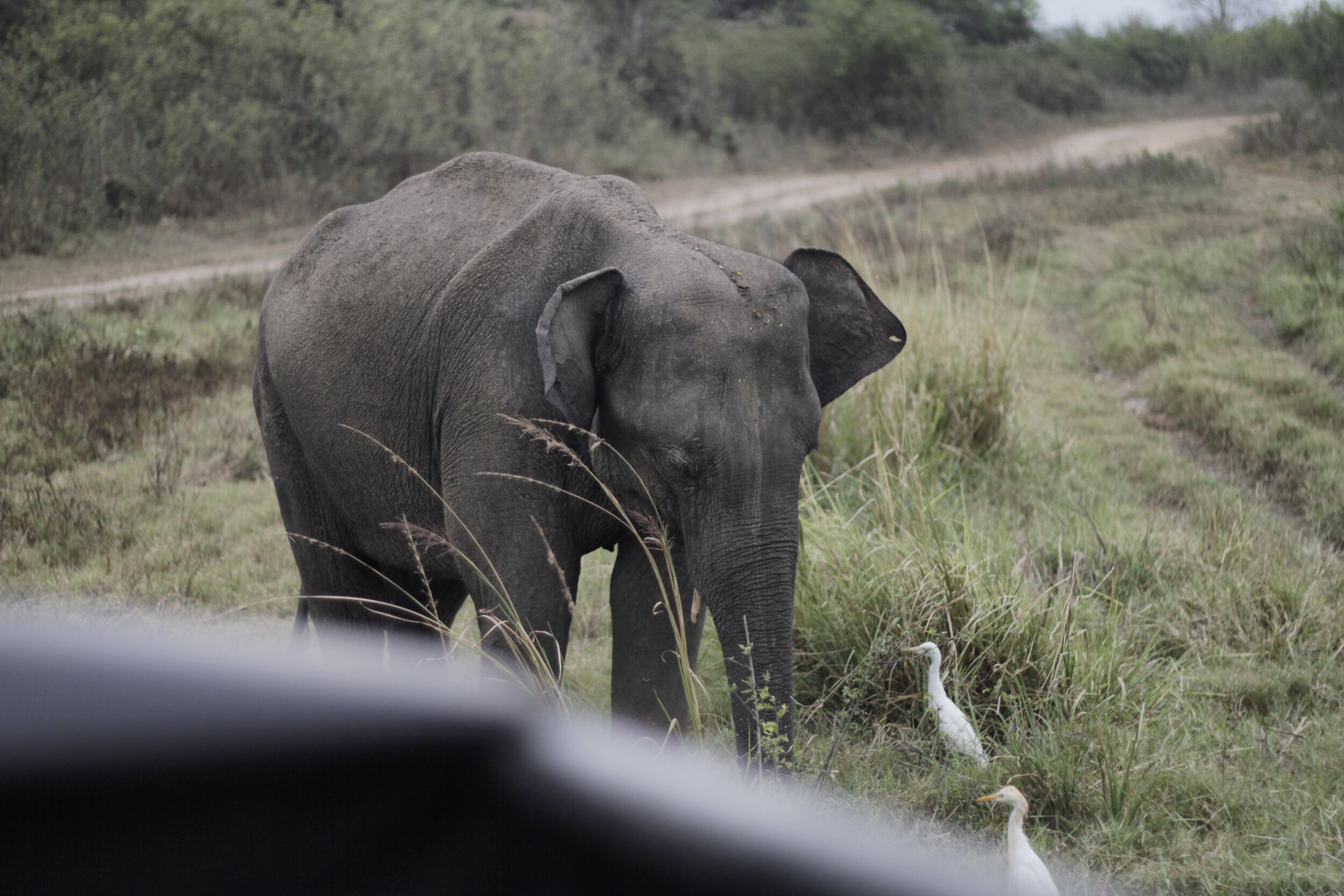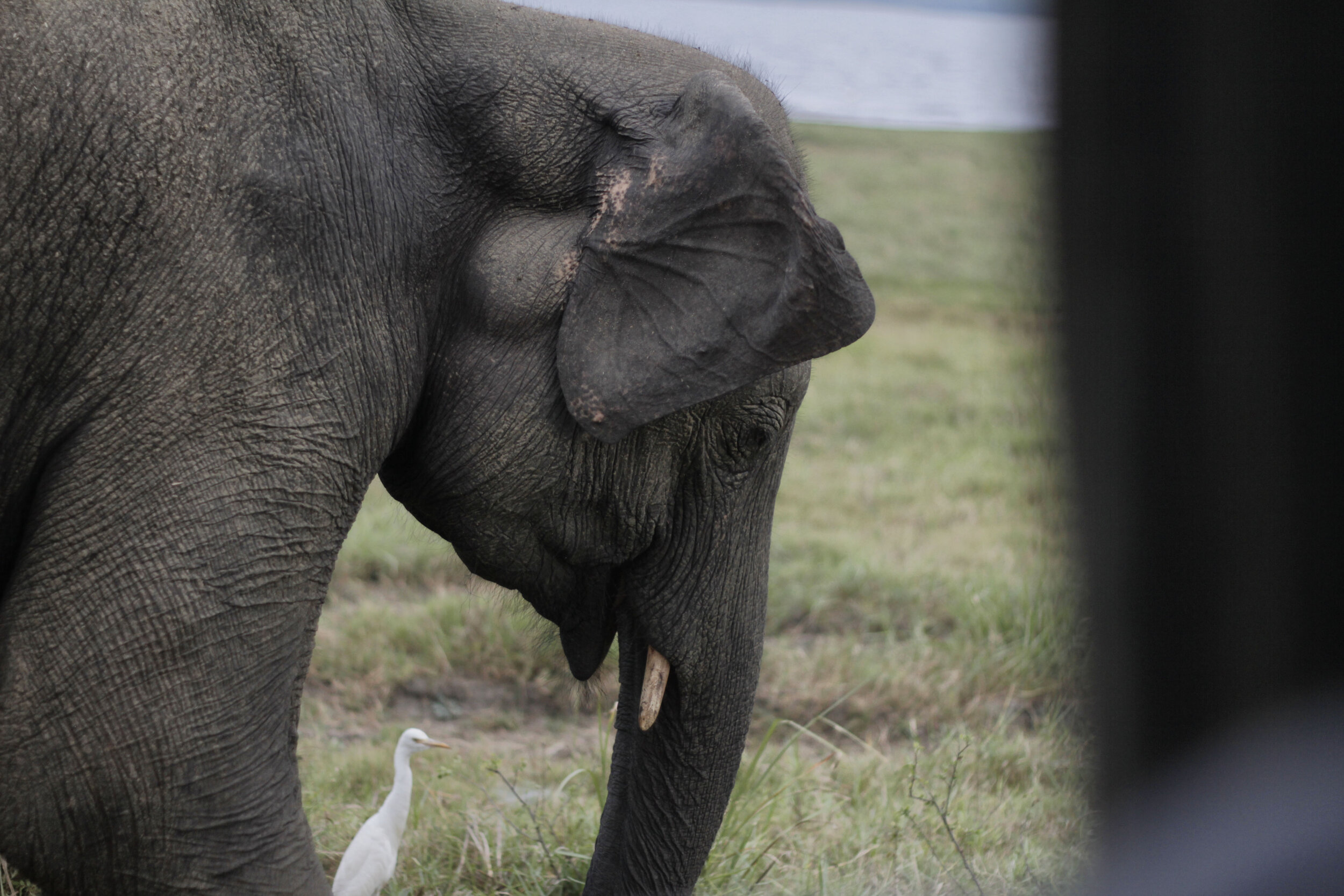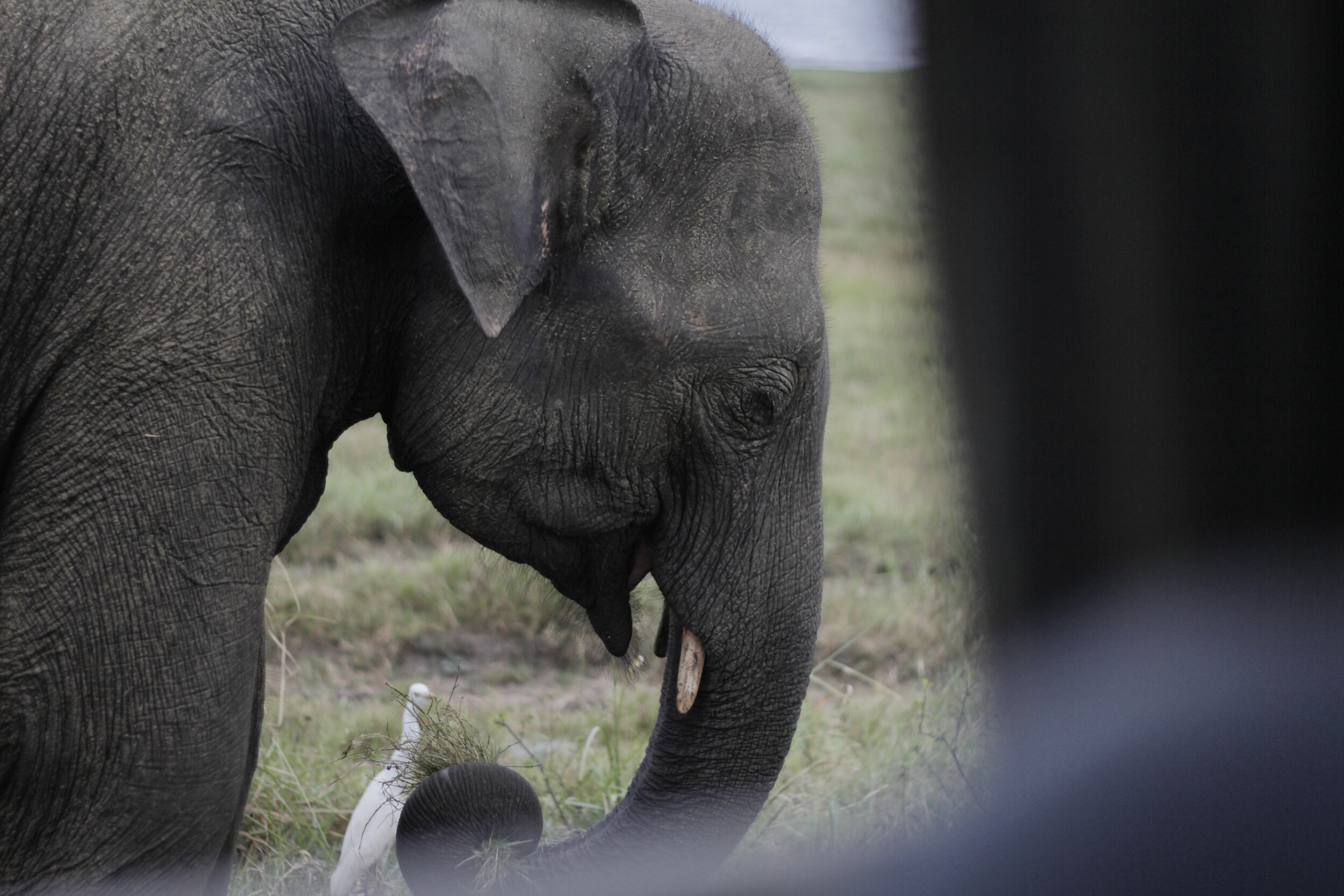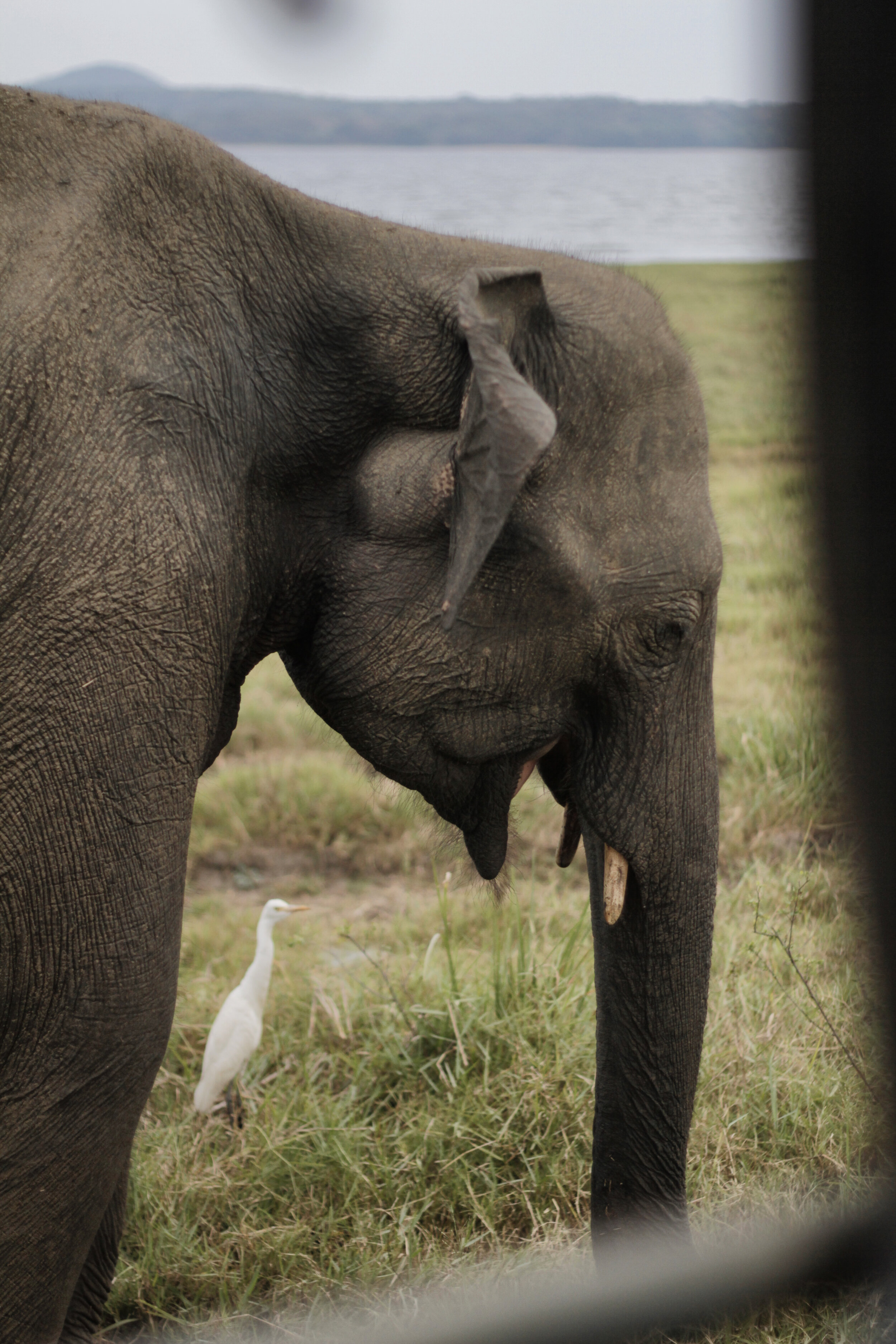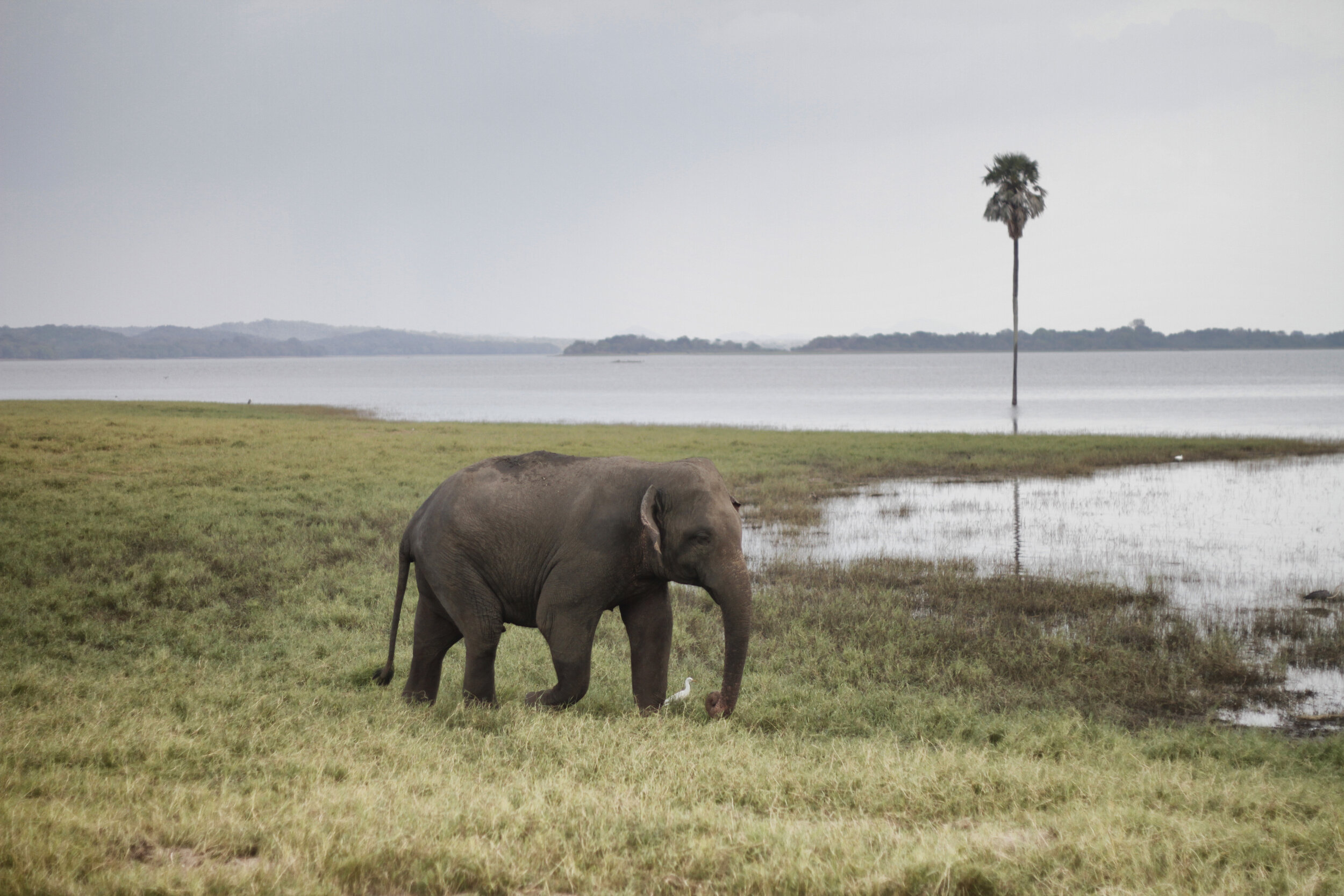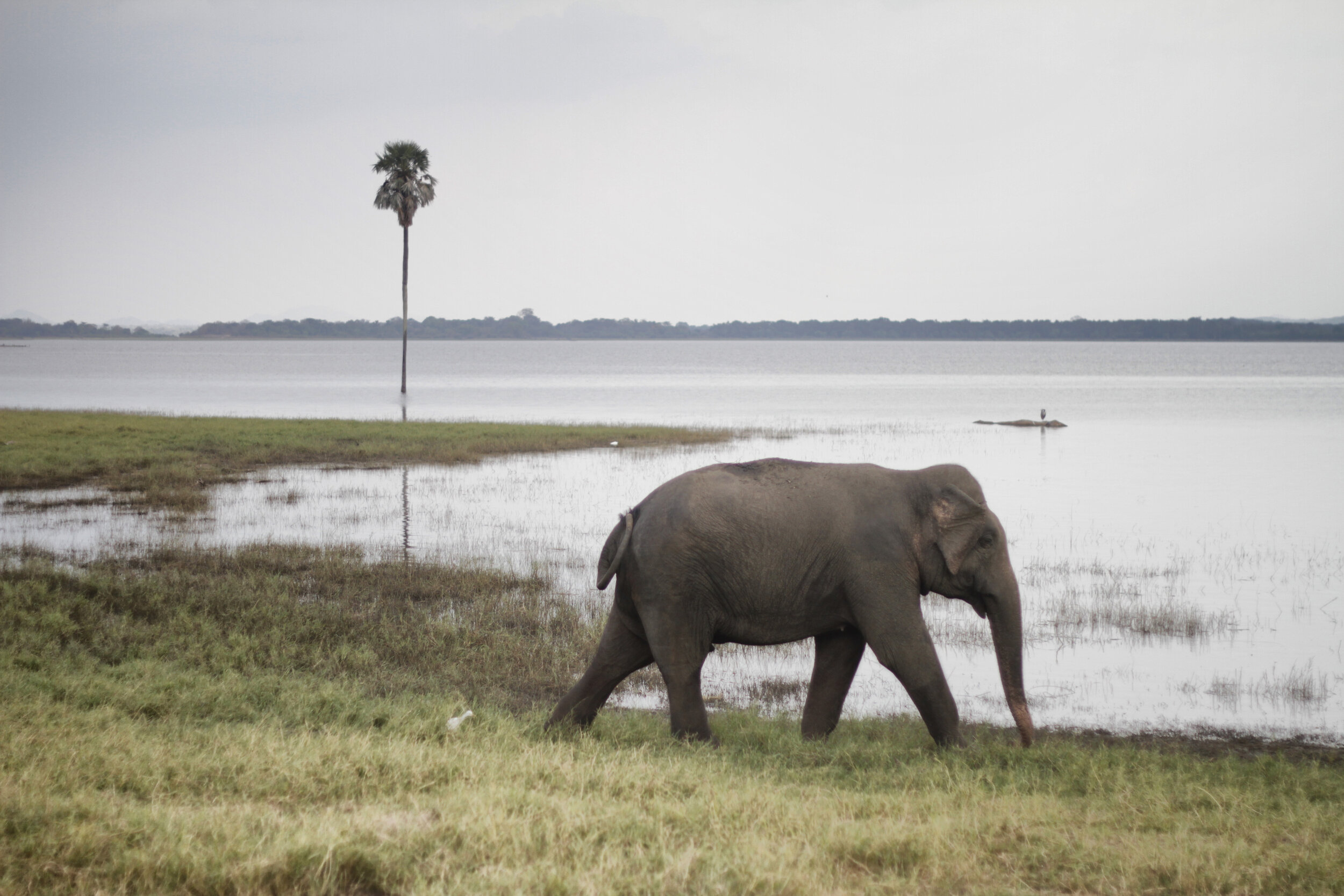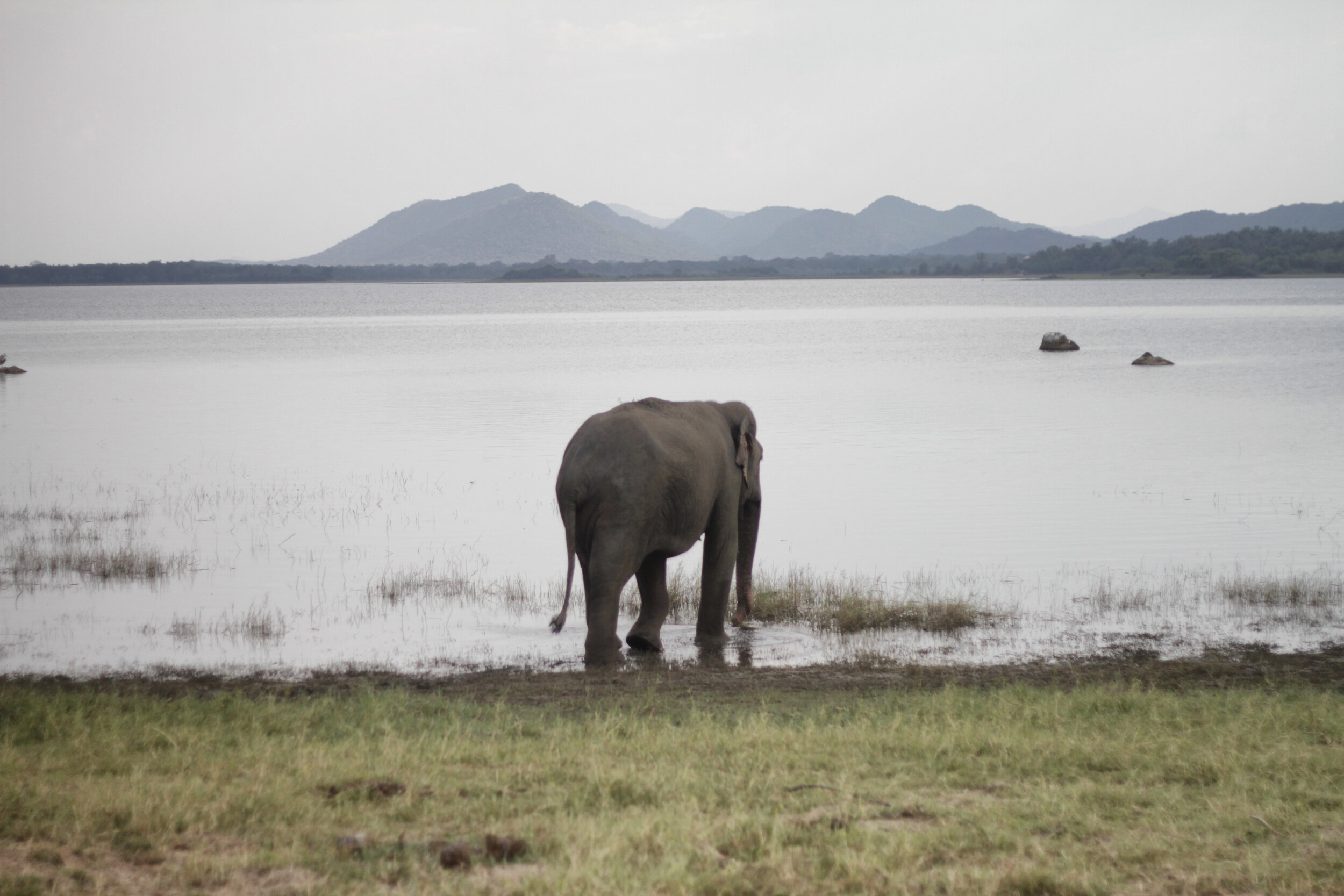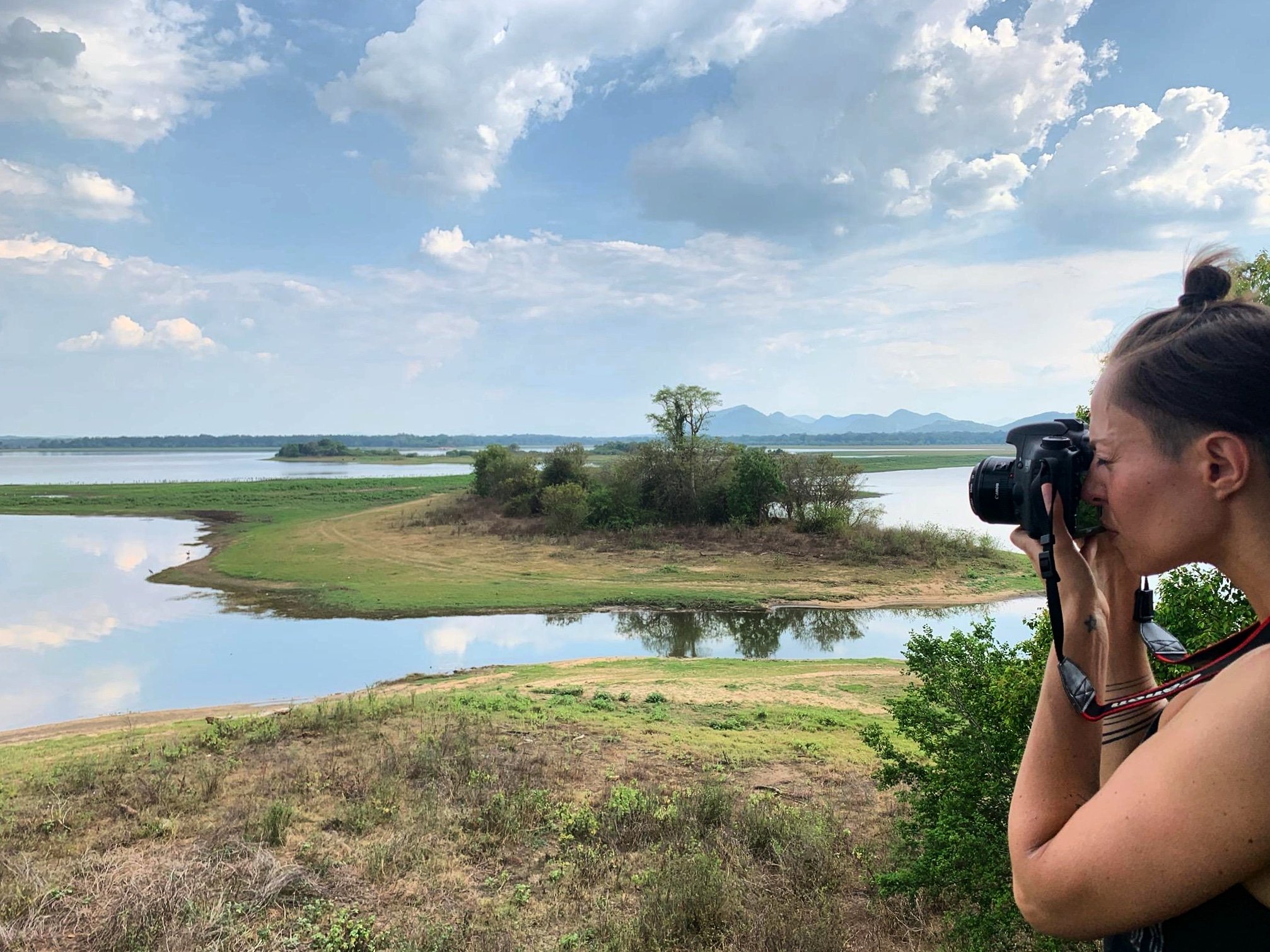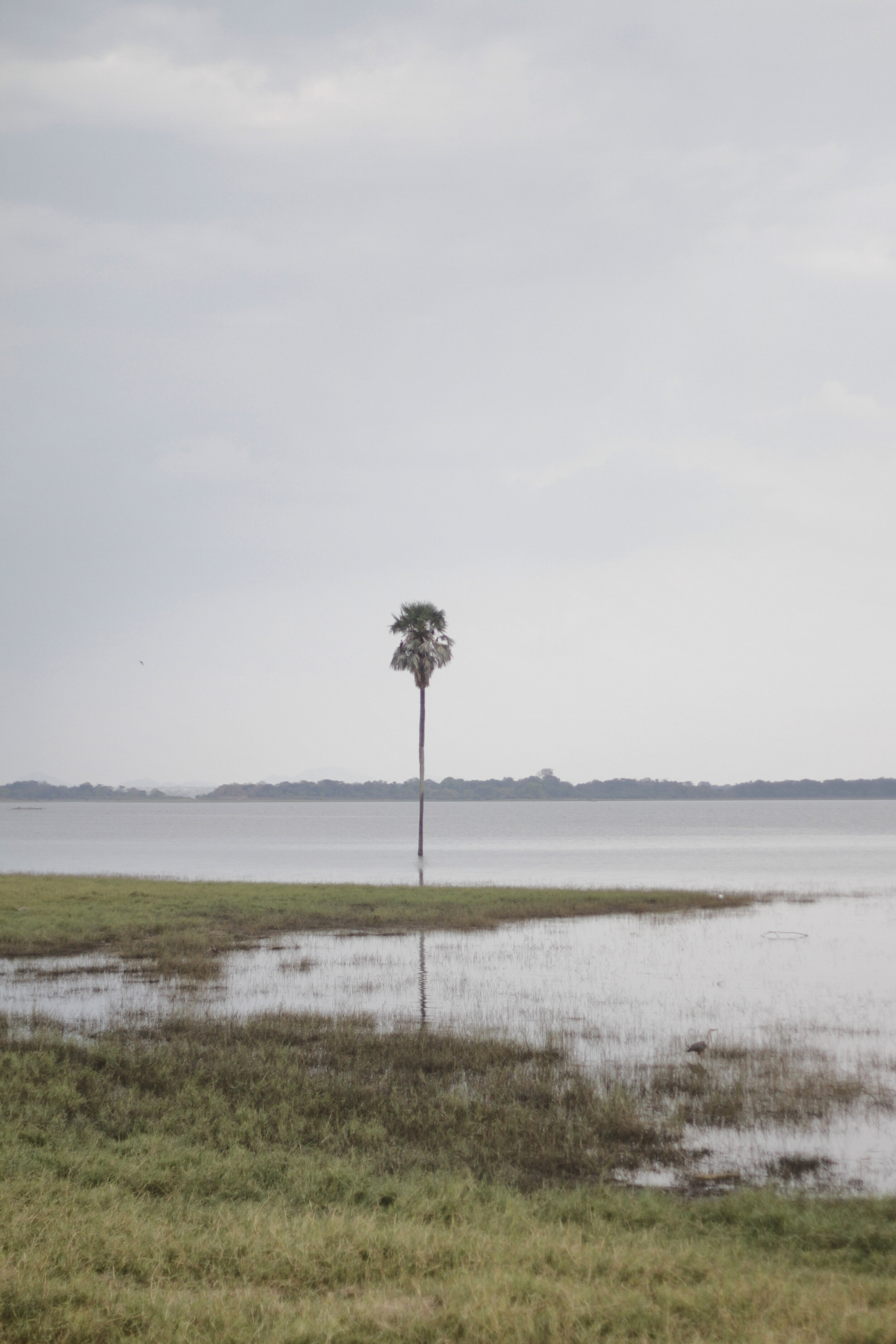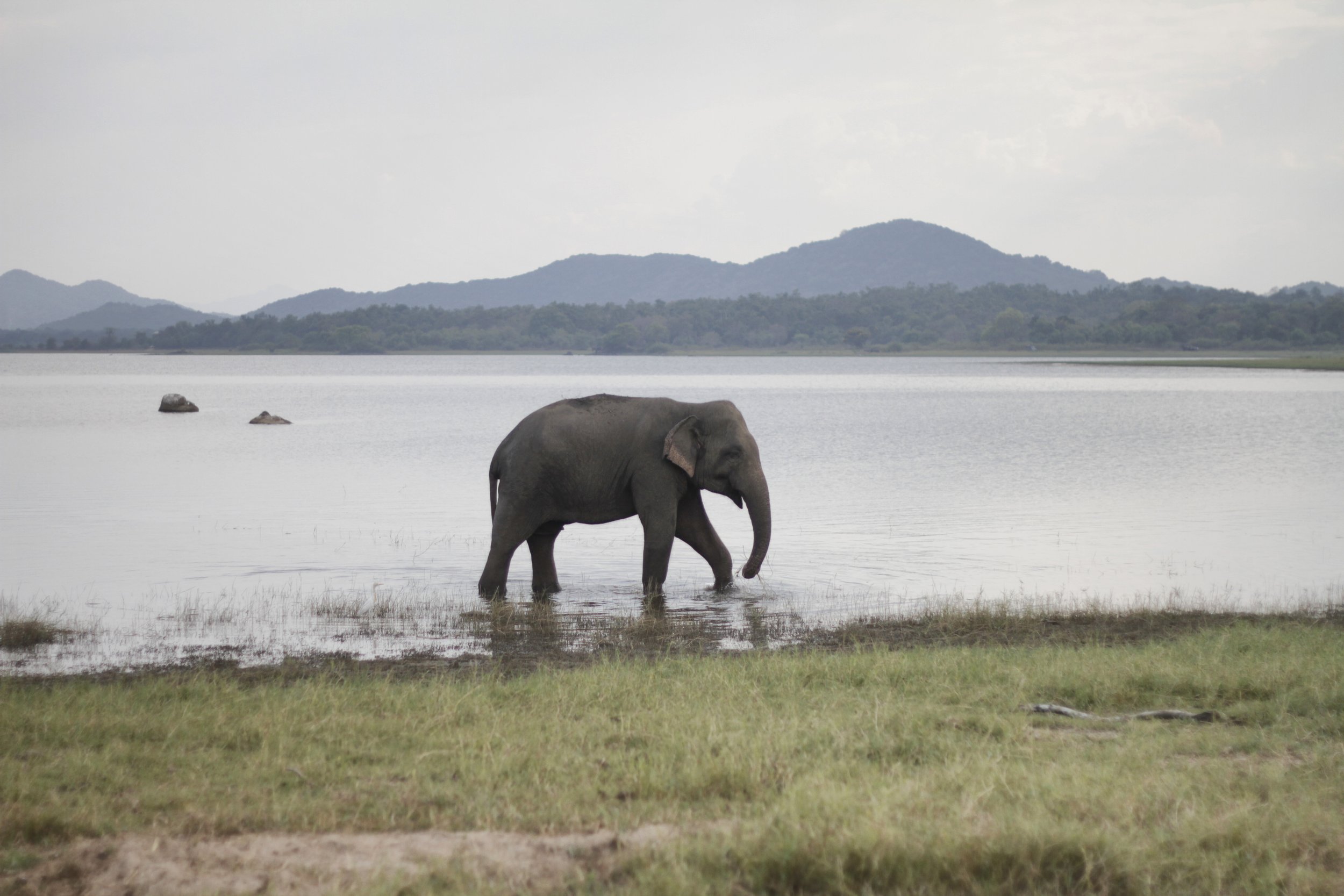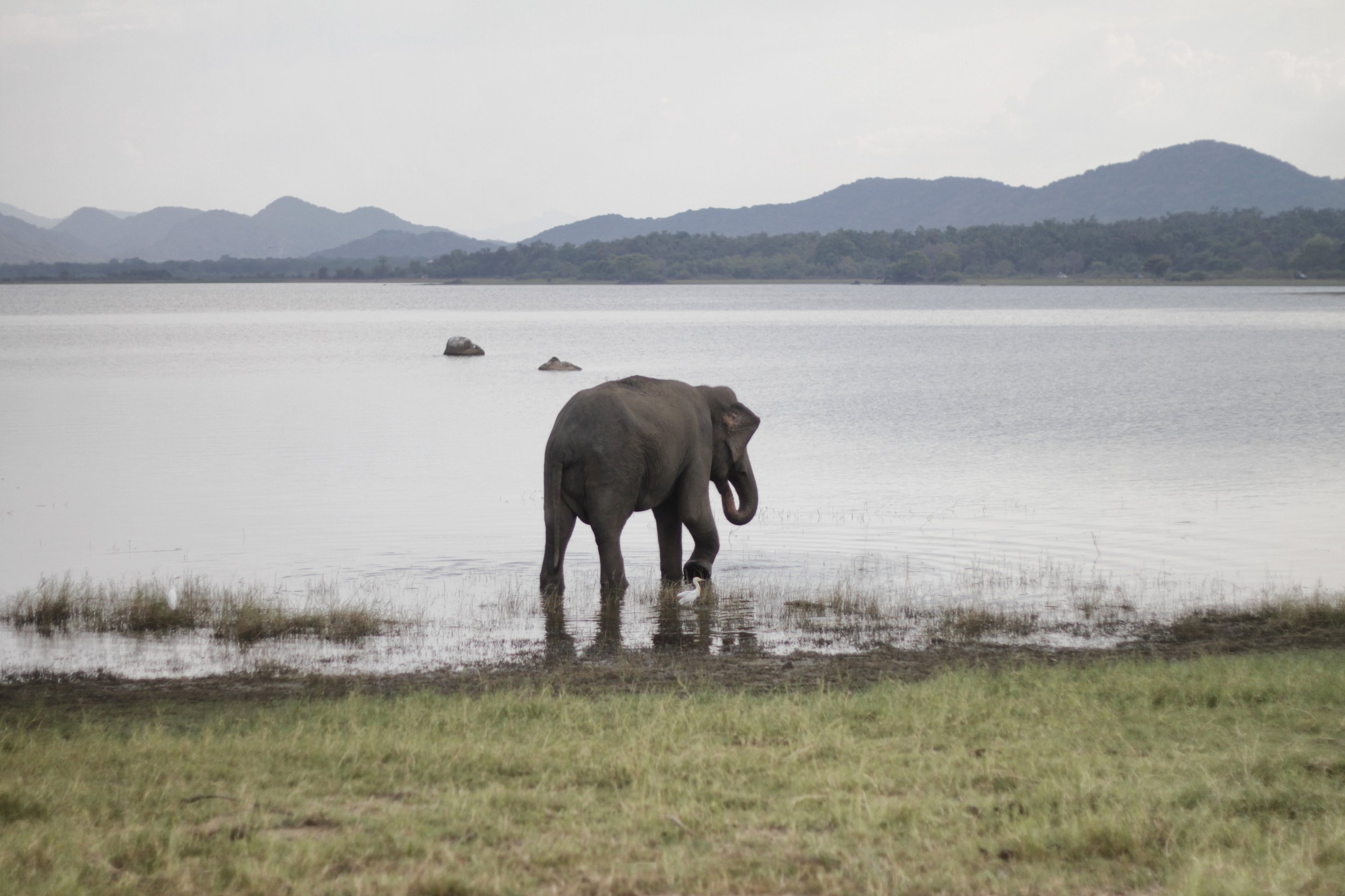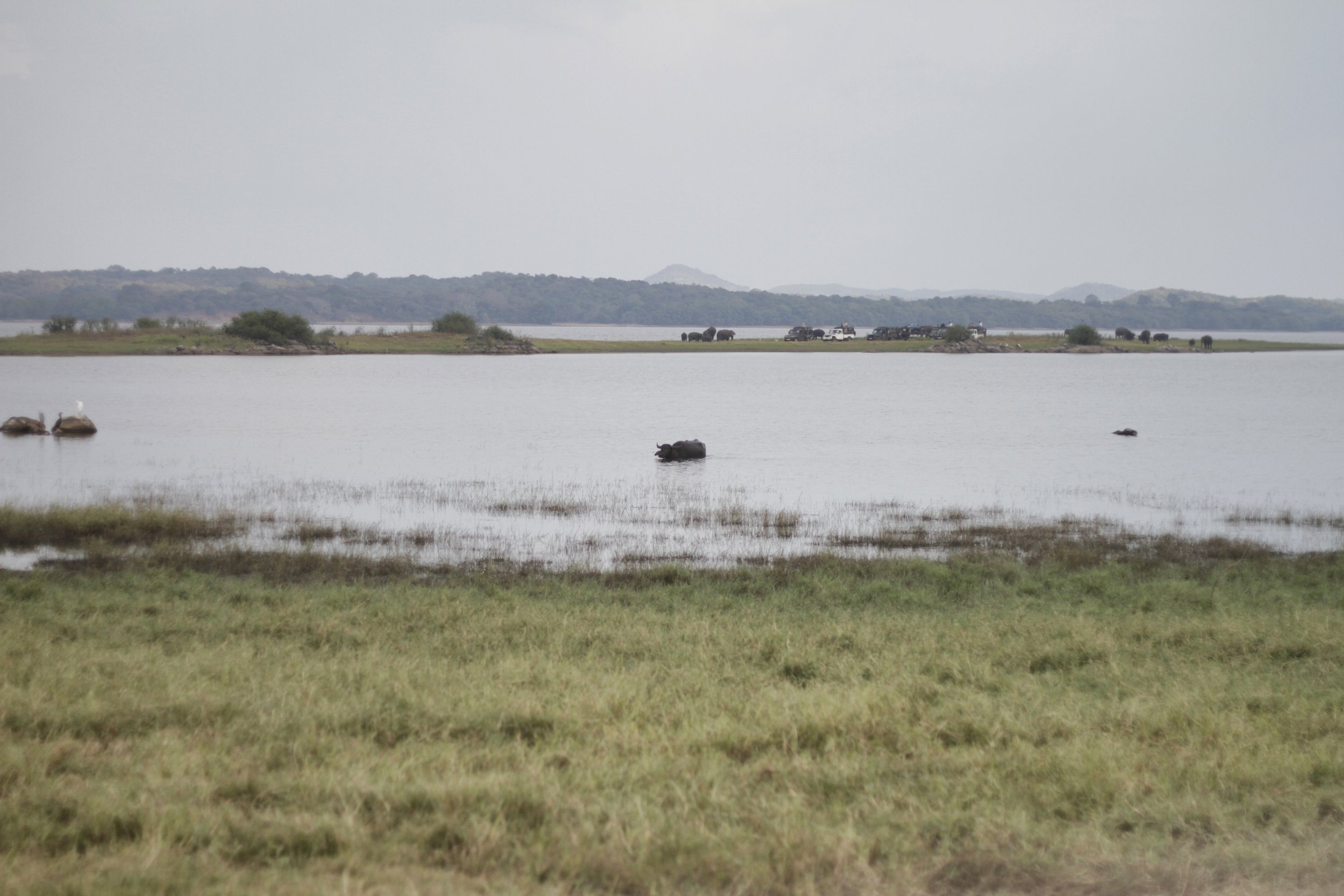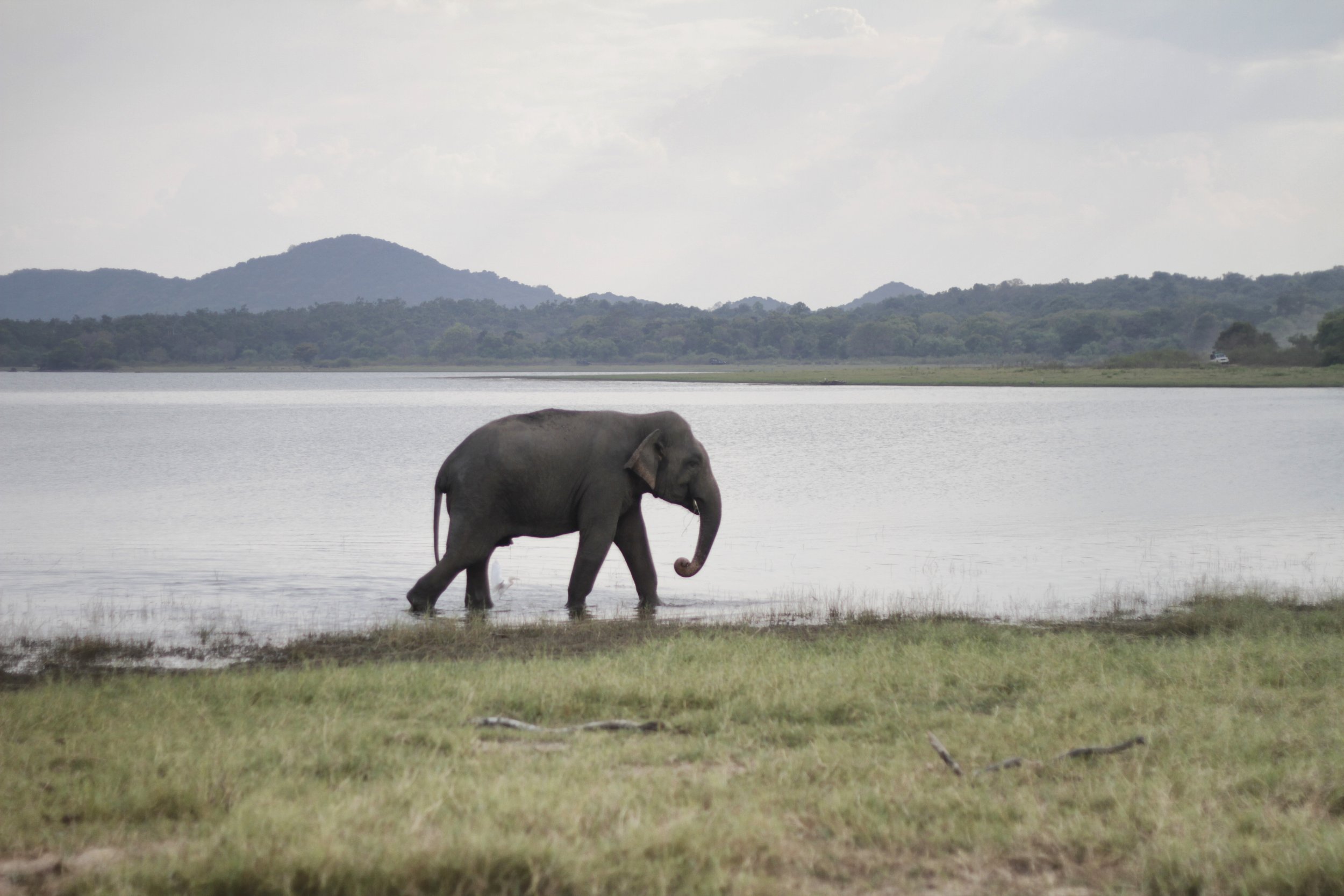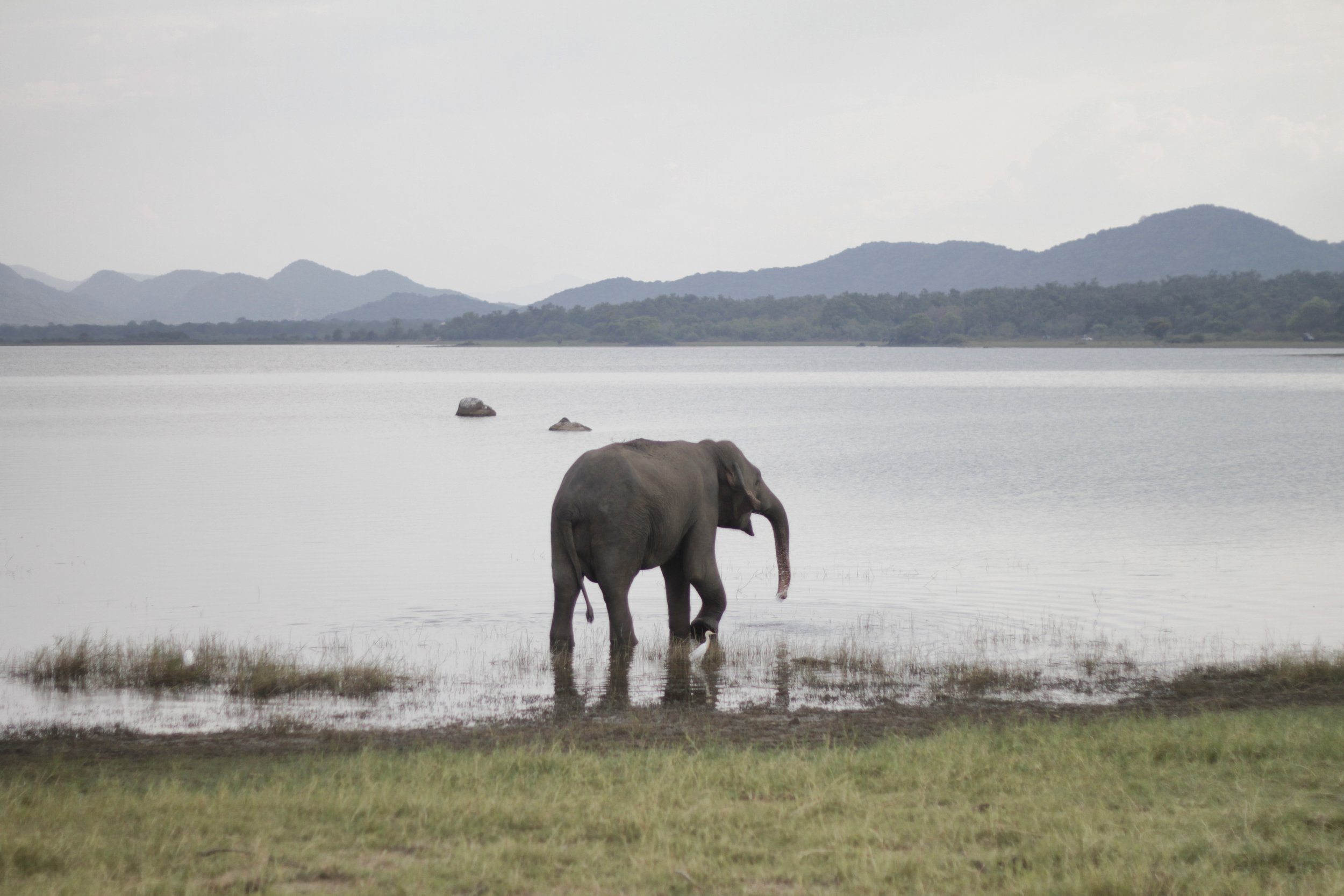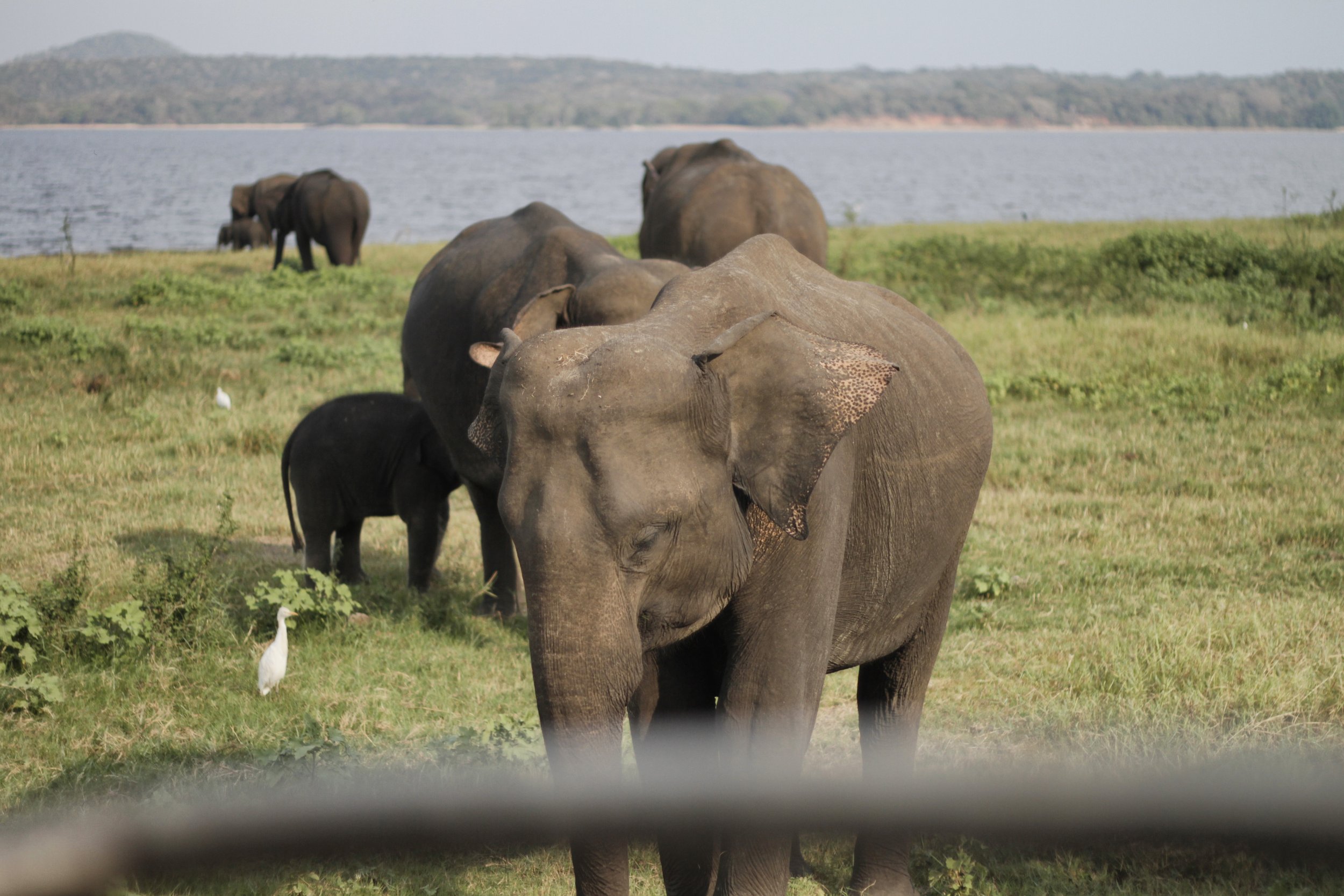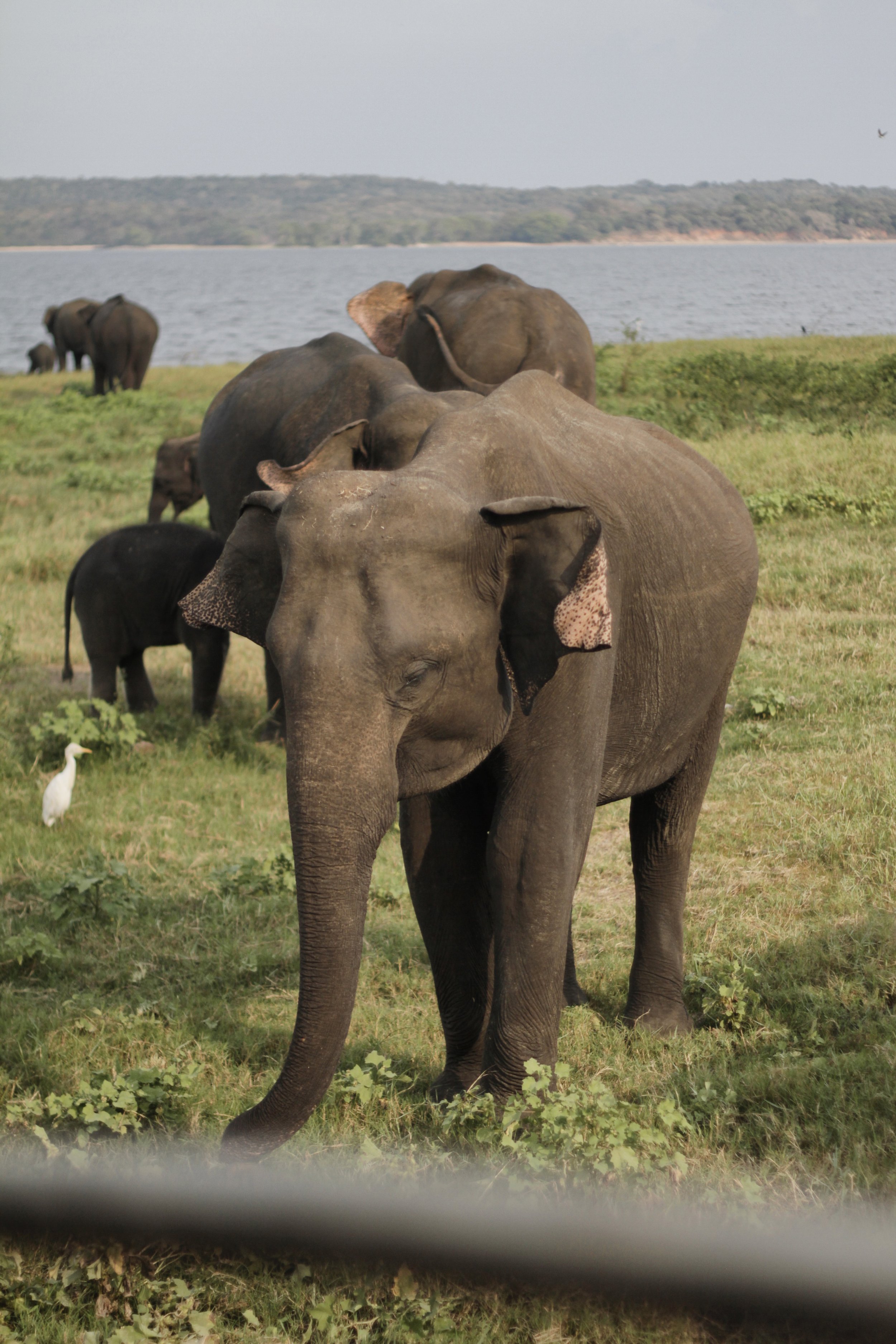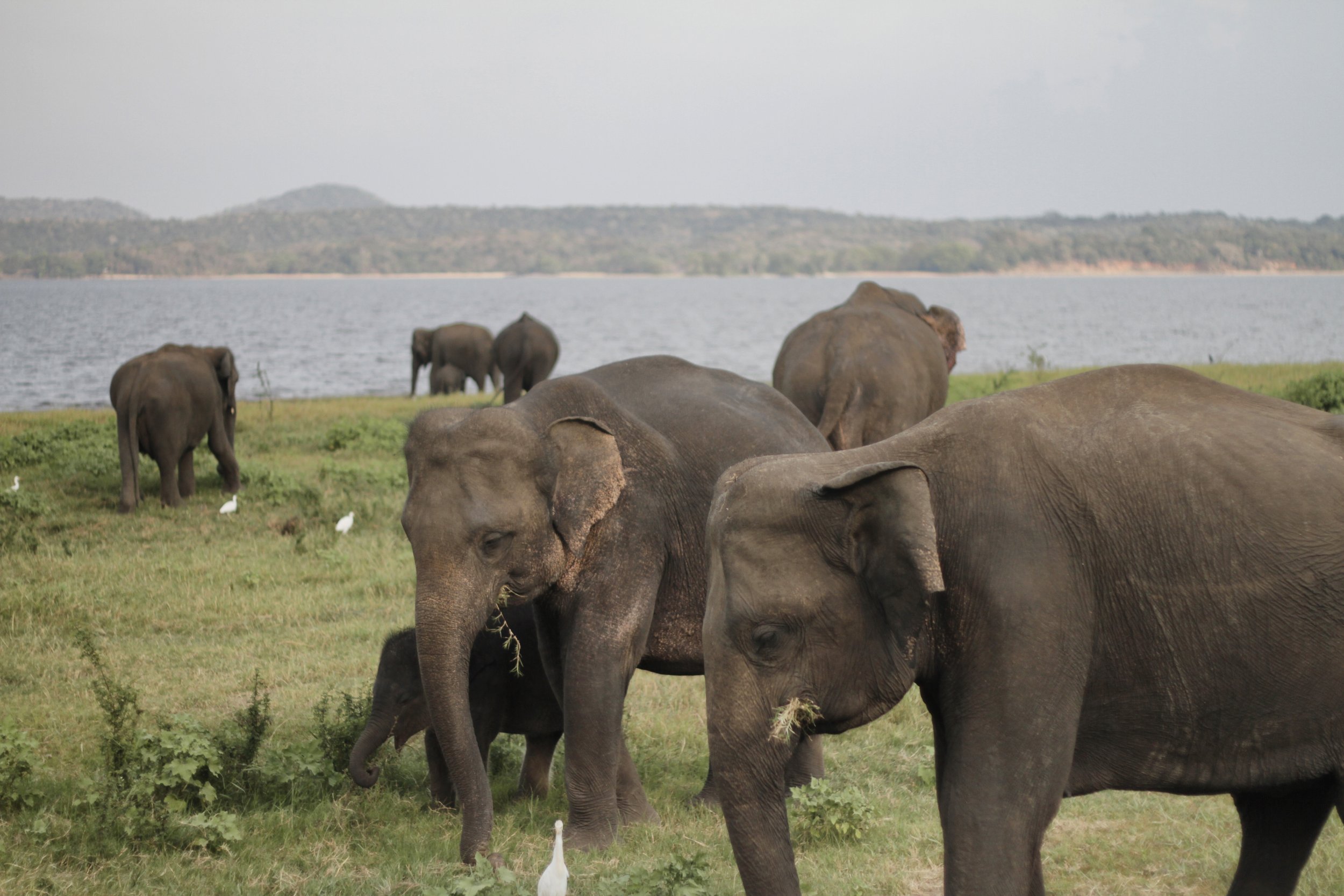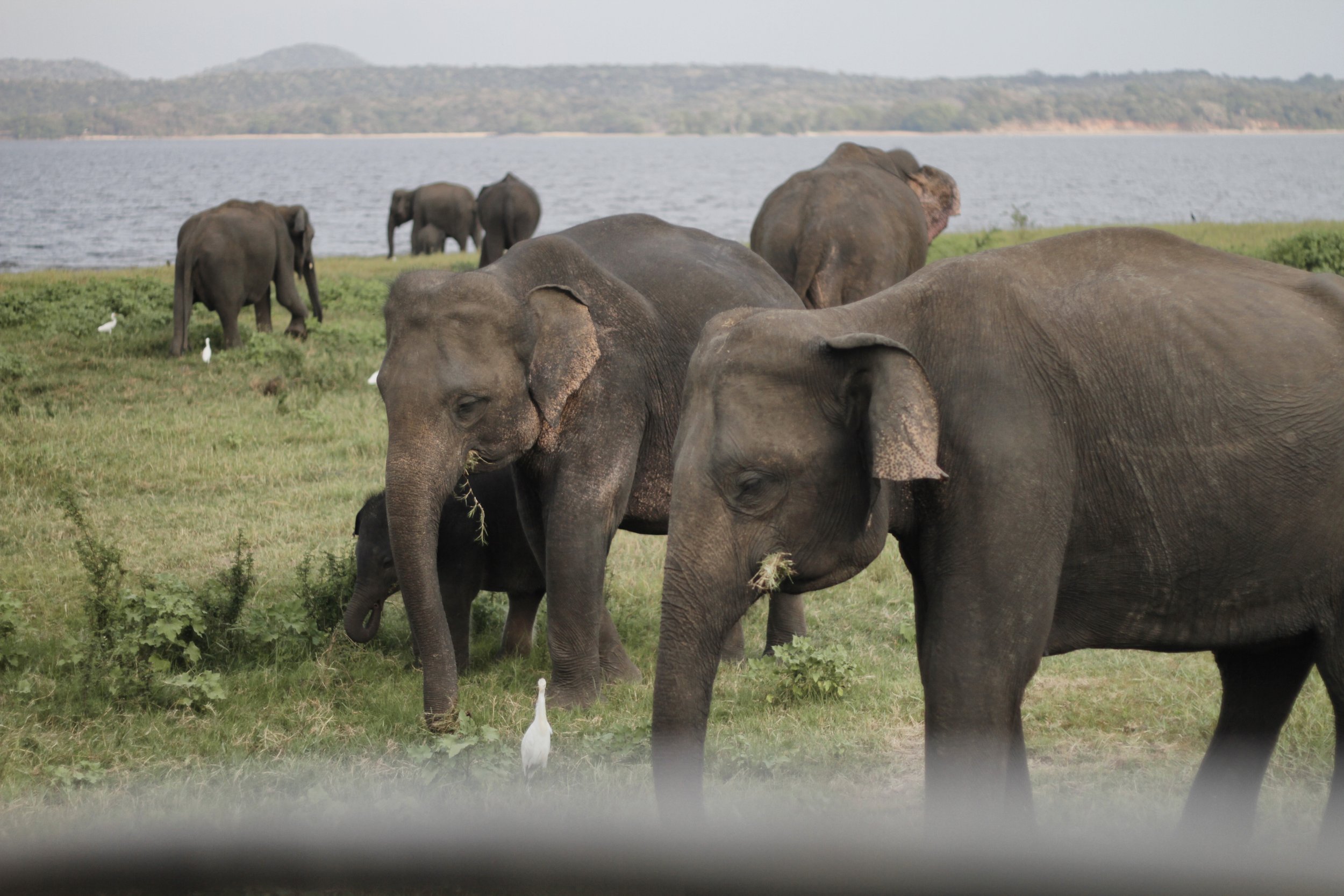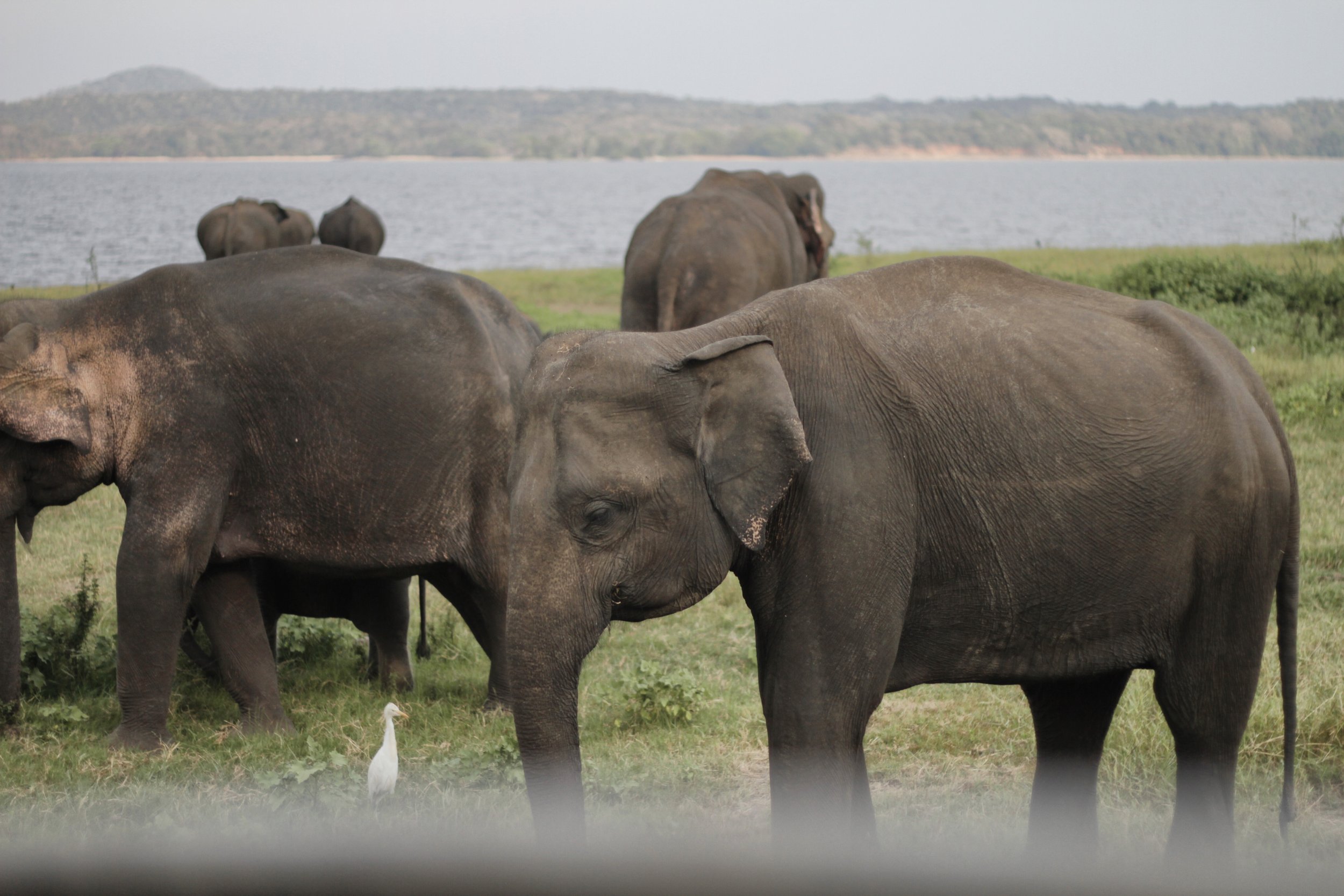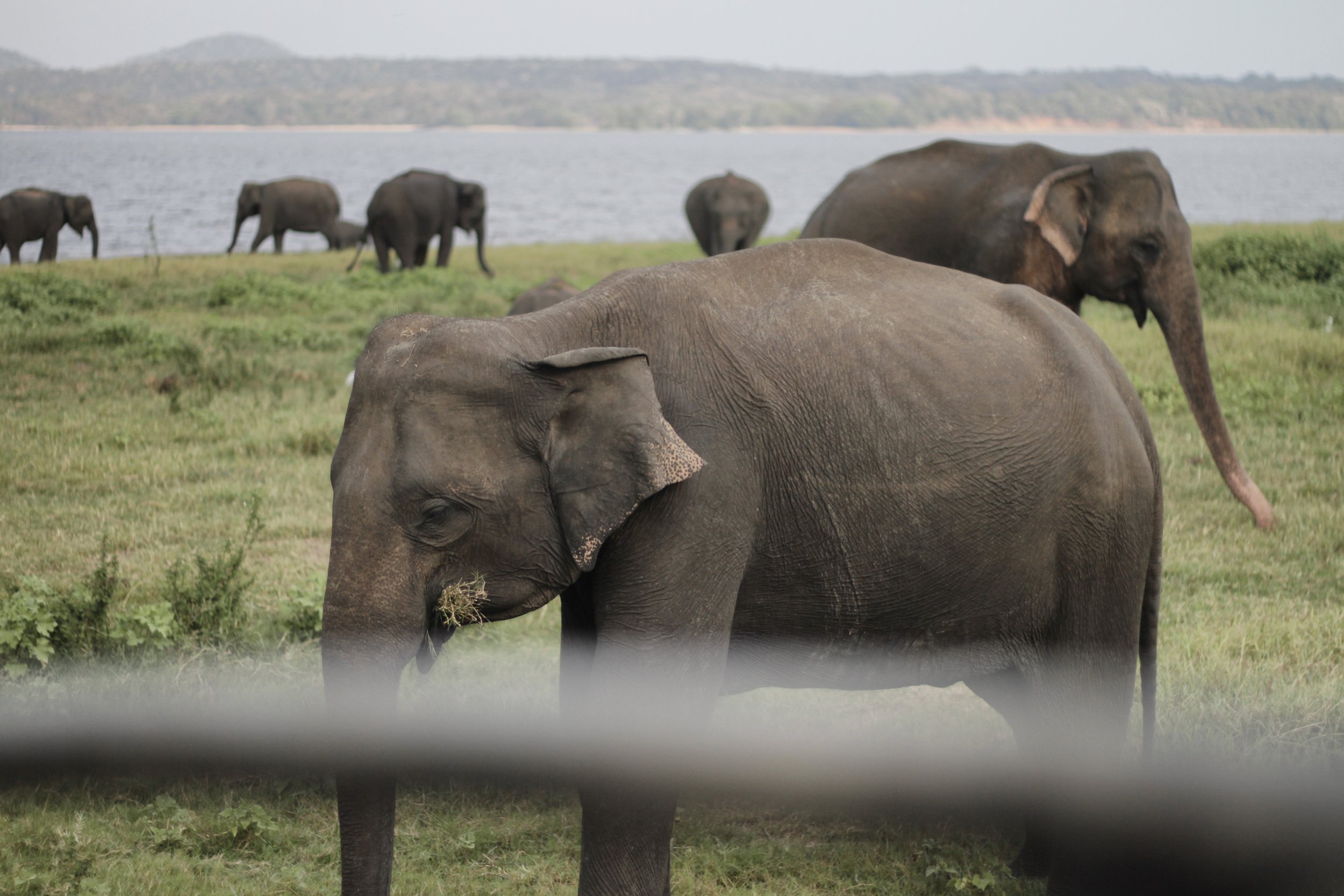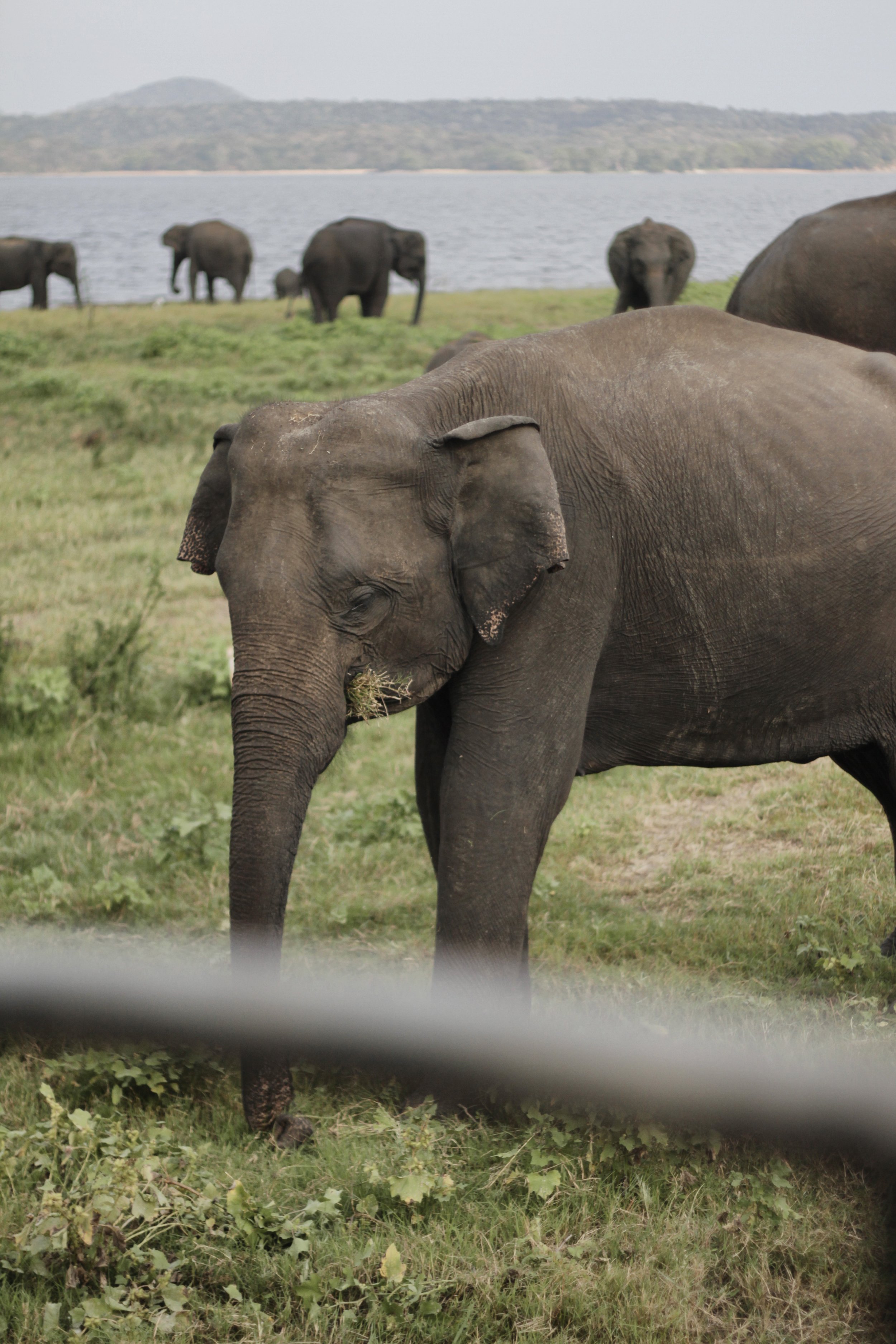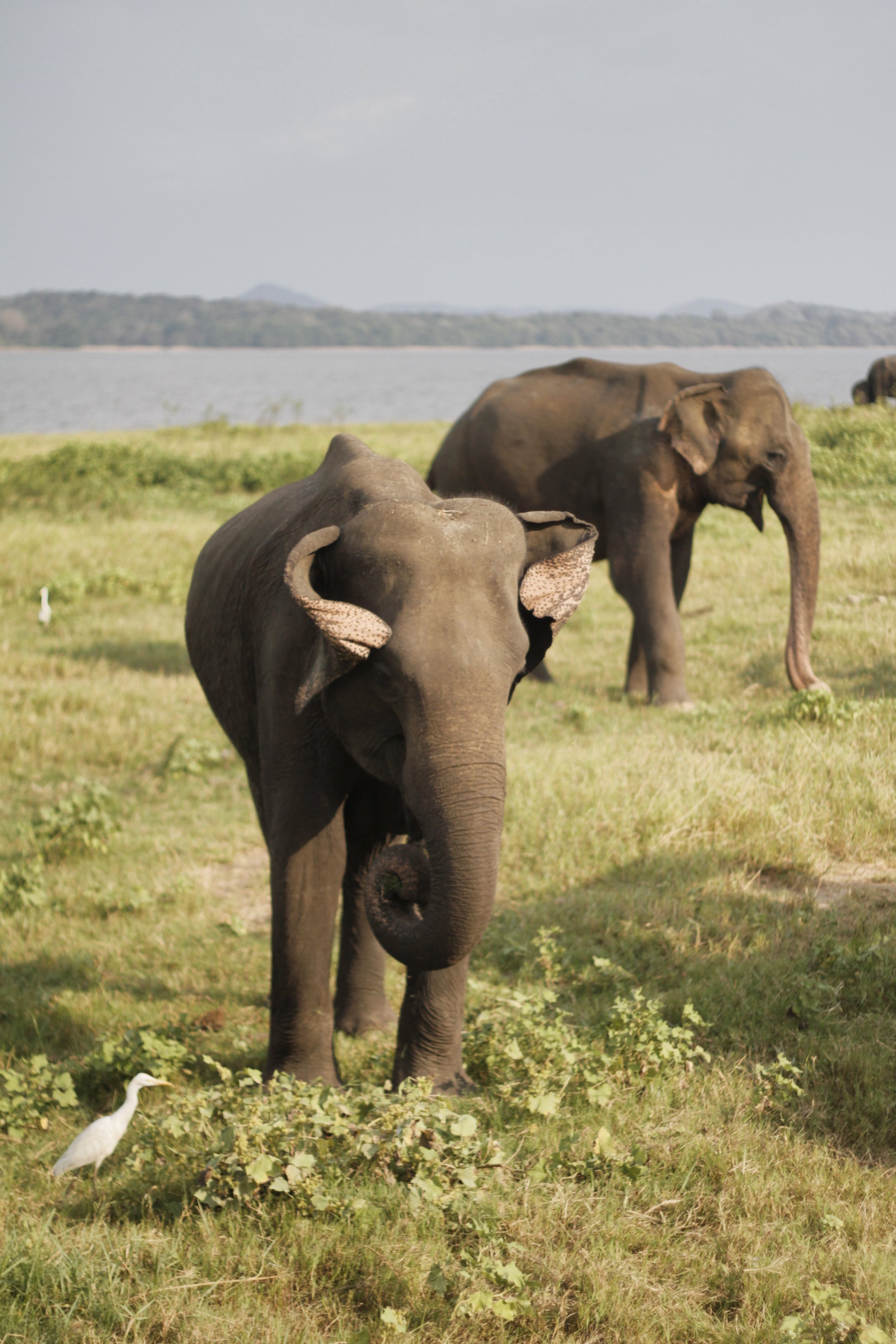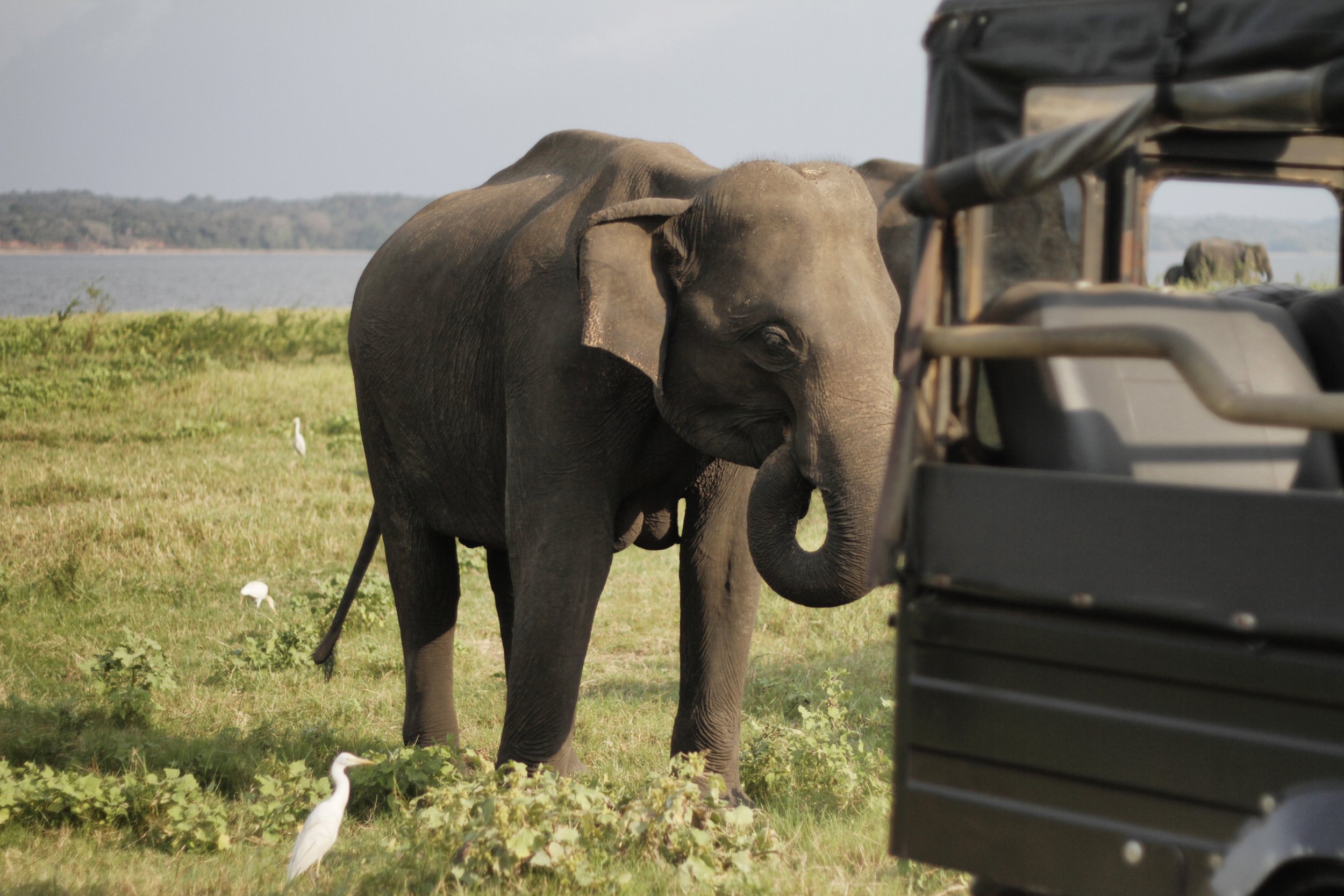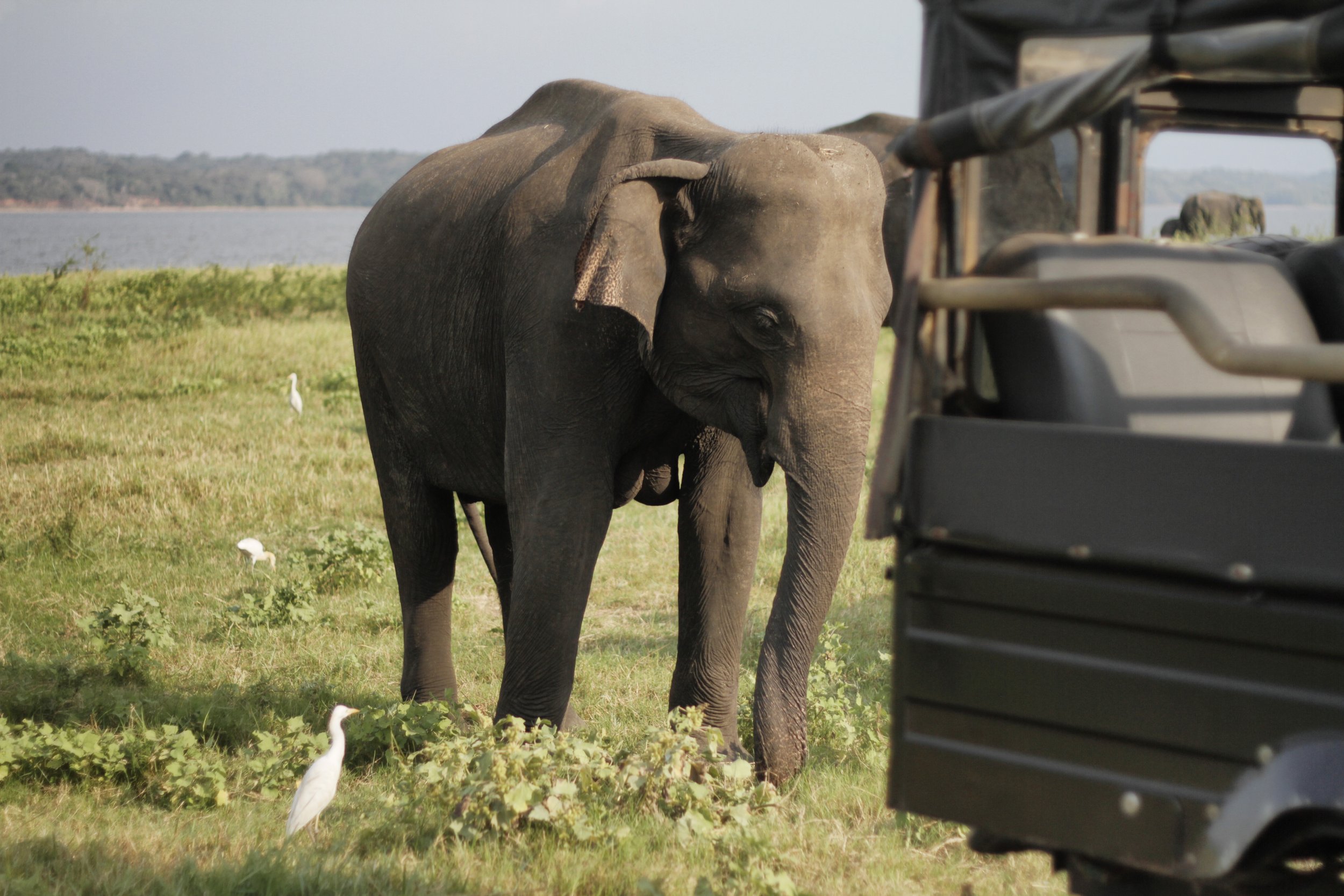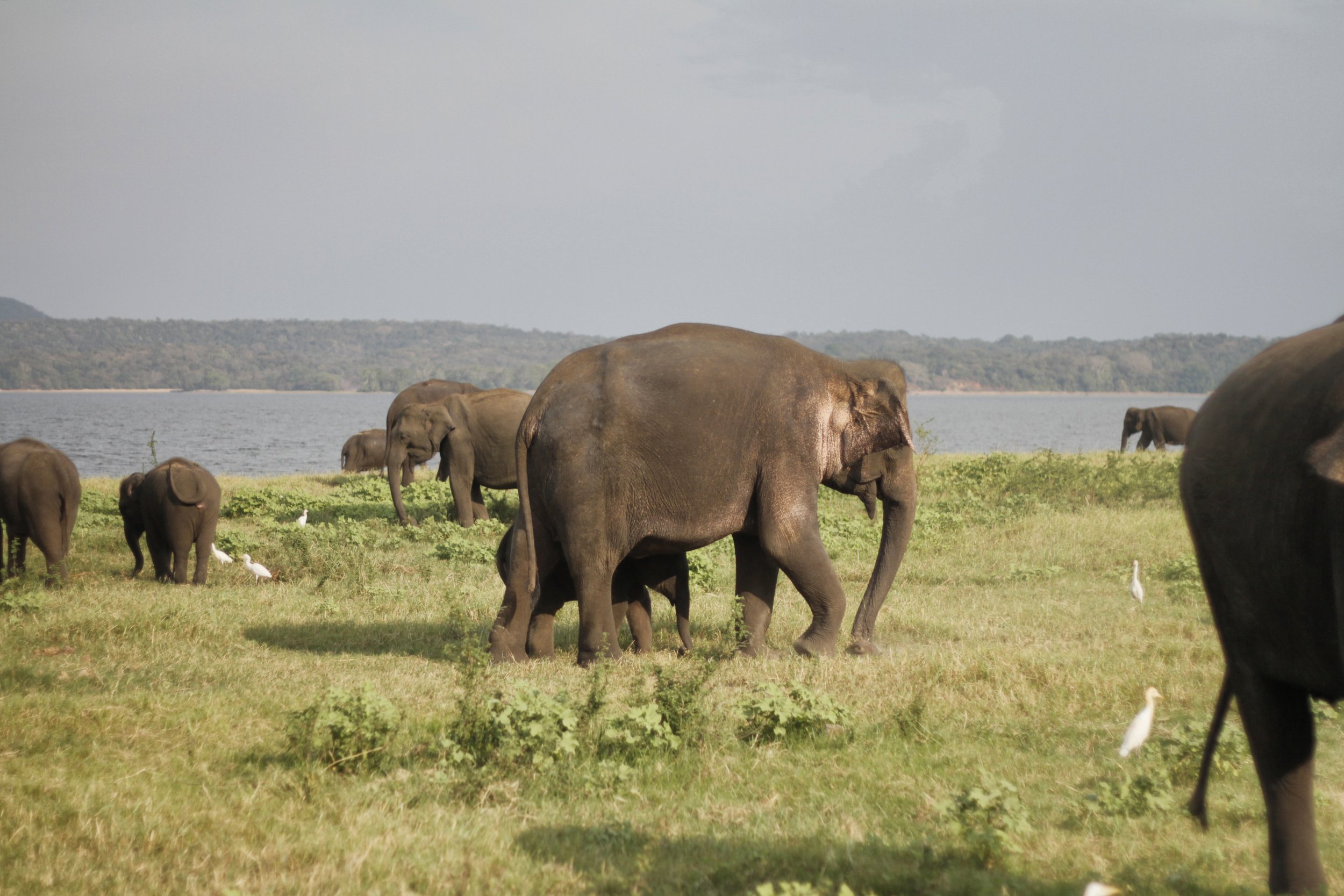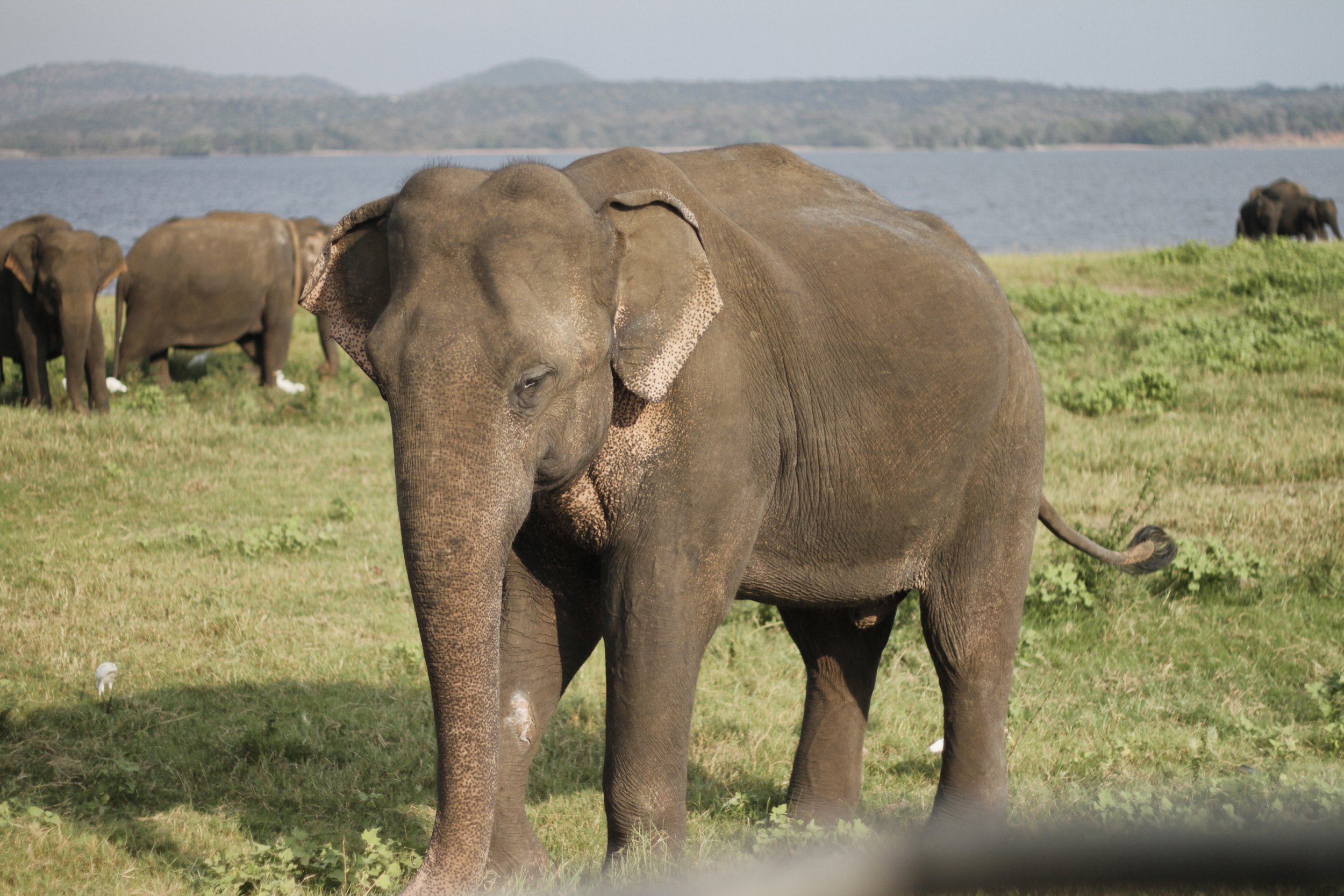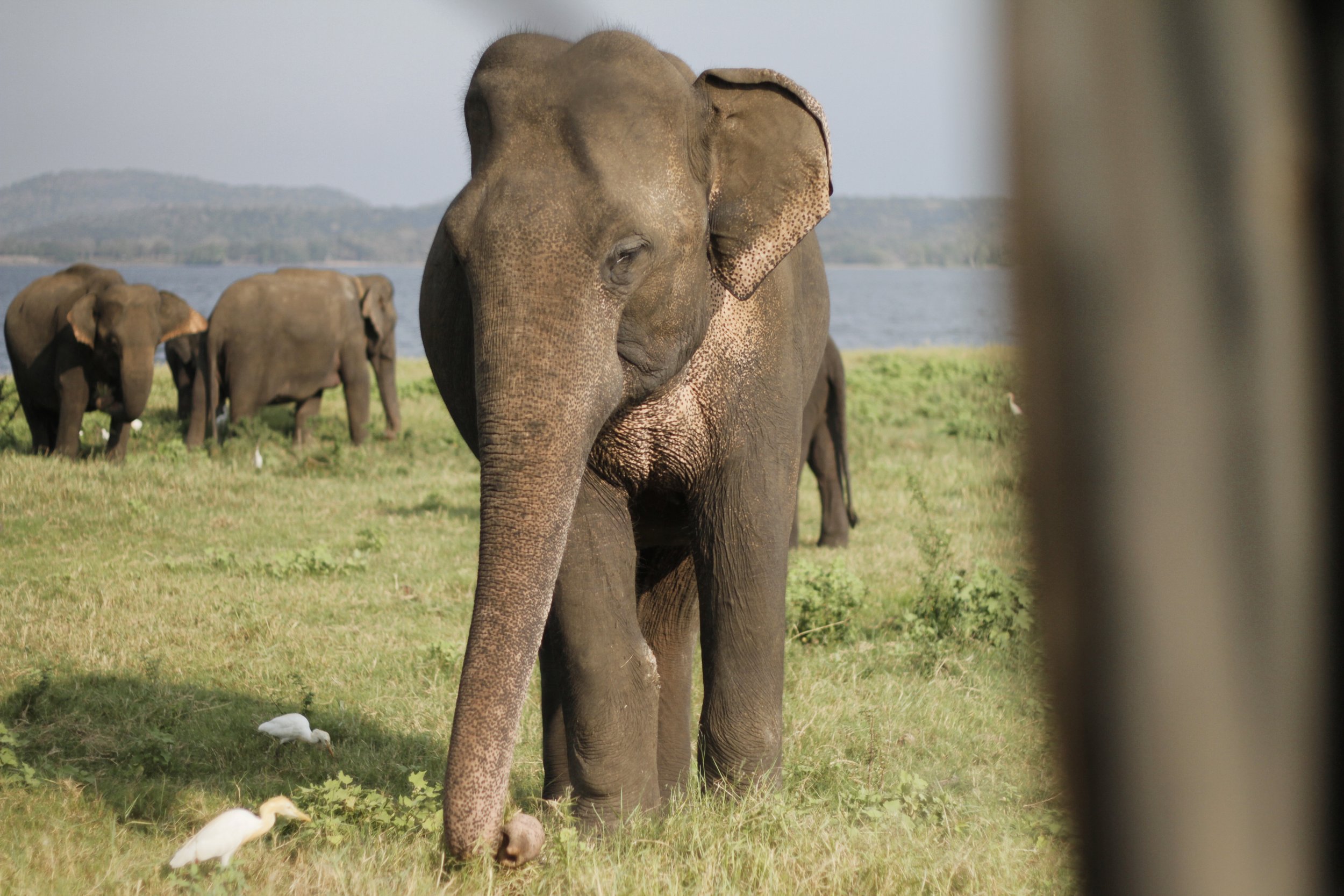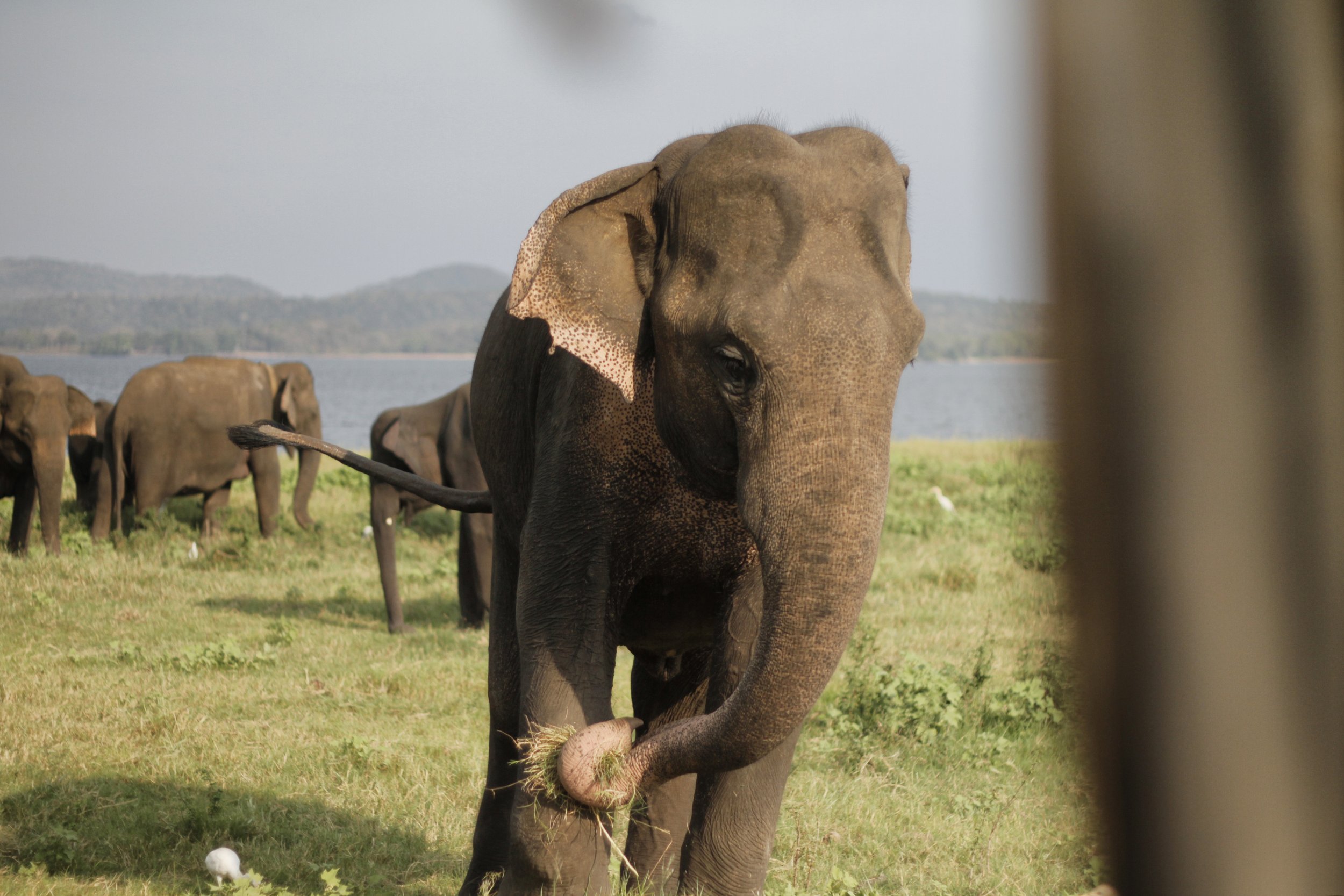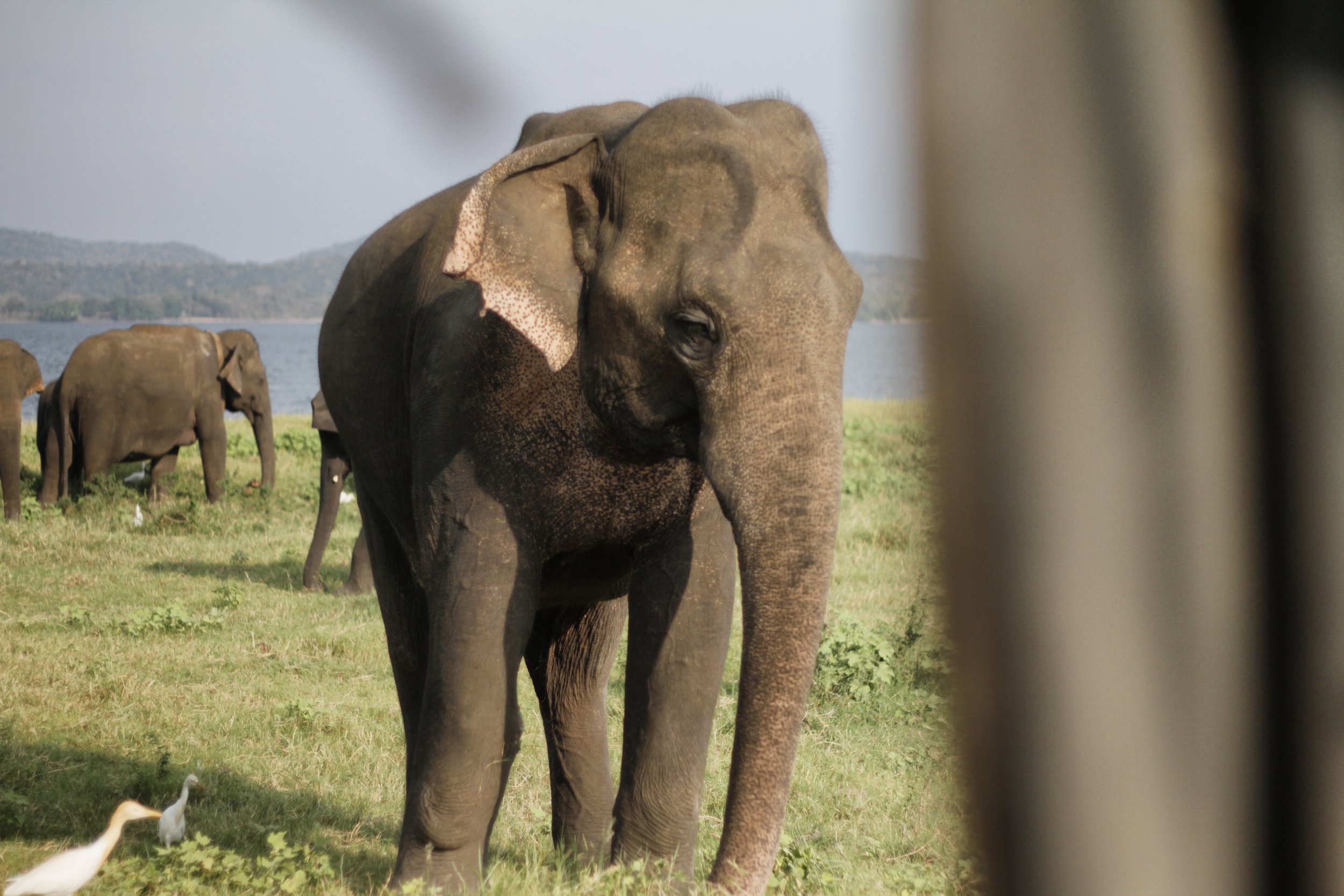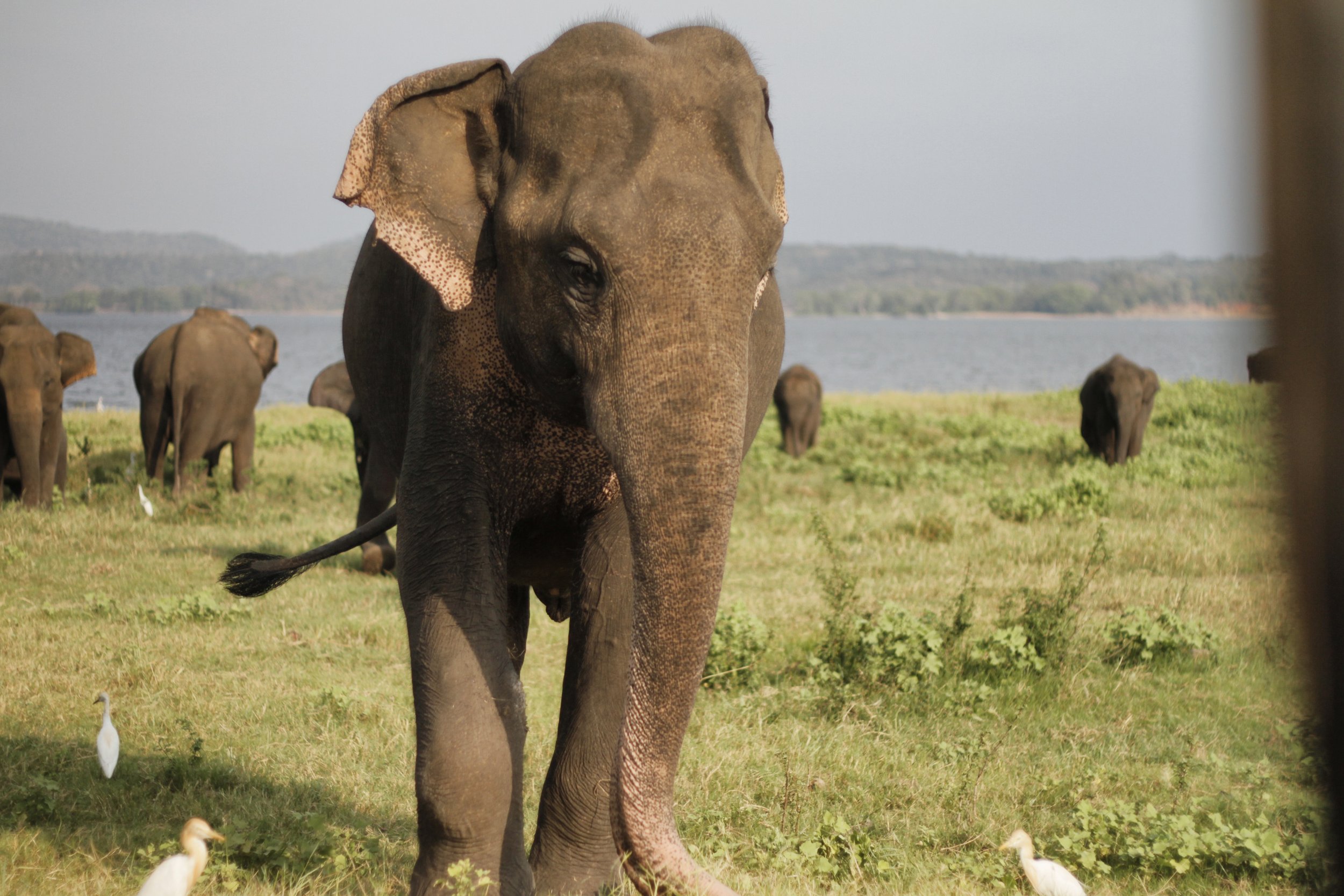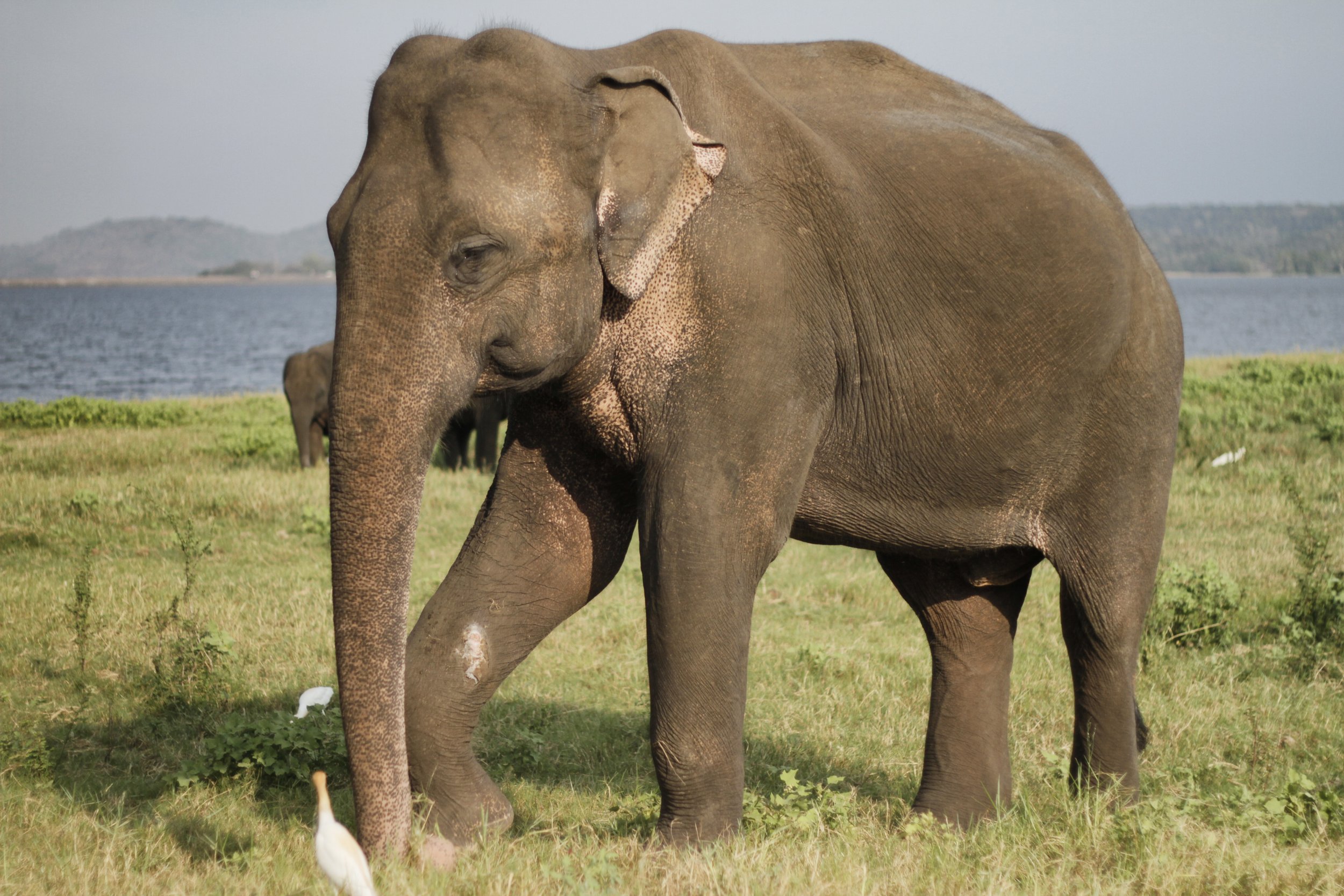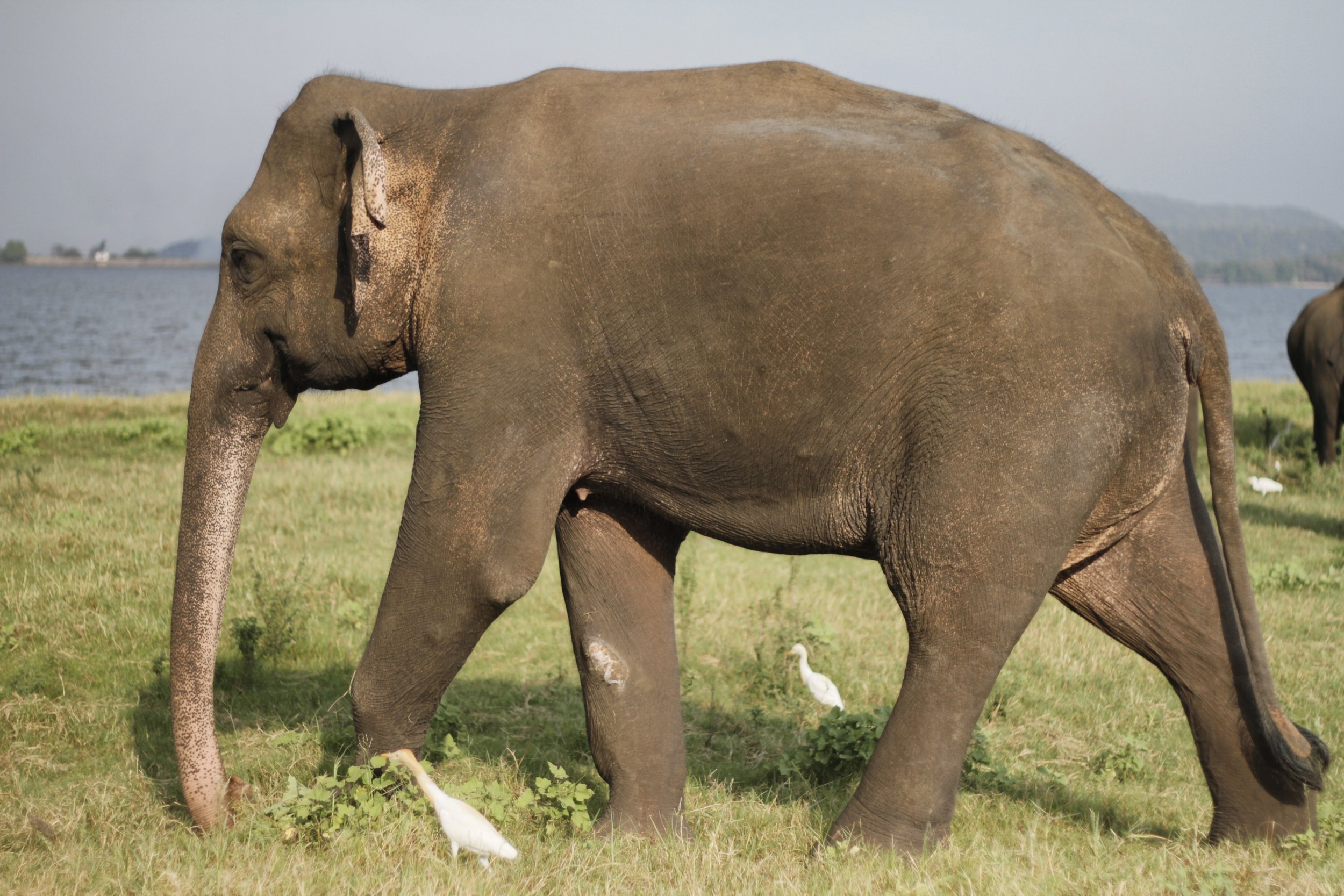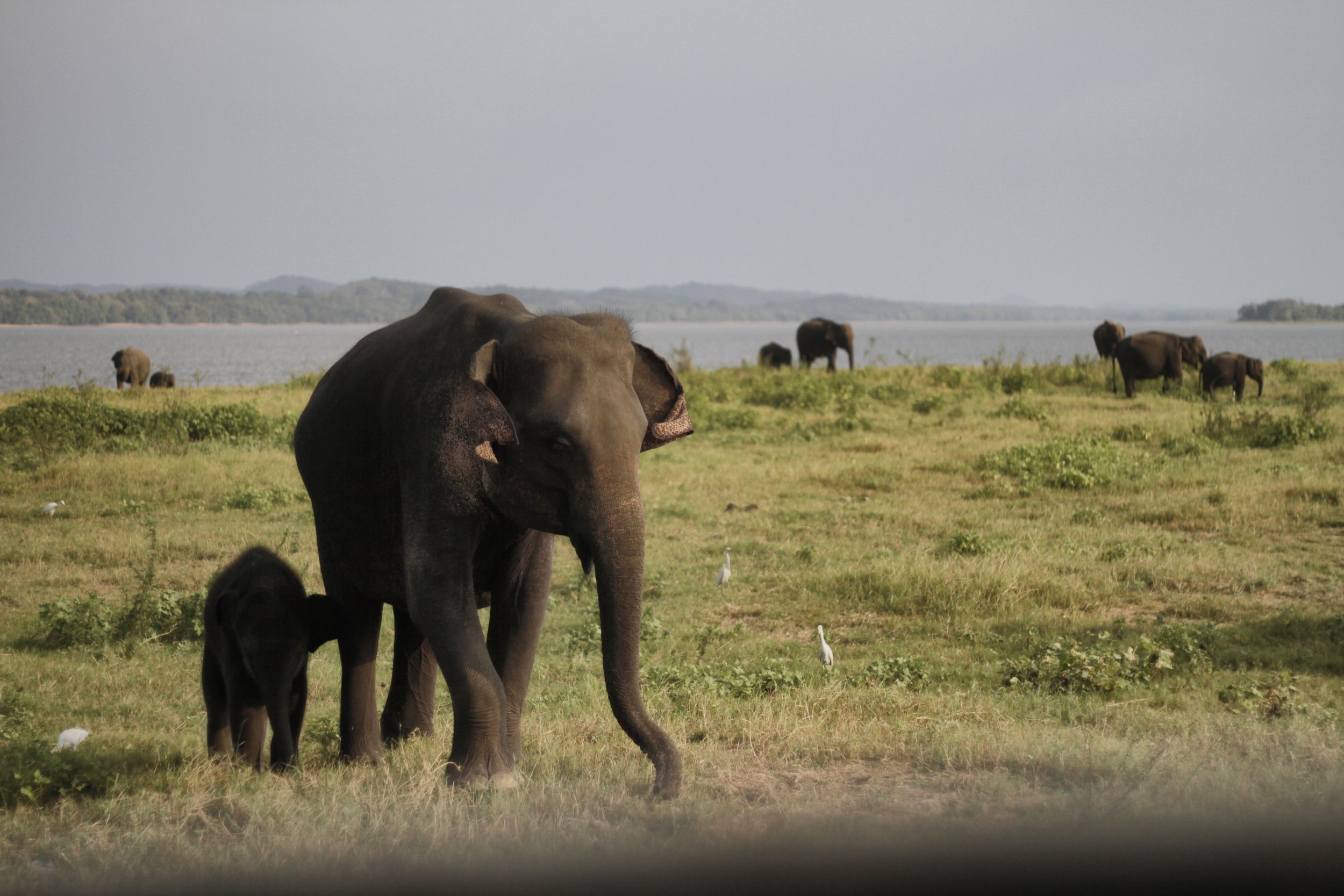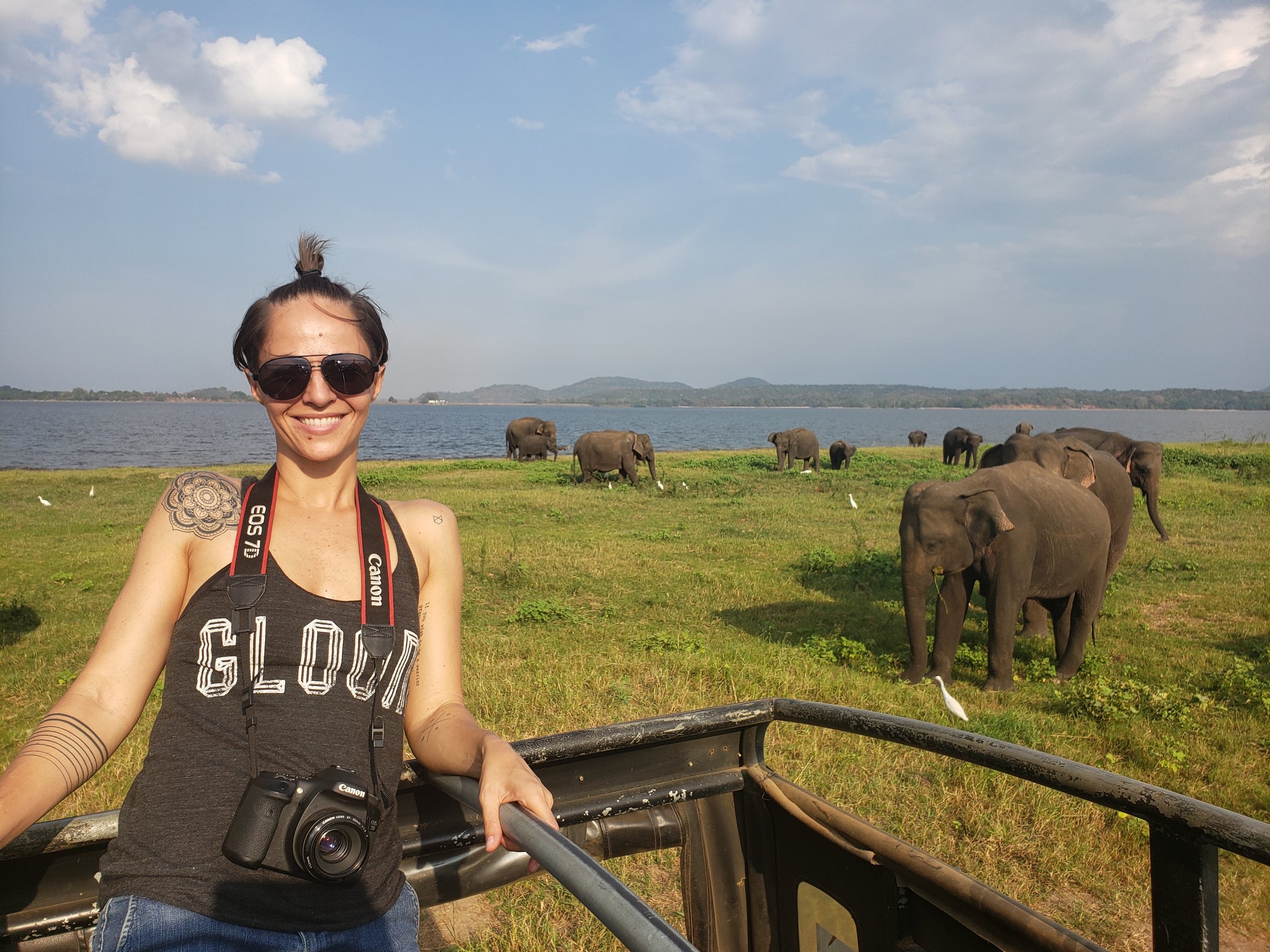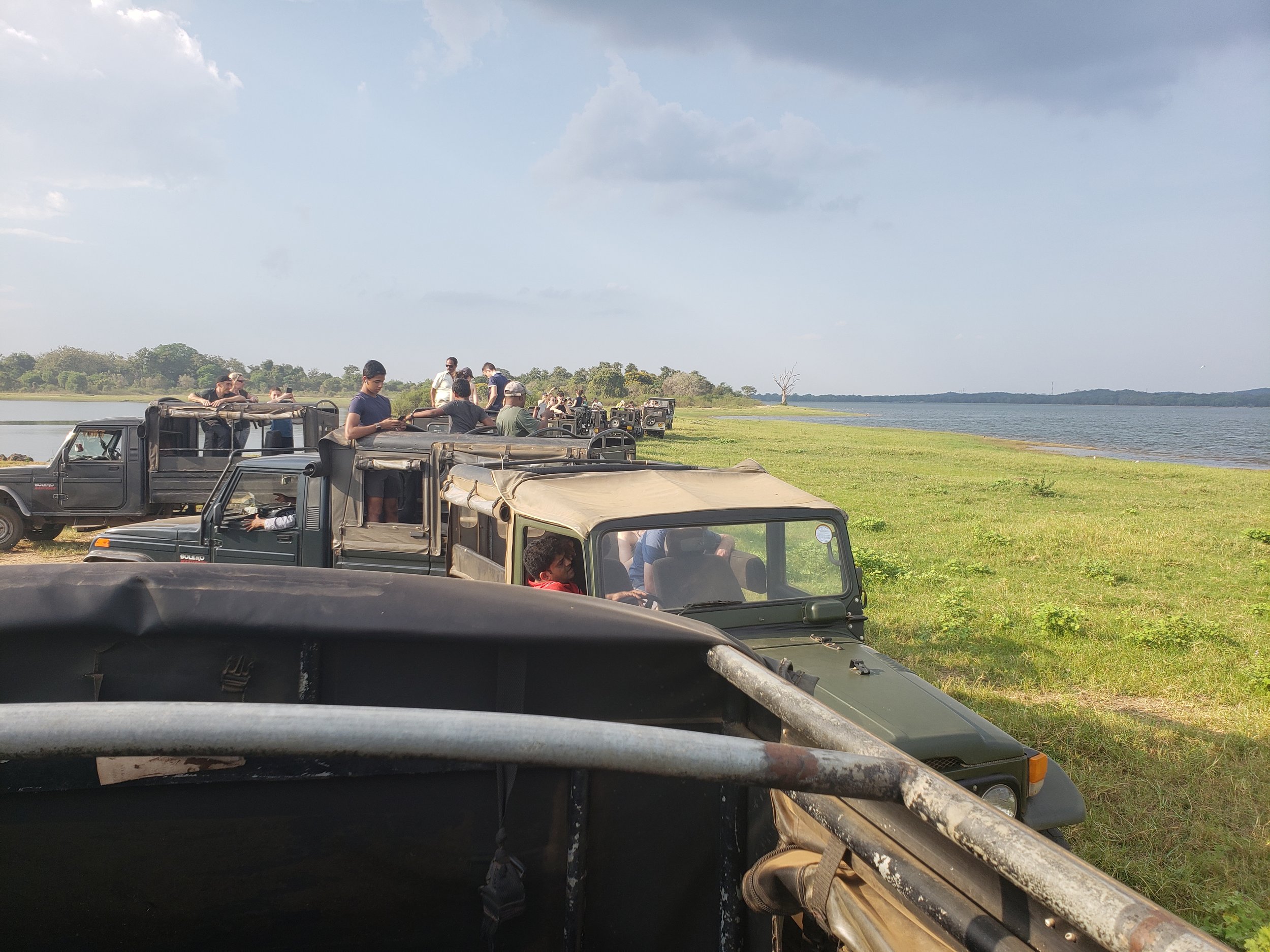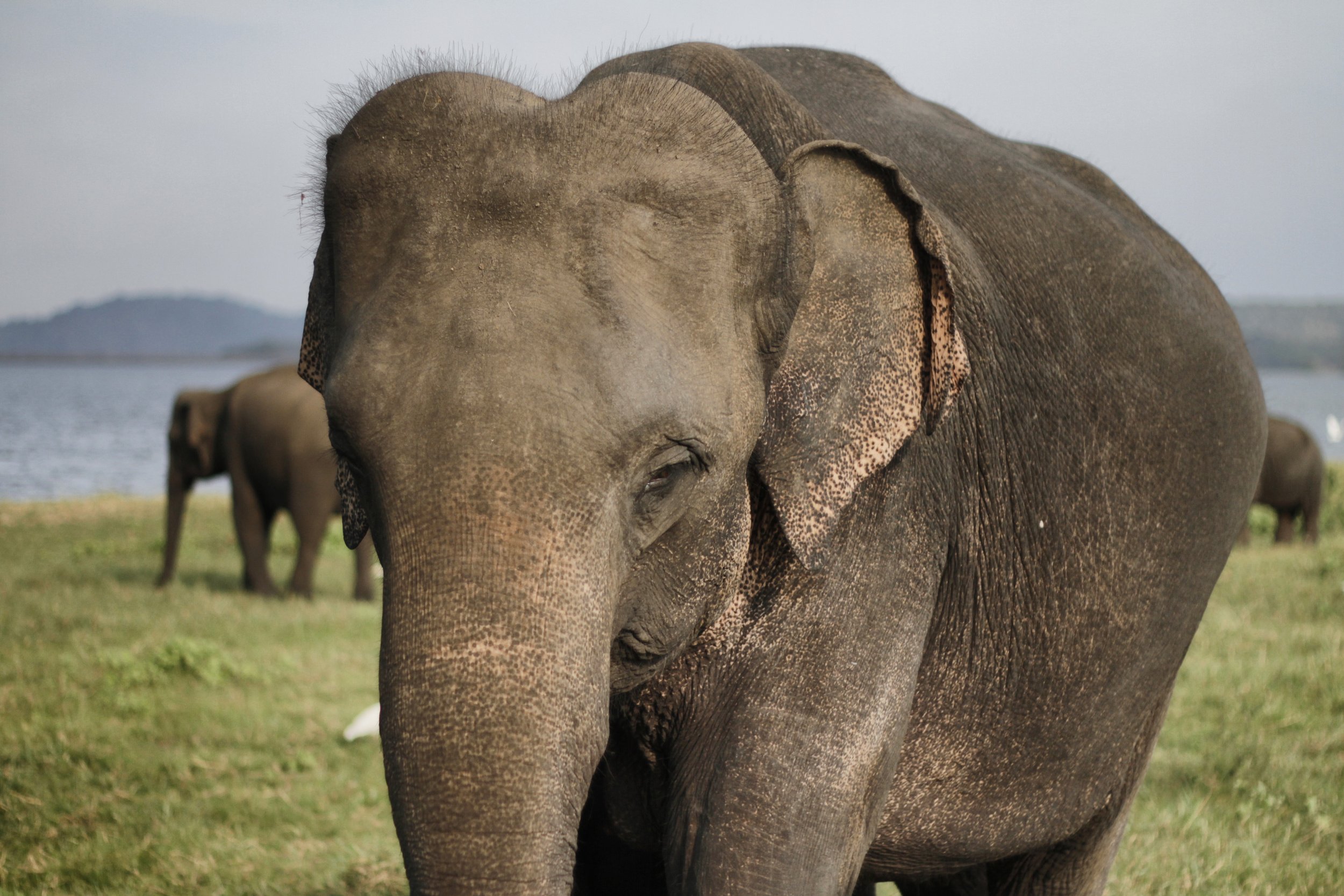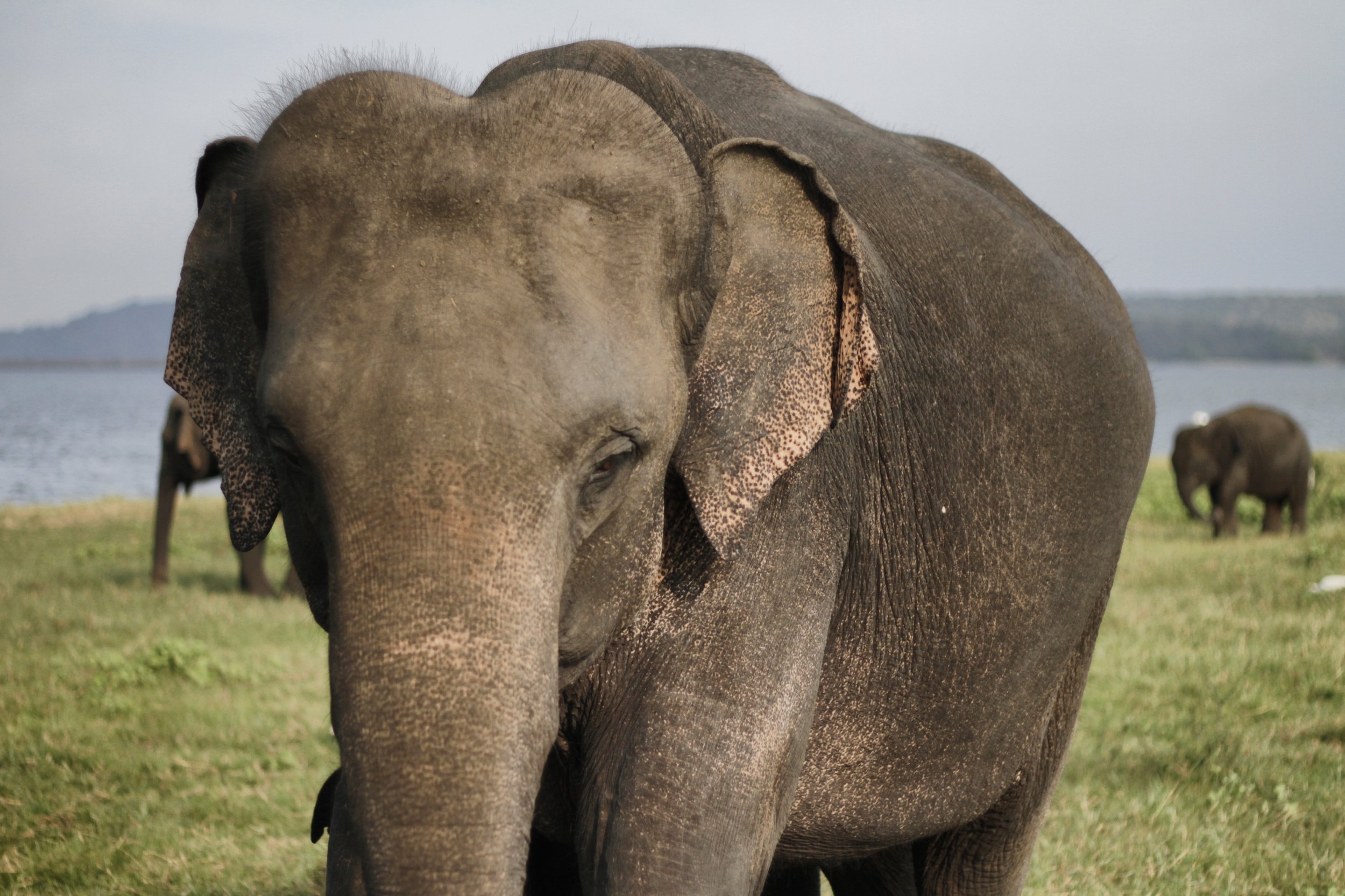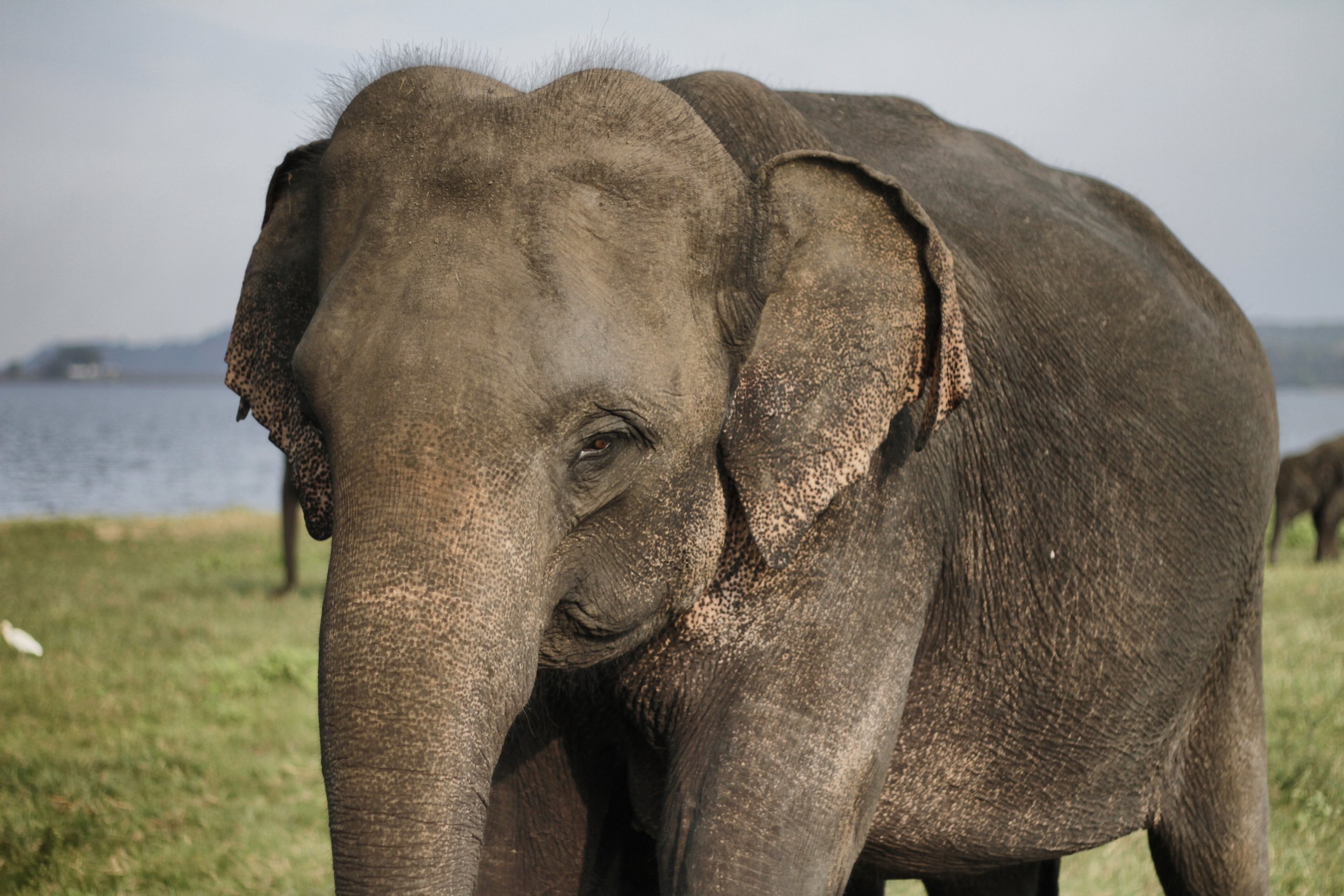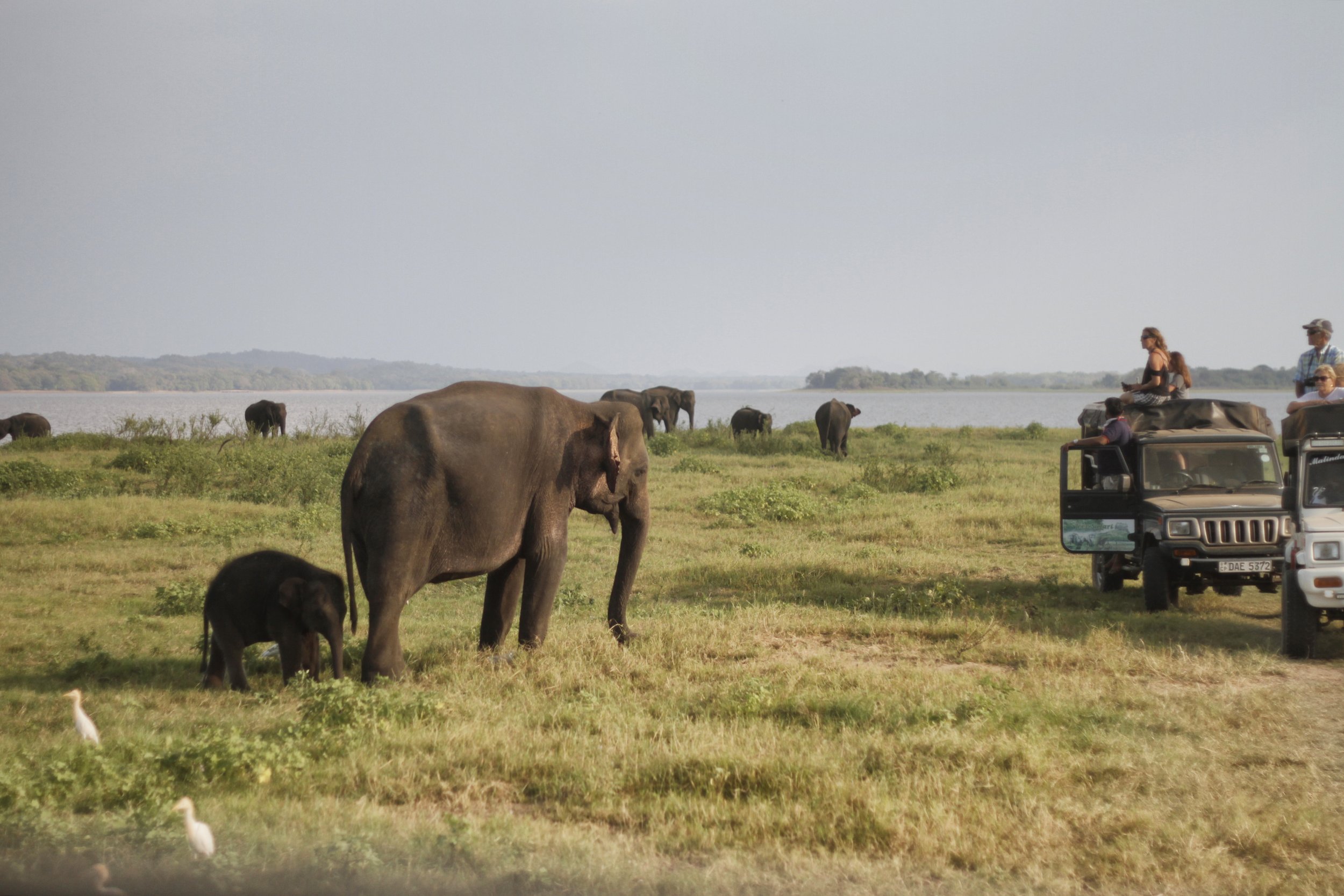Minneriya National Park, Sri Lanka (via Sigiriya)
Elephant Safari
Sri Lanka, formerly known as Ceylon and officially the Democratic Socialist Republic of Sri Lanka, is an island country in South Asia in the Indian Ocean. The nicknames, Pearl of the Indian Ocean and Teardrop of India, are due to this small nations natural beauty, extraordinary biodiversity and precious gemstones, along with its teardrop shape just off the coast of India. A country known for its diversity, Sri Lanka has is all: high temperatures, stunning landscapes, delicious cuisine, friendly people, rich culture and history and best of all, it’s budget friendly.
Minneriya is a small town in Sri Lanka famous for two things — the great Minneriya Lake built by King Mahasen and Minneriya National Park which is a popular spot for safari lovers due to its abundance of elephants. The area was designated as a national park in 1997, having been originally declared a wildlife sanctuary in 1938.
Traveling through the country for nearly three weeks began by heading north of its capital, Colombo, and circling the country clockwise. An incredible experience Elephant Watching in Pinnawala was up first, then on to Sigiriya to visit Lion’s Rock, an ancient rock fortress hailed as the Eighth Wonder of the World (so They Say), then the Ancient City of Polonnaruwa and now it was on to a real life elephant safari! Exploring Giant Buddha’s, Botanical Gardens & Fire Dancing in Kandy followed, then Nuwara Eliya, also known as the City of Light and Ella for its Epic Waterfalls, Train Rides & Jungle Mountains. The last two stops were Tissamaharama to visit Yala National Park and the quaint beach town of Mirissa for the nearby Iconic Old City of Galle, Whale Watching & Stunning Beaches.
Enter Minneriya National Park
Our private guide, Kamel, showed up at the hostel in a safari Jeep ready for our tour. A guided tour costs around Rs4,500 or just over $20 USD and afternoon tours offer a bit of relief for the elephants temperature-wise so it’s said to be more active than the mornings.
Minneriya National Park is a 40 minute drive northeast of Sigiriya and upon arriving it was a total frenzy. At first, I didn’t understand what was happening but soon realized the guide hopped out to purchase entrance tickets. Tickets cost another Rs4,000 each and once in our possession we were off, no need to wait for others as we had a private Jeep (would definitely recommend in order to have the best sight lines).
It was another 30 minute drive deep into the park until elephants started to emerge from the tall grass. The best part was the open air Jeep so we could pop our heads out to get a 360 degree view of the surrounding landscape. While driving it was quite rough and dusty but once stopped it was safe to stand up.
Experience My First Elephant Sighting
The first elephant I spotted was a tiny little guy off in the bushes by himself. It was so incredible to see an elephant in the wild and my first time. They tend to hide in the tall grass so if you hear a rustle, be patient and they will surely peak out from behind the bush.
Then we moved on to another little baby elephant and his mother. This little guy was quite shy and hid in the tall grass until he had enough courage to run over to his mother and hide behind her large frame. Eventually, he had enough exposure and took off again into the grass. What a little cutie.
Kamel, our driver, was incredibly kind and would stop every time an elephant emerged. We’d sit quietly in the Jeep, waiting for the enormous creature to slowly make a move or whip its tail back and forth to shoo the flies away.
Reach Minneriya Reservoir
Minneriya National Park is a beautiful location. It was declared a wildlife sanctuary in 1938 to protect the drainage basin of Minneriya tank, a reservoir made by an old civilization, the Anuradhapura Kingdom, around 276–303 AC. King Mahasena ordered a dam built across the Minneriva River creating the lake.
The reservoir covers 4,670 acres of land and supports its inhabitants including 24 species of mammals, 160 species of birds, nine species of amphibians, 25 species of reptiles, 26 species of fish and 75 species of butterflies.
The National Park itself is approximately 22,000 acres and is mostly visited by tourists looking for elephant sightings. The Minneriya reservoir helps sustain a large herd of elephants who are attracted to the grass fields at the edges of the water during dry season. Elephants benefiting from the areas food and shelter gather in numbers of 150-200, with some reports as high as 700.
Get Up Close & Personal With a Hungry Elephant
Here you can see how close we were able to get to the elephants. We never felt too close or in the way but definitely up close and personal. Word has it that elephants have been known to charge vehicles if they feel anxious, especially when protecting a young one.
Many of the elephants were using their trucks to spray grass onto their backs so I did a little research to figure out why. Here’s what I discovered about the amazing creatures:
Asian elephants are slightly smaller than African elephants and have proportionally smaller ears. Their skin is normally dark grey or brown but they often have pink or yellow marks on their face, ears and trunk.
Asian elephants weigh about 6 tons or 12,000 pounds and African elephants have the largest brain in the animal kingdom, weighing up to 11 pounds.
Adult elephants spend about 16 hours a day eating, requiring up to 650 pounds of food and 42 gallons of water every day.
Elephants have six sets of molar teeth which they depend on for survival. When the last set is lost, the elephant is unable to eat and eventually dies of starvation.
Elephants walk at about four miles per hour and are able to swim long distances. However, they are the only mammal that can’t jump. Elephants have been clocked running at 15 miles per hour but it’s believed over a very short distance one can run up to 25 miles per hour.
Elephants have very sensitive skin and use mud as a form of sunscreen. They need to take regular mud baths in order to protect themselves from sunburn, insect bites and moisture loss. (Assuming spraying grass helps them cool in the hot summer sun.)
The average life span of an elephant is 50-70 years but the oldest known elephant was 86 years old when he died.
Female elephants are pregnant for two years, the longest gestation period of all mammals and babies are born at a staggering weight of 265 pounds.
Elephant feet are covered in a soft padding that helps to support their weight and prevents them from slipping, while also dulling the sound of their footsteps. As a result, elephants can walk almost silently, despite their huge weight. Elephants also use their feet to listen to the rumblings made by other elephants through vibrations in the ground.
An elephant’s trunk is an incredible tool. Besides being a long nose used for smelling, breathing and trumpeting, it’s also used as a hand to grab things and is sensitive enough to pick up a blade of grass or strong enough to rip branches off a tree. The trunk is also used as a huge straw. Elephants can suck up to three and a half gallons of water a time into their trunks and then blow it into their mouths to drink. When bathing, they use their trunk to spray themselves with water and mud. It total, an elephants trunk has 40,000 muscles!
Spot an Injured Elephant
Unfortunately, we spotted an injured elephant off in the distance. Eventually, he came closer and it looked like the elephant had gotten into a fight or had some kind of condition. Hopefully someone from the park was able to help nurse him back to health.
At least it seemed like he had a few bird friends hanging around to keep him company.
Discover More Elepants in the Grassy Landscape
We continued on through the park, stopping each time the trail got backed up with other Jeeps or when we spotted a new group of elephants. At first, we saw a few small groups and then larger groups as we made our way through the park.
Elephants weren’t the only animals we spotted. There were also many birds like eagles, pelicans and peacocks and even water buffalo. The guide said we got really lucky because all the elephants were really close to the Jeep.
We also didn’t experience any misbehavior like guides chasing elephants or pressuring them in any way like I had read before the visit. It was actually more of the opposite, if elephants got too close the Jeeps would back up to give them some breathing room.
The reservoir was a beautiful backdrop for the elephants and surrounding wildlife.
Surround Yourself with Beautiful Elephants
Eventually, we made our way to the last stop of the tour where all the Jeeps seemed to be lingering, and for good reason. It was a mecca for elephants.
We parked, far off at first, and then would readjust as other Jeeps left but we must have sat there for at least 30 minutes or more, admiring the elephants surrounding us in every direction. It was as if they had no idea we were there and not a care in the world other than stuffing their faces with grass.
One important thing to note was that each time we stopped the tour guides would quickly shut off the Jeep engines as to not disturb the elephants. The Jeeps were pretty heavy duty and had engines that were quite loud so once they were shut off we sat there in silence with them, looking into their curious eyes, batting the longest and most beautiful eyelashes I’ve ever seen.
Toward the end of our time, one of the large mothers came up fairly close to our Jeep. I maneuvered myself around, trying to get the best angle from my camera as there was something about this elephant and I couldn’t take my eyes off her.
Overall, out on this little peninsula there had to be at least 50 elephants. It was one of the most magical experiences I’ve ever had. They stood around in small groups, silently enjoying the sunny weather and gulping down mouth fulls of grass. They seemed happy and peaceful, which was a relief to me.
Selfishly, I didn’t want to leave and could have sat there all day admiring these beauties but eventually we had to push on to make room for others to enjoy. Farewell!
But first, a few last photos of my favorite mama. I mean, come on. It’s like she’s ready and waiting for her photoshoot.
We started back through the park toward the exit and this time it was even more bumpy and dusty so good thing I had a scarf to wrap around my eyes and mouth or I would have suffocated in the dusty air.
Kandy, a large bustling city located centrally in Sri Lanka, would be the next destination and about a two hour drive from Sigiriya. The city is home to a biodiverse rainforest and rolling hills covered in tea plantations. It’s also well known for the picturesque Kandy Lake, giant Buddha overlooking the hills and the Temple of the Tooth shrine, celebrated with an annual procession.


